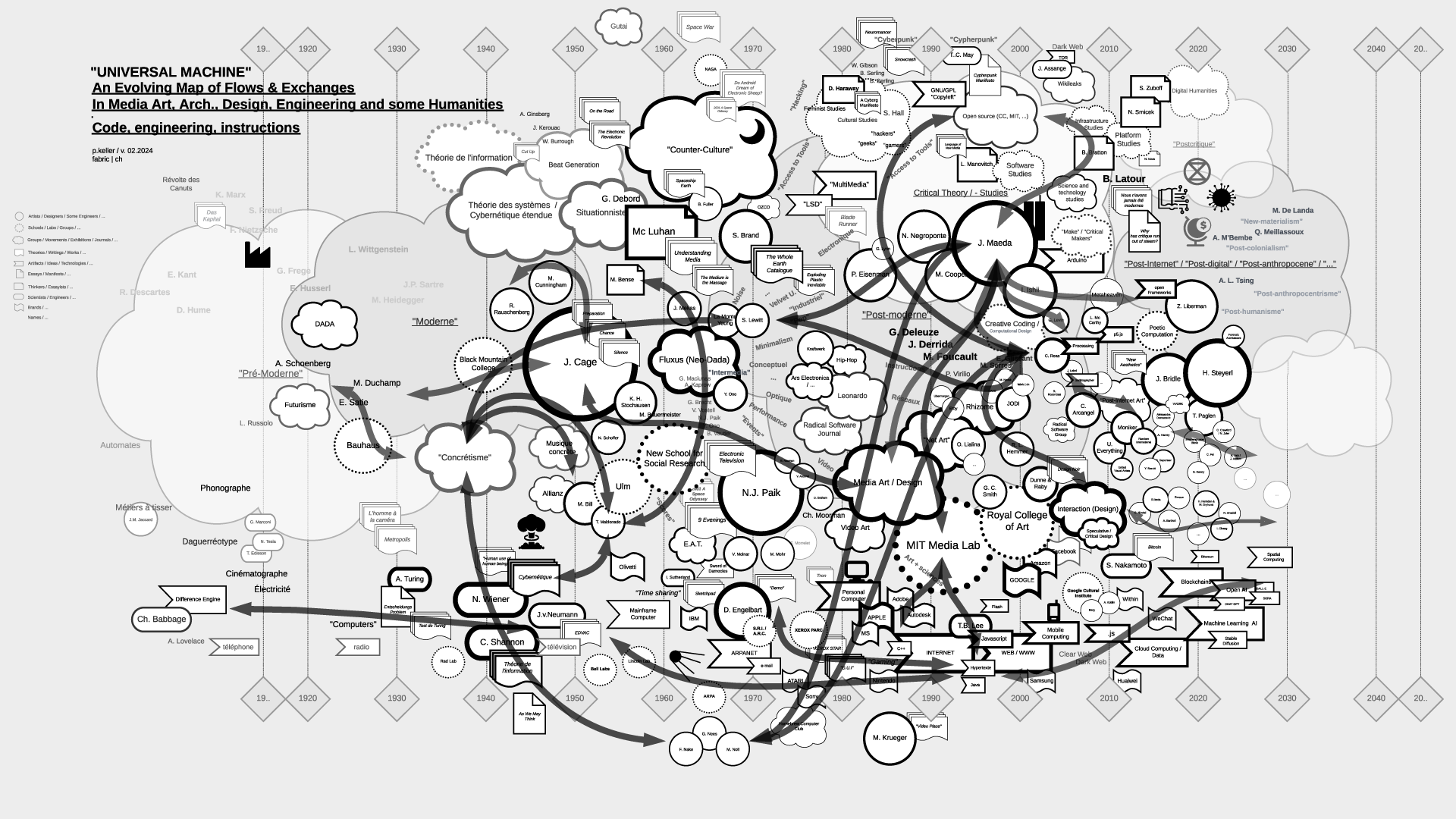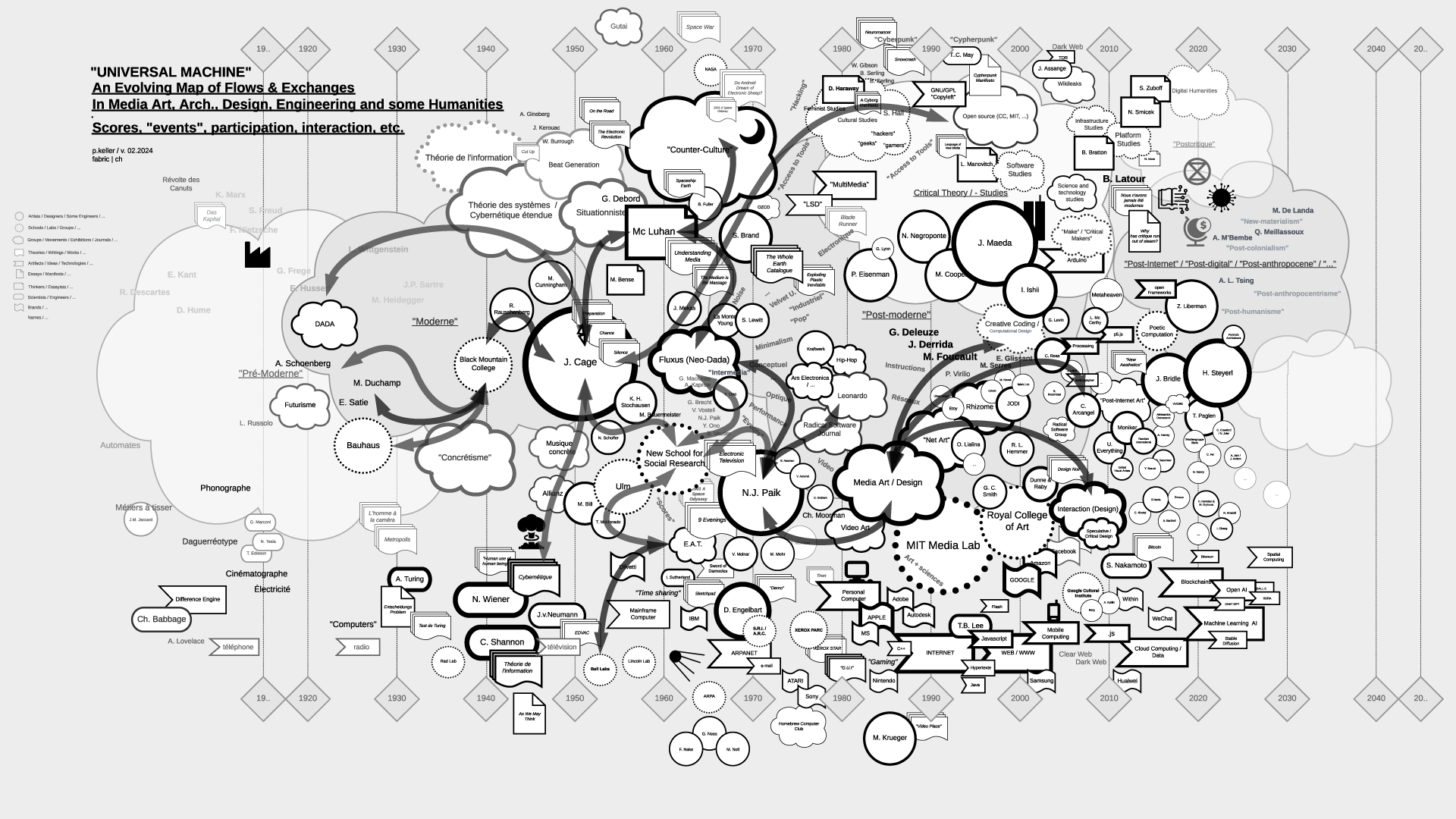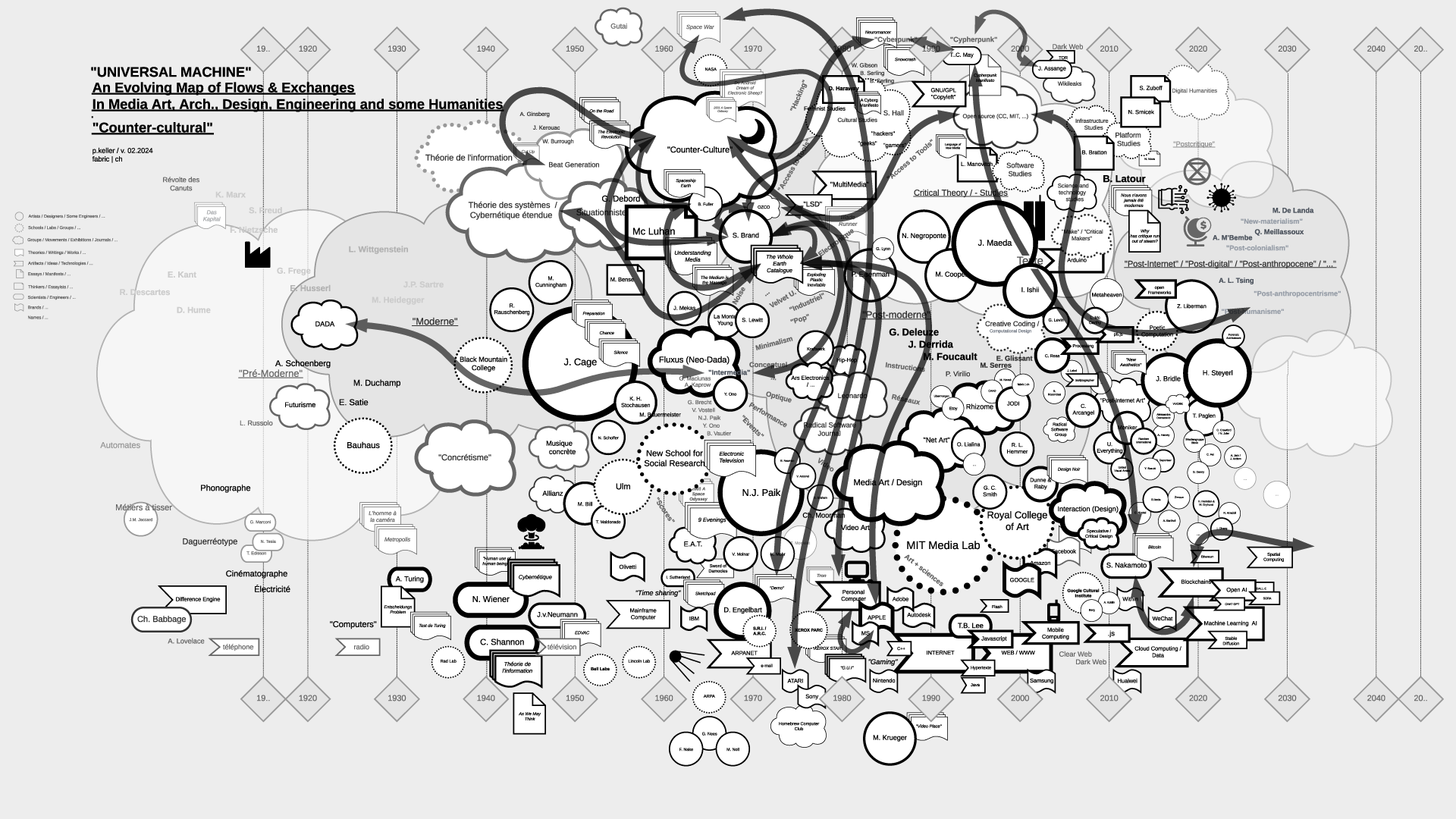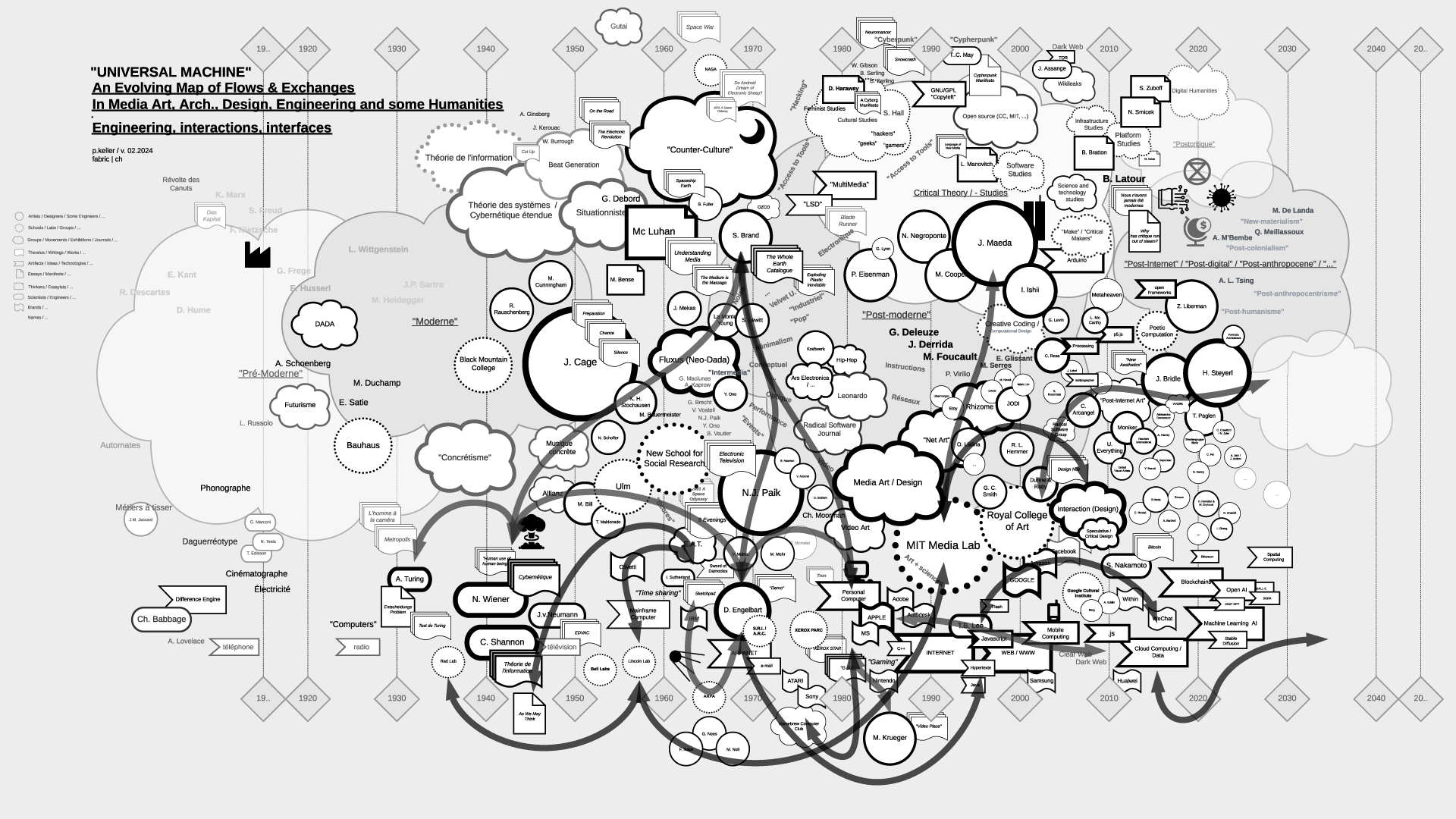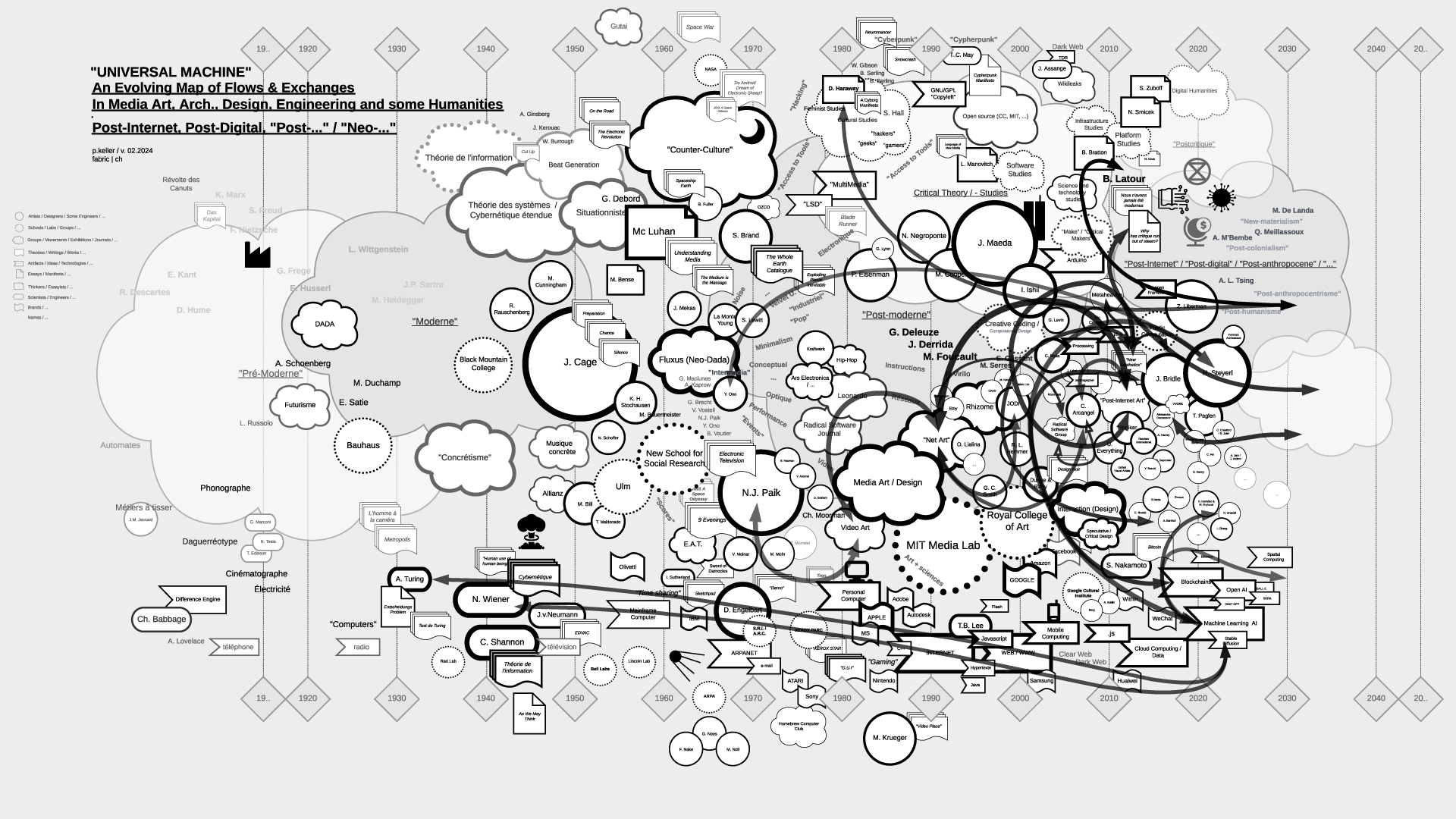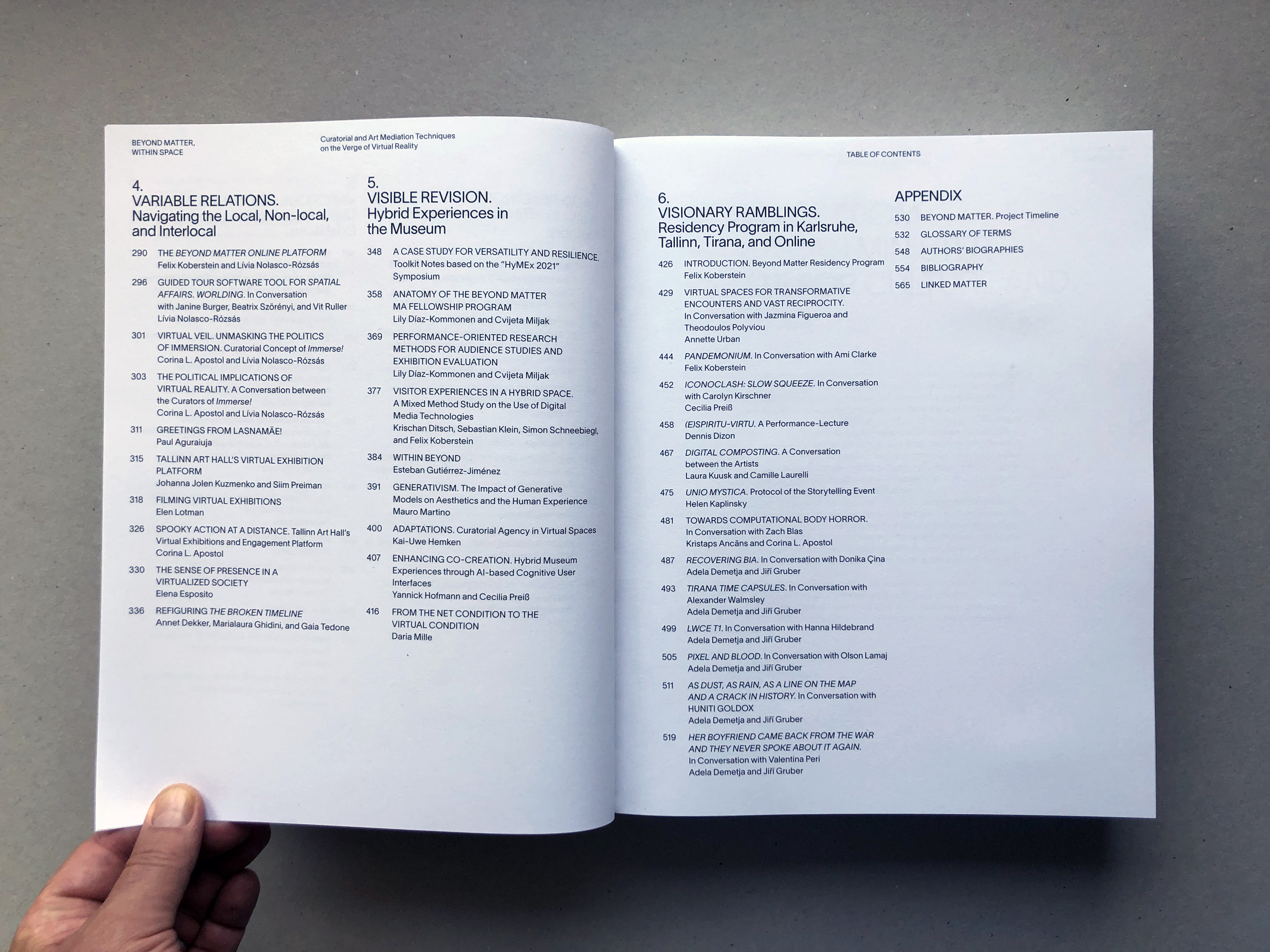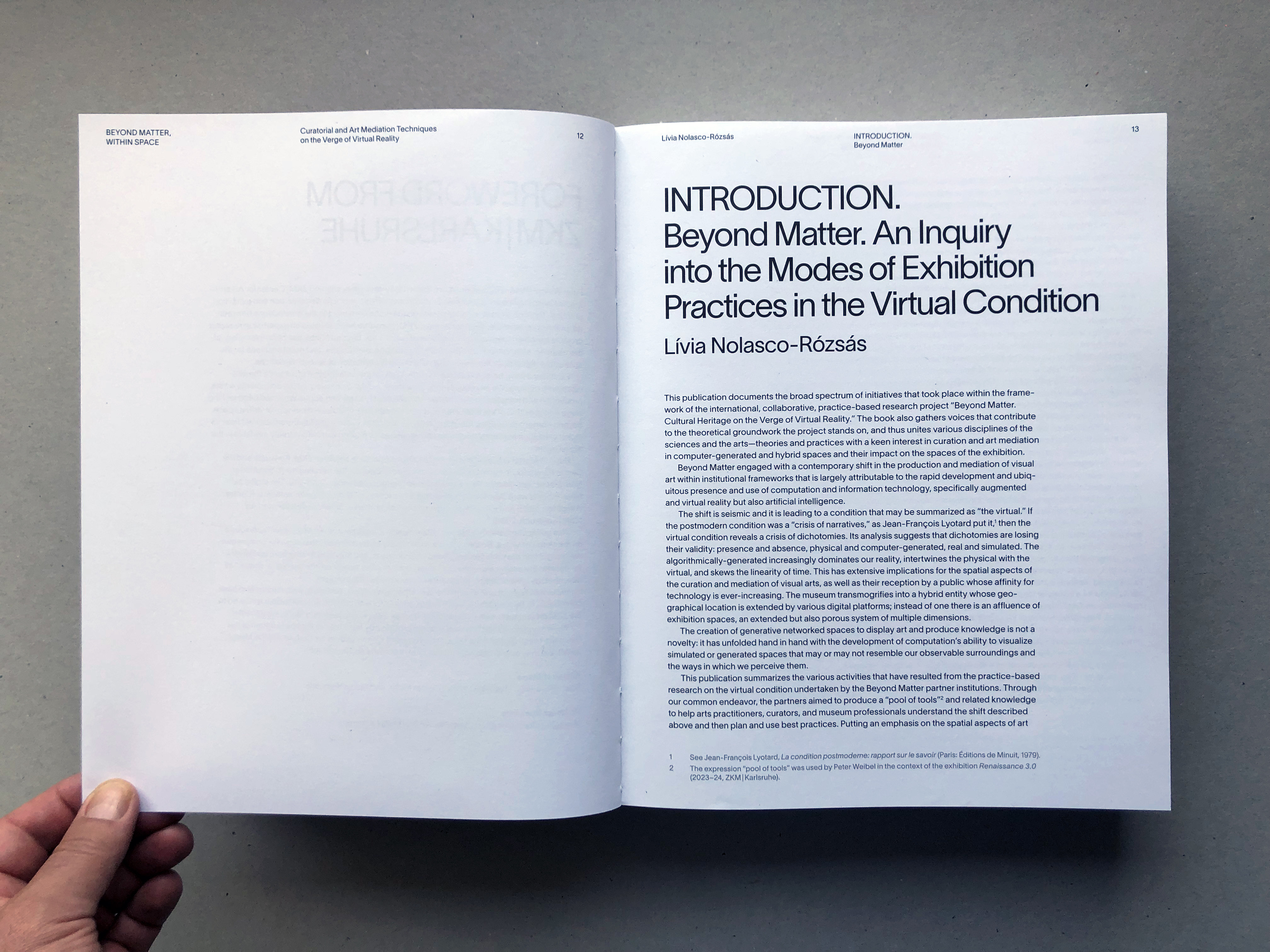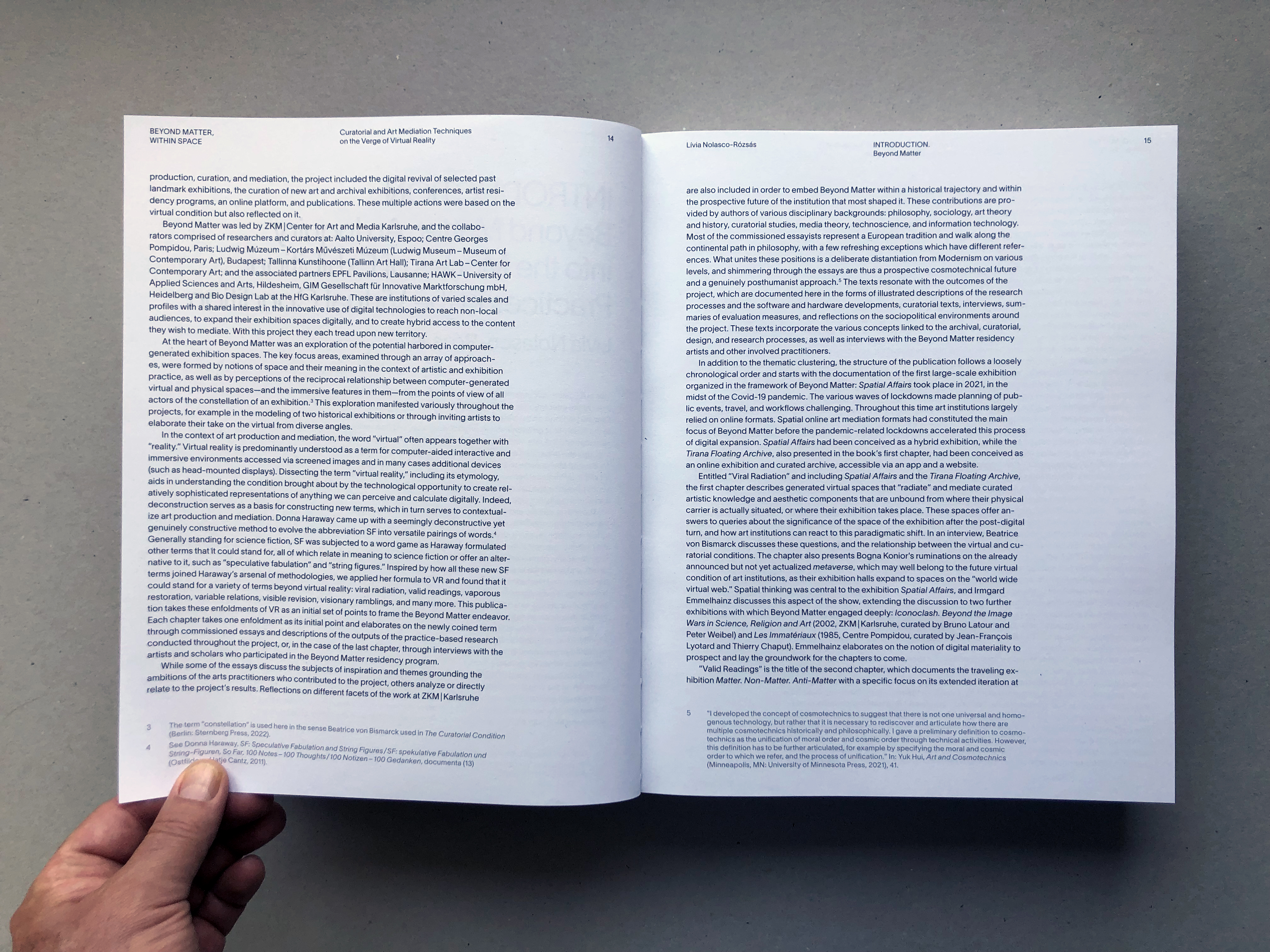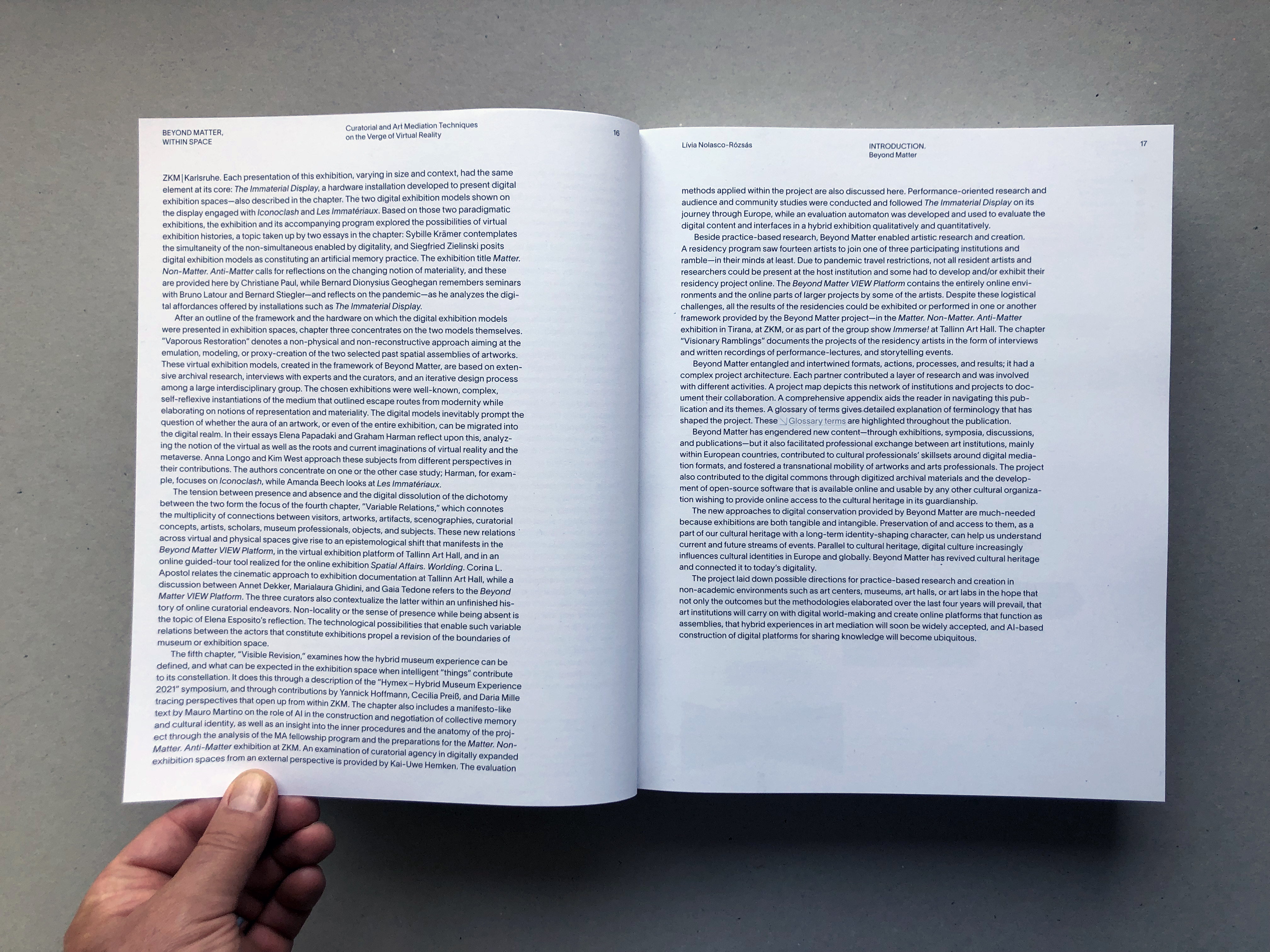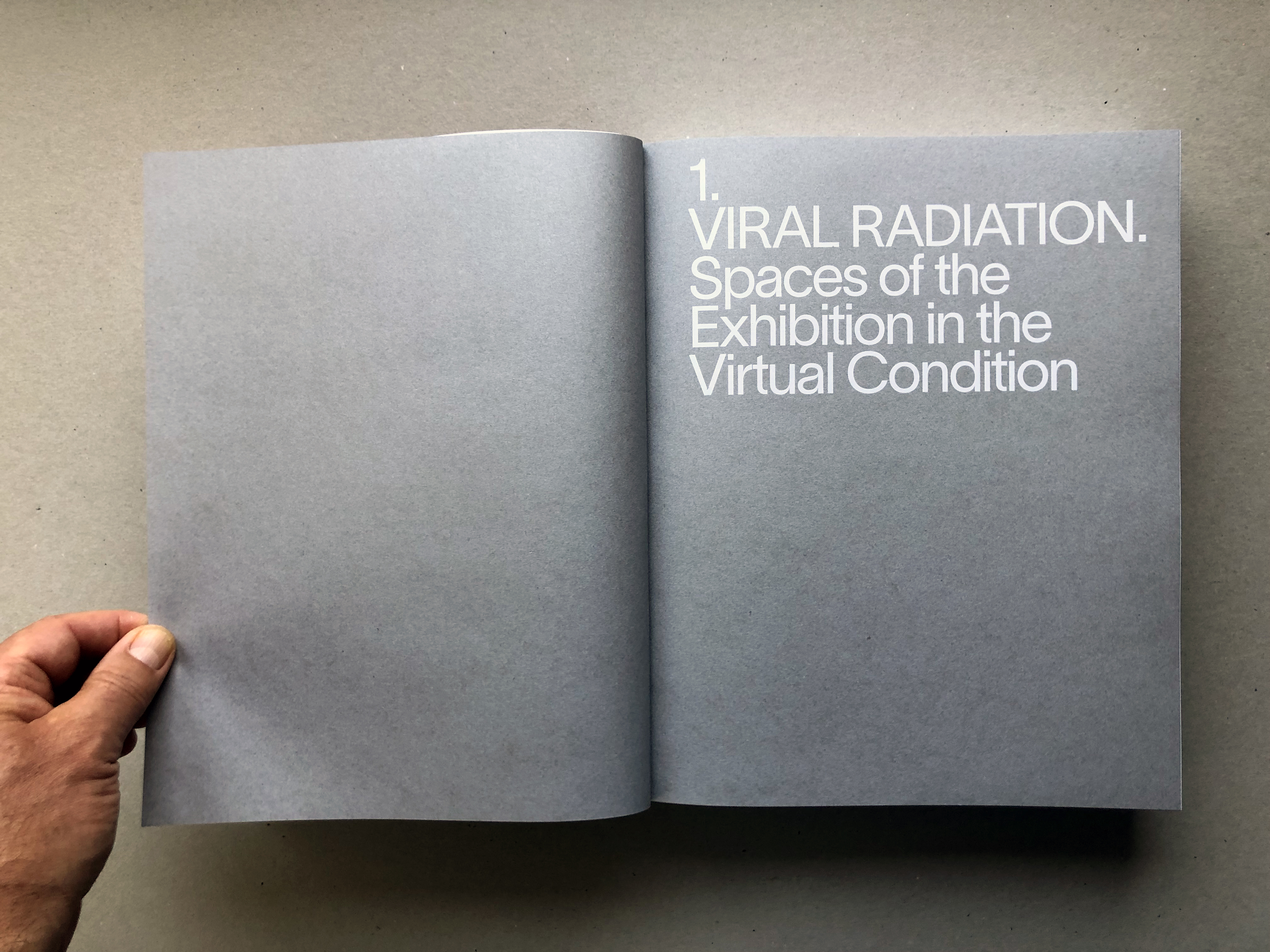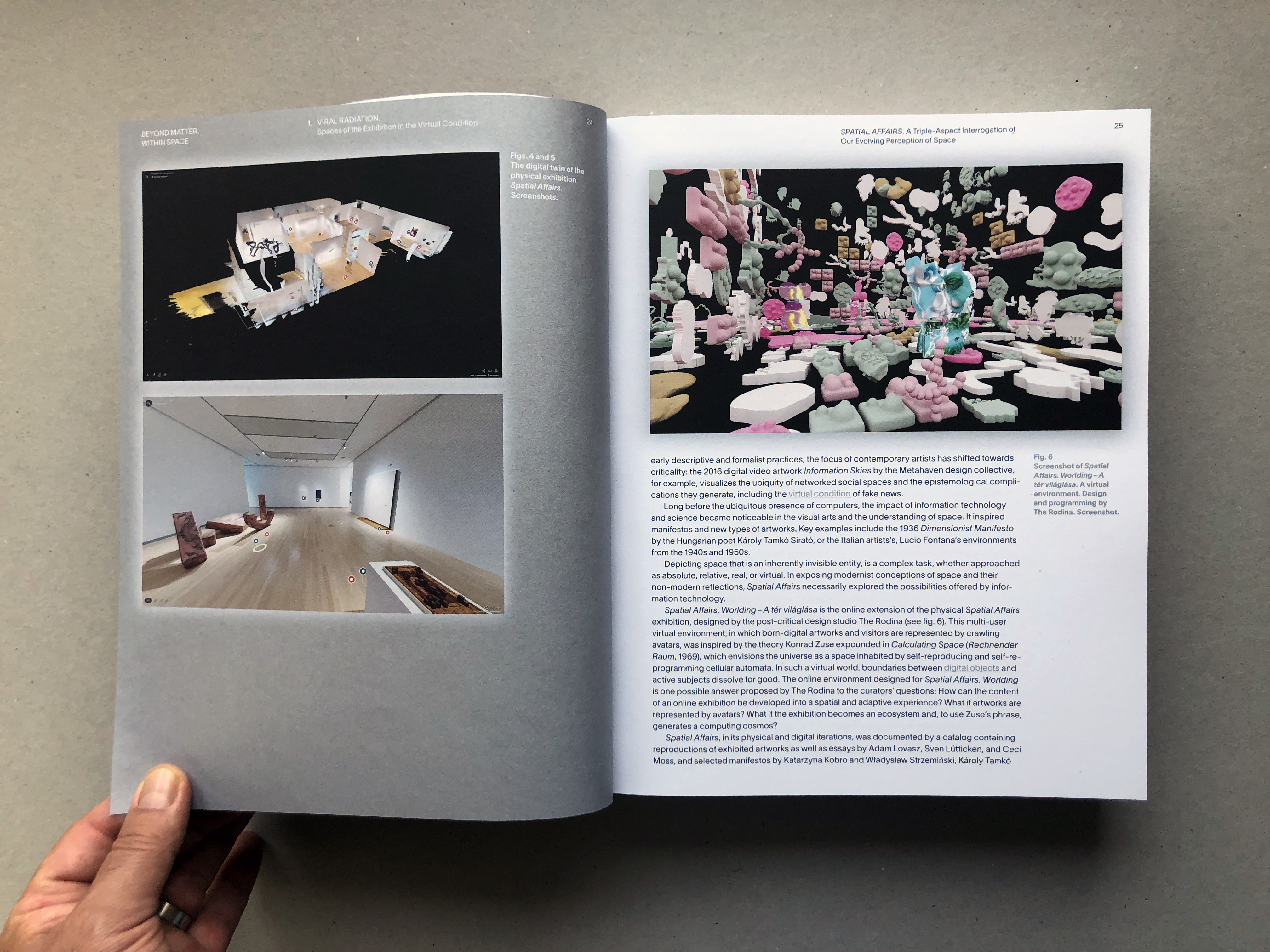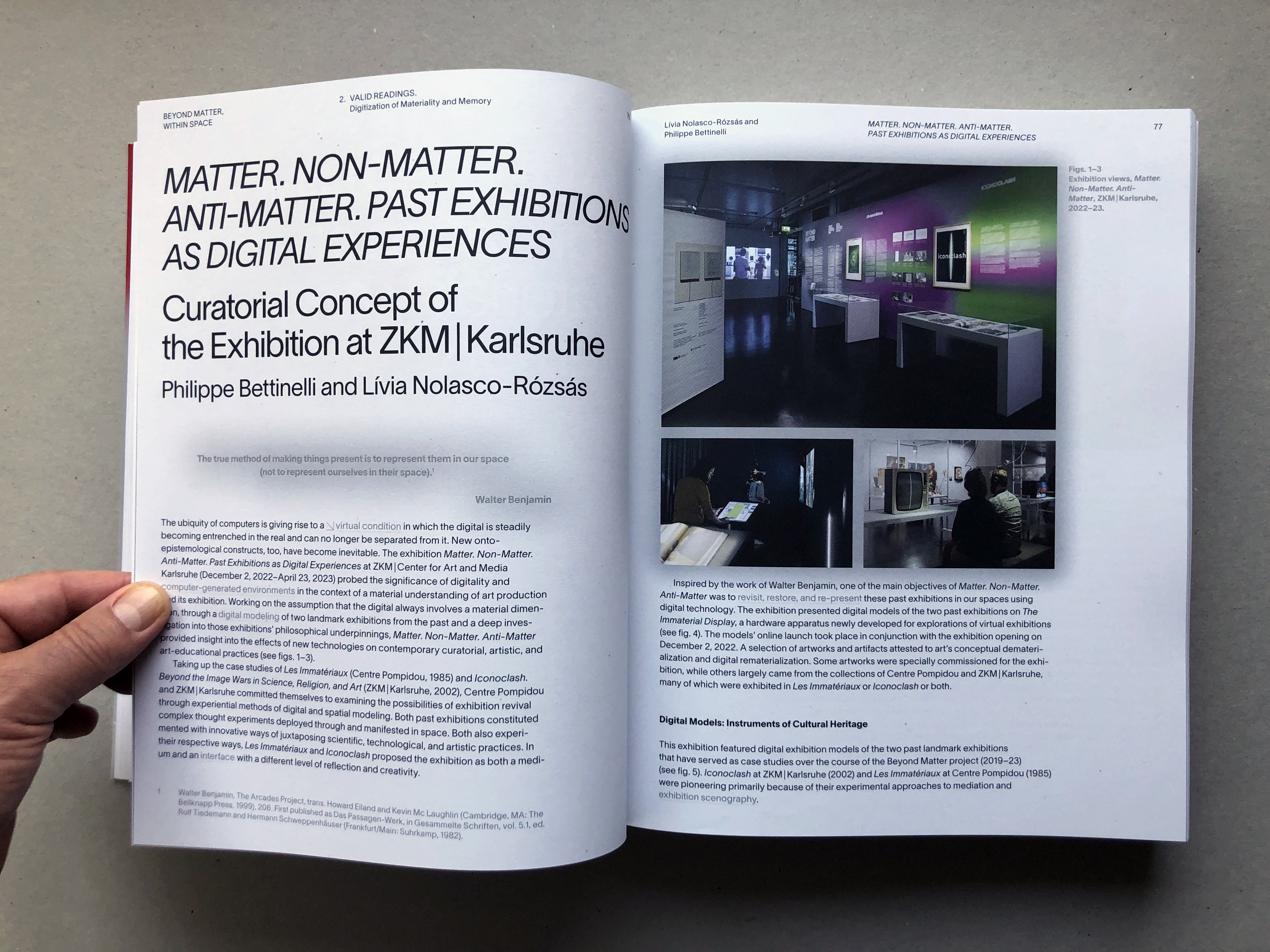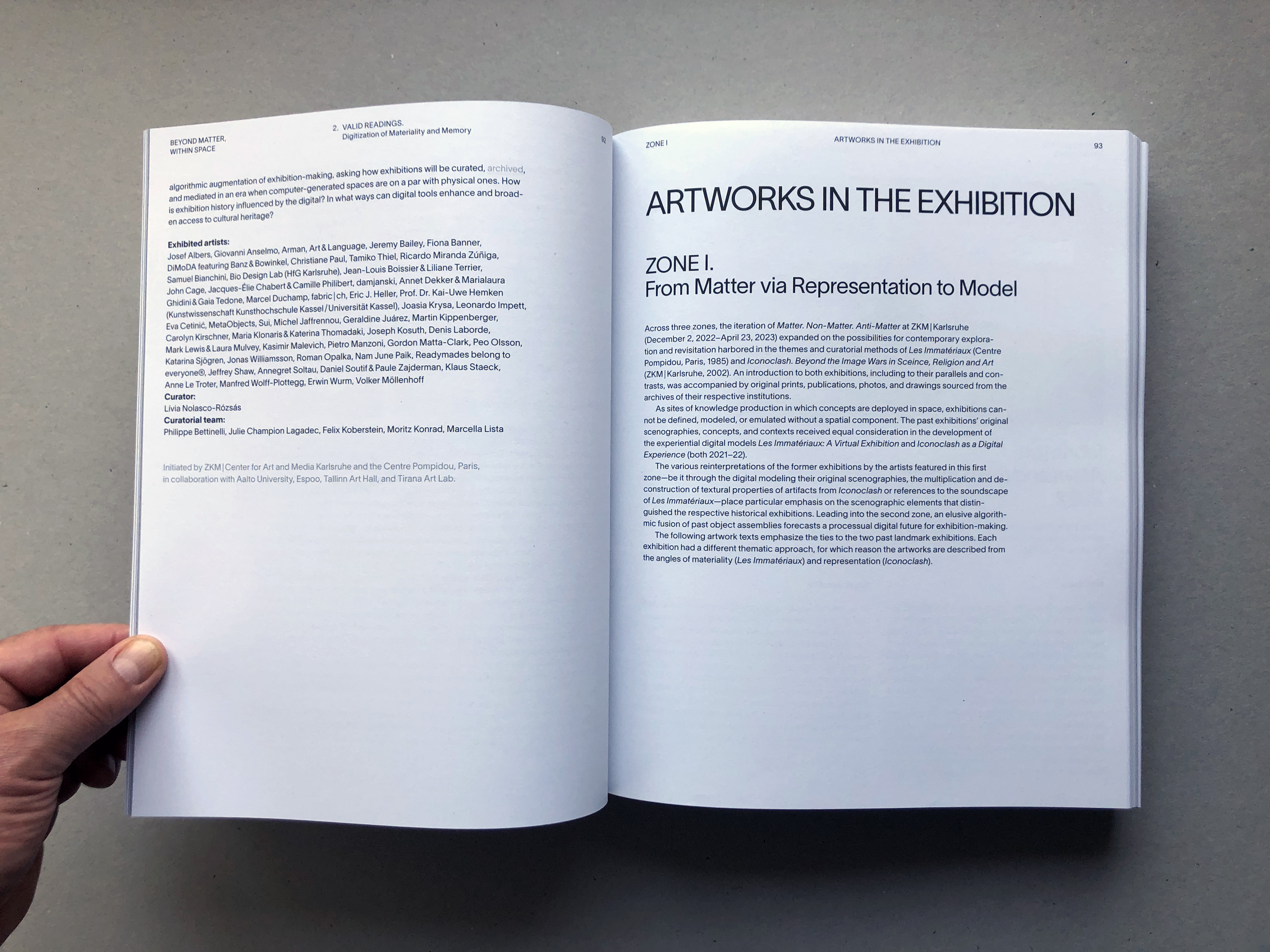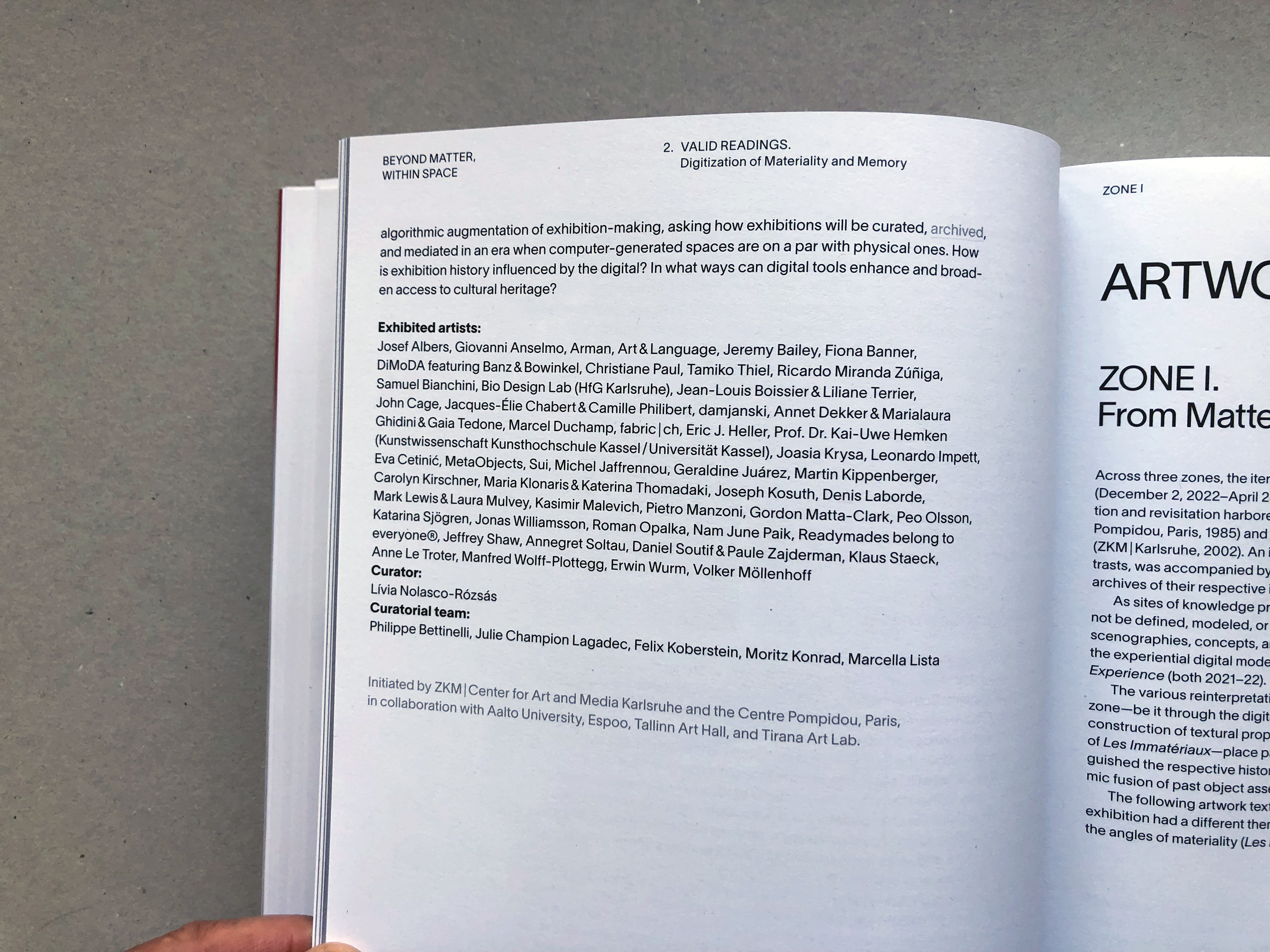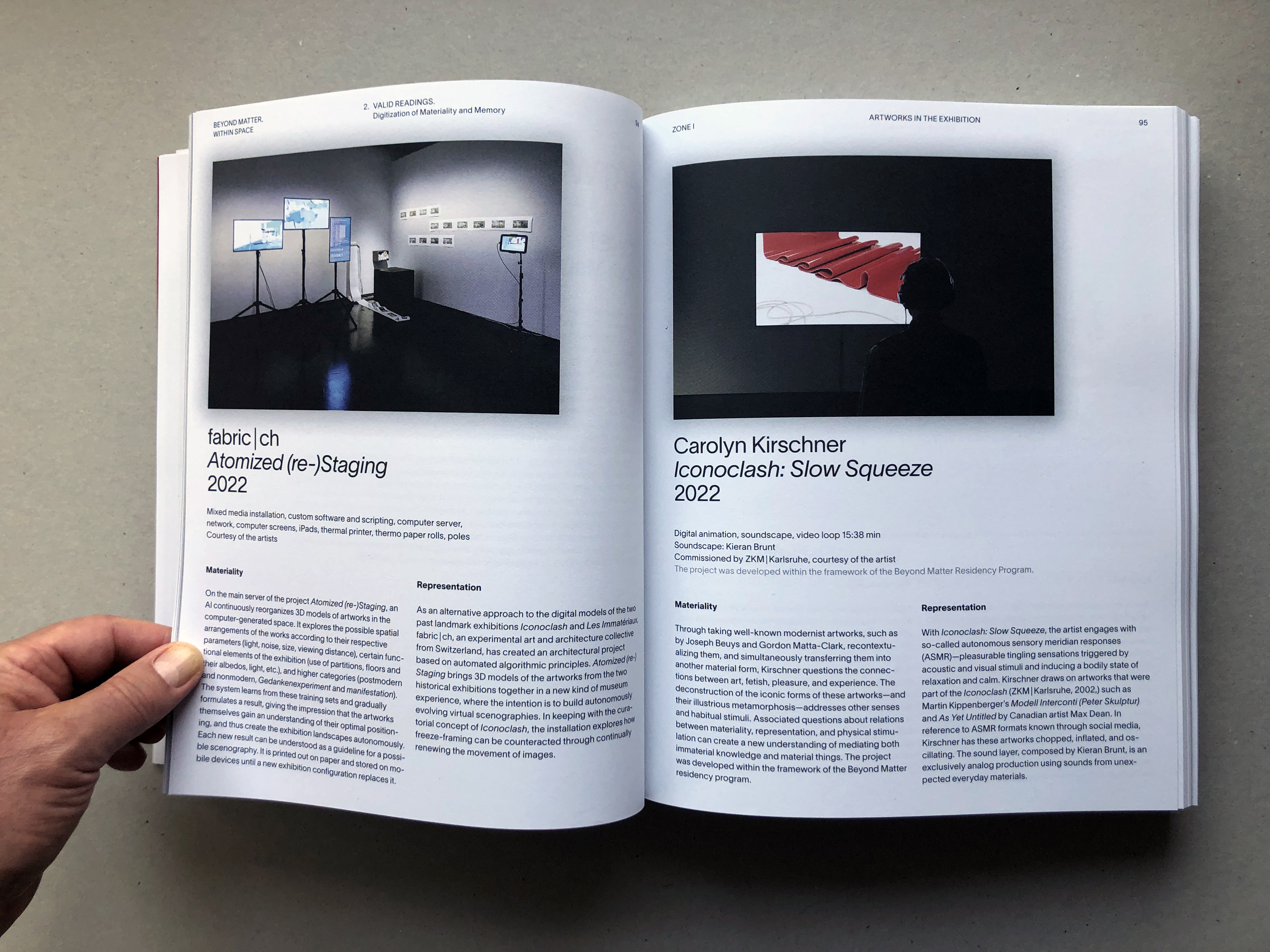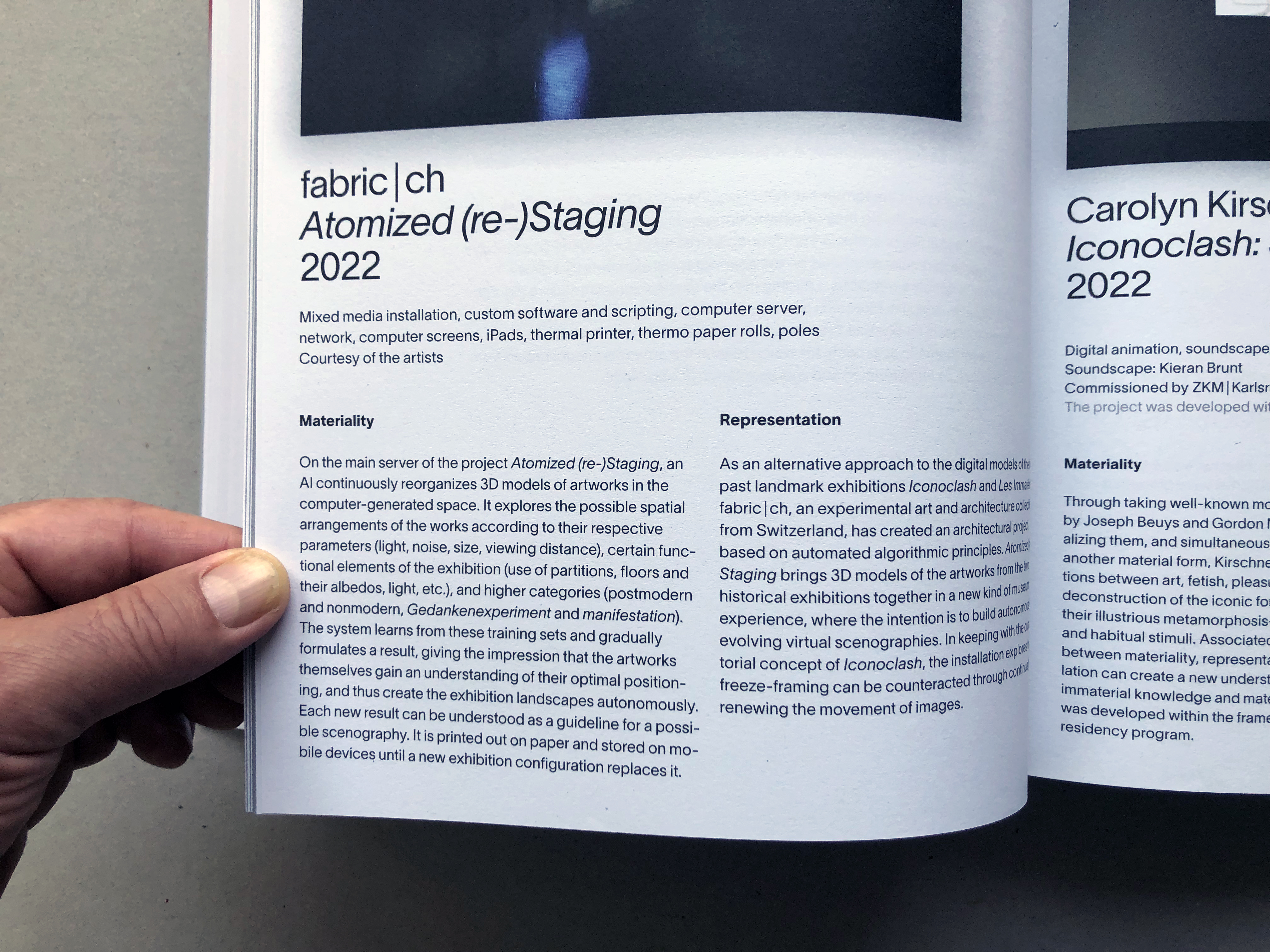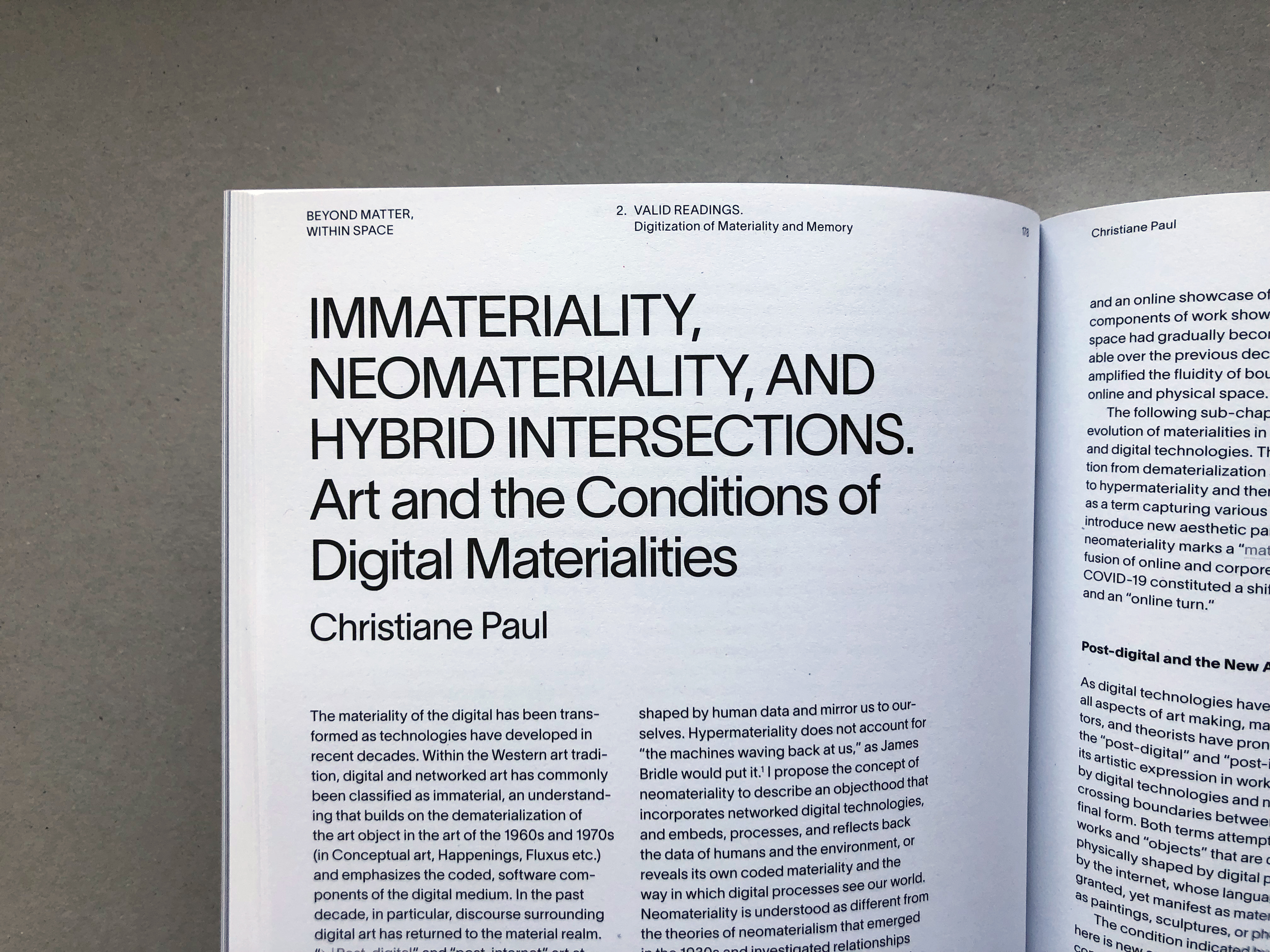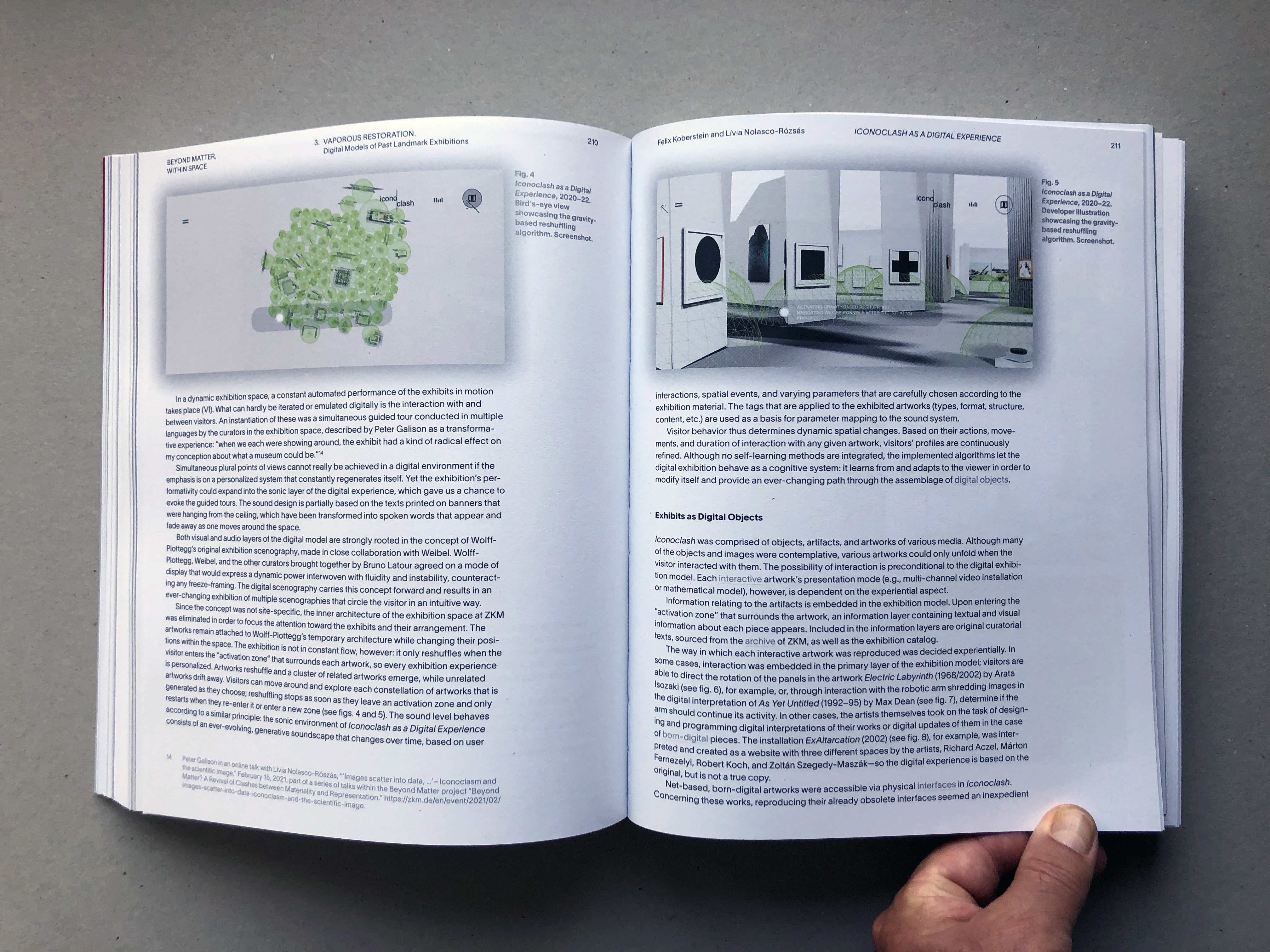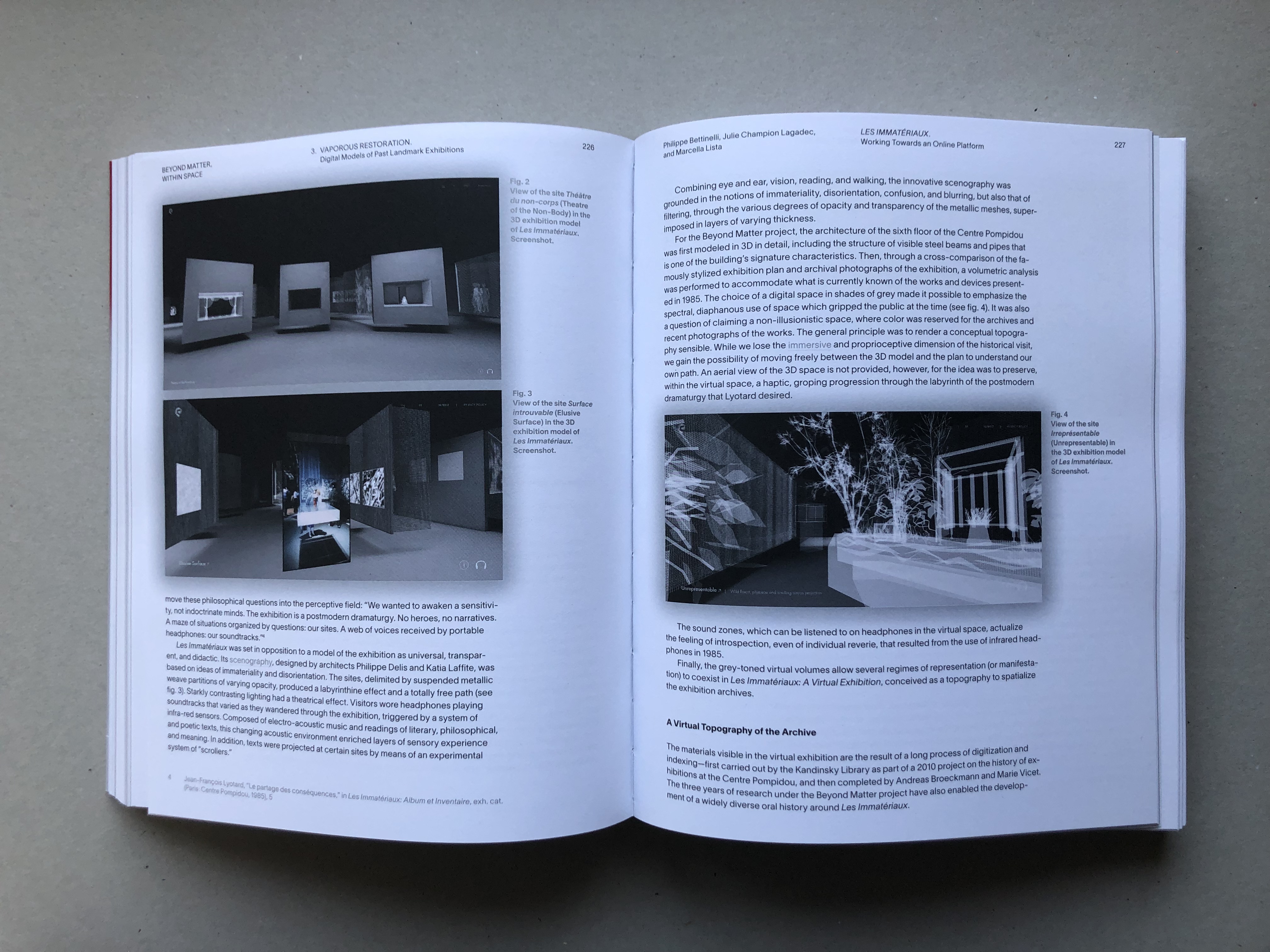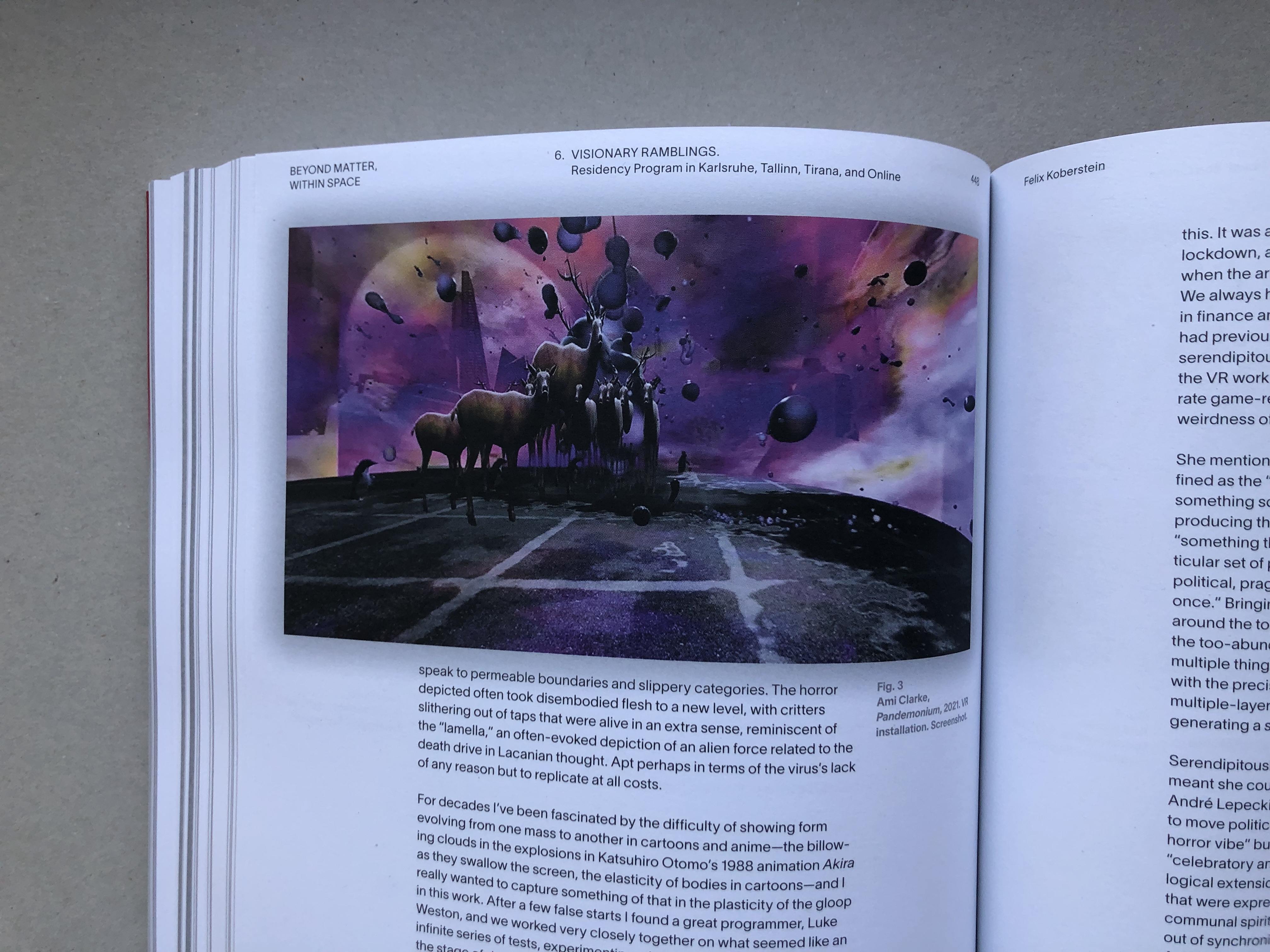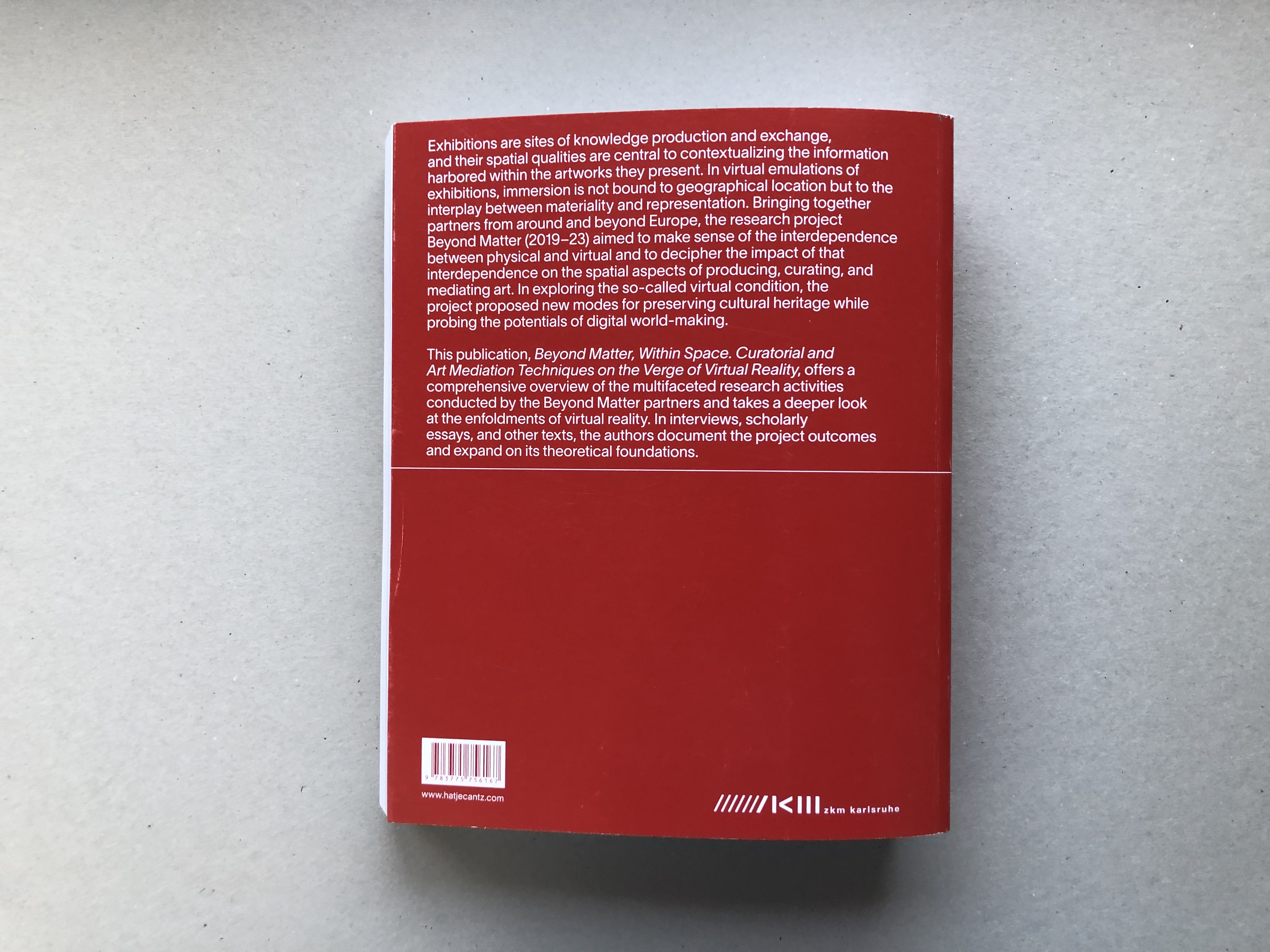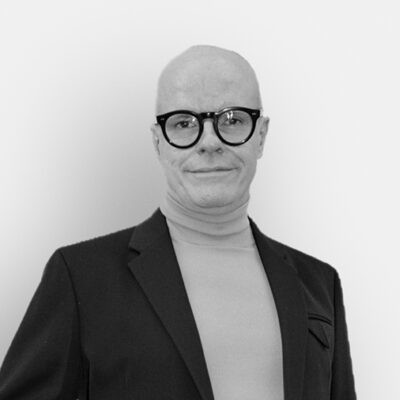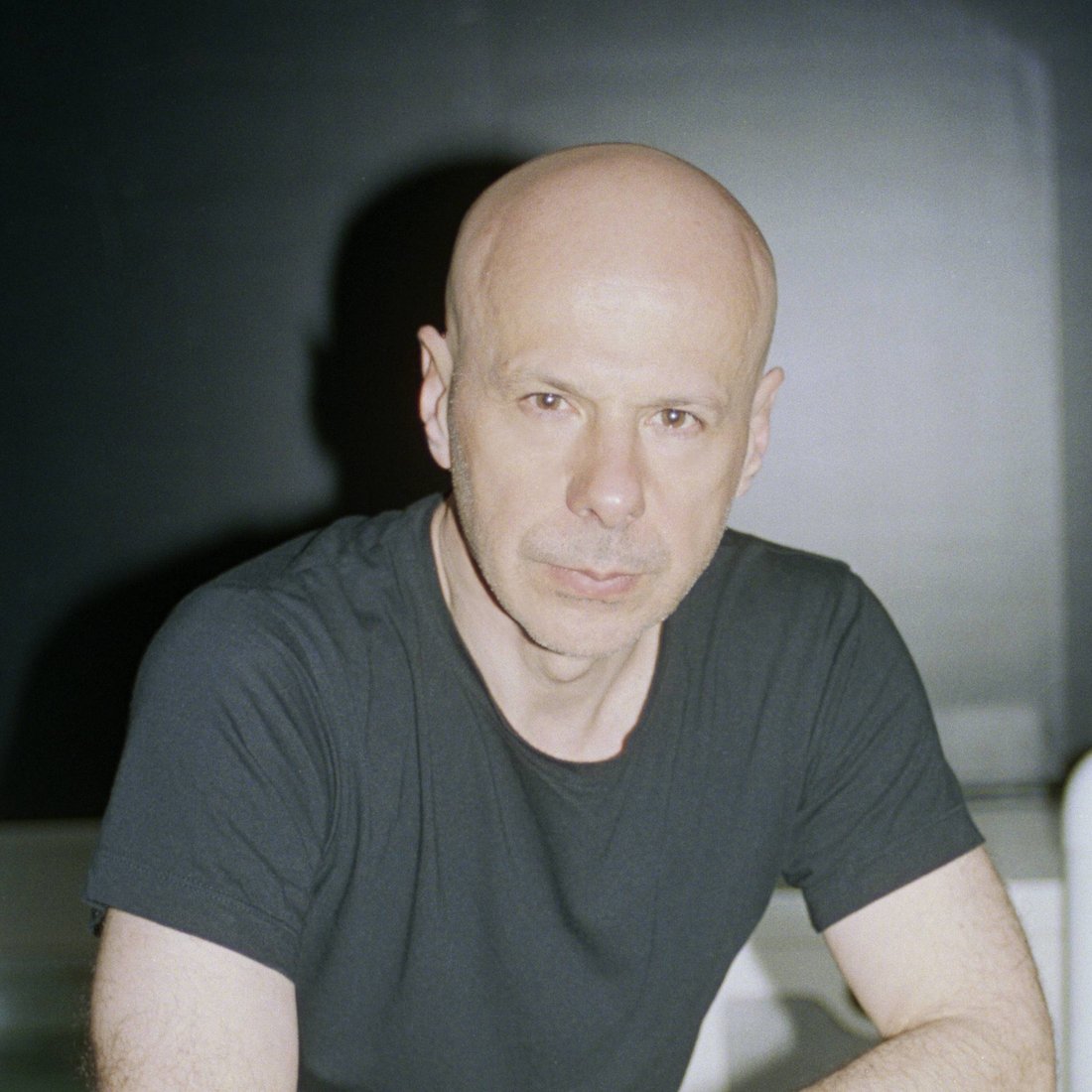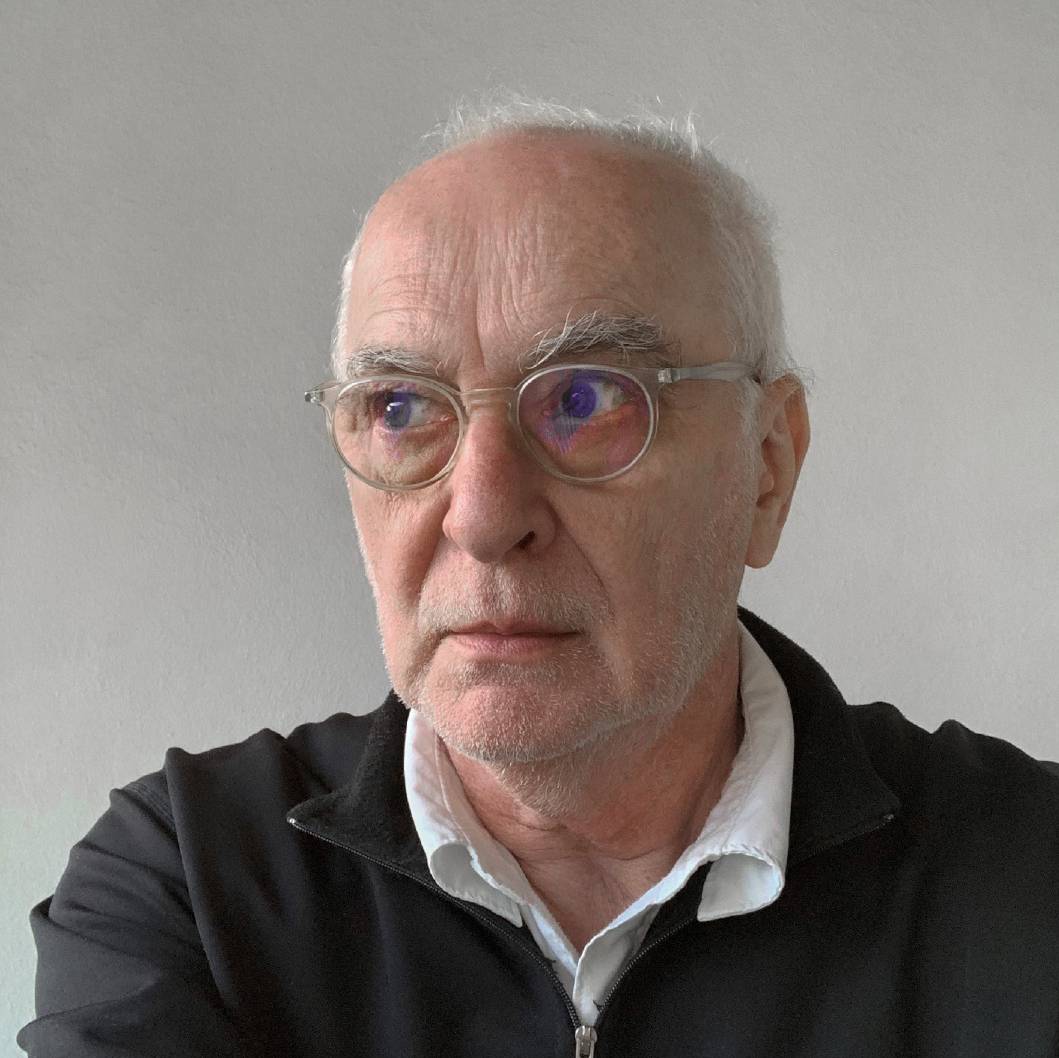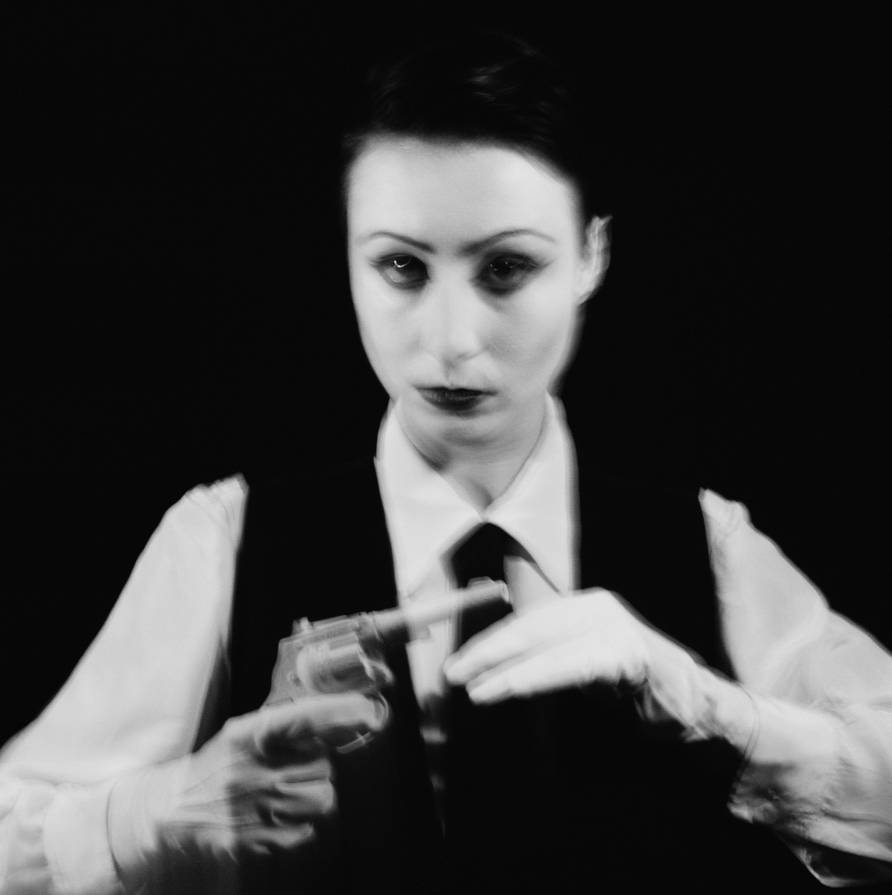Sticky Postings
All 242 fabric | rblg updated tags | #fabric|ch #wandering #reading
By fabric | ch
-----
As we continue to lack a decent search engine on this blog and as we don't use a "tag cloud" ... This post could help navigate through the updated content on | rblg (as of 09.2023), via all its tags!
FIND BELOW ALL THE TAGS THAT CAN BE USED TO NAVIGATE IN THE CONTENTS OF | RBLG BLOG:
(to be seen just below if you're navigating on the blog's html pages or here for rss readers)
--
Note that we had to hit the "pause" button on our reblogging activities a while ago (mainly because we ran out of time, but also because we received complaints from a major image stock company about some images that were displayed on | rblg, an activity that we felt was still "fair use" - we've never made any money or advertised on this site).
Nevertheless, we continue to publish from time to time information on the activities of fabric | ch, or content directly related to its work (documentation).
Tuesday, February 27. 2024
"Universal Machine": historical graphs on the relations and fluxes between art, architecture, design, and technology (19.. - 20..) | #art&sciences #history #graphs
Note (03.2024): The contents of the files (maps) have been updated as of 02.2024.
-
Note (07.2021): As part of my teaching at ECAL / University of Art and Design Lausanne (HES-SO), I've delved into the historical ties between art and science. This ongoing exploration focuses on the connection between creative processes in art, architecture, and design, and the information sciences, particularly the computer, also known as the "Universal Machine" as coined by A. Turing. This informs the title of the graphs below and this post.
Through my work at fabric | ch, and previously as an assistant at EPFL followed by a professorship at ECAL, to experience first hand some of these massive transformations in society and culture.
Thus, in my theory courses, I've aimed to create "maps" that aid in comprehending, visualizing, and elucidating the flux and timelines of interactions among individuals, artifacts, and disciplines. These maps, imperfect and constrained by size, are continuously evolving and open to interpretation beyond my own. I regularly update them as part of the process.
Yet, in the absence of a comprehensive written, visual, or sensitive history of these techno-cultural phenomena as a whole, these maps serve as valuable approximation tools for grasping the flows and exchanges that either unite or divide them. They offer a starting point for constructing personal knowledge and delving deeper into these subjects.
This is precisely why, despite their inherent fuzziness - or perhaps because of it - I choose to share them on this blog (fabric | rblg), in an informal manner. It's an invitation for other artists, designers, researchers, teachers, students, and so forth, to begin building upon them, to depict different flows, to develop pre-existing or subsequent ideas, or even more intriguingly, to diverge from them. If such advancements occur, I'm keen on featuring them on this platform. Feel free to reach out for suggestions, comments, or to share new developments.
...
It's worth mentioning that the maps are structured horizontally along a linear timeline, spanning from the late 18th century to the mid-21st century, predominantly focusing on the industrial period. Vertically, they are organized around disciplines, with the bottom representing engineering, the middle encompassing art and design, and the top relating to humanities, social events, or movements.
Certainly, one might question this linear timeline, echoing the sentiments of writer B. Latour. What about considering a spiral timeline, for instance? Such a representation would still depict both the past and the future, while also illustrating the historical proximities of topics, connecting past centuries and subjects with our contemporary context in a circular manner. However, for the time being, and while recognizing its limitations, I adhere to the simplicity of the linear approach.
Countless narratives can emerge as inherent properties of the graphs, underscoring that they are not their origins but rather products thereof.
...
The selection of topics (code, scores-instructions, countercultural, network-related, interaction, "post-...") currently aligns with the themes of my teaching but is subject to expansion, possibly toward an underlying layer revealing the material conditions that underpinned and facilitated the entire process.
In any case, this could serve as a fruitful starting point for some further readings or perhaps a new "Where's Waldo/Wally" kind of game!
Via fabric | ch
-----
By Patrick Keller
Rem.: By clicking on the thumbnails below you'll get access to HD versions.
"Universal Machine", main map (late 18th to mid 21st centuries):
Flows in the map > "Code":
Flows in the map > "Scores, Partitions, ...":
Flows in the map > "Countercultural, Subcultural, ...":
Flows in the map > "Network Related":
Flows in the map > "Interaction":
Flows in the map > "Post-Internet/Digital, "Post -..." , "Neo -...", ML/AI":
...
To be continued (& completed) ...
Friday, February 09. 2024
Mnemosyne – History and Research in Arts and Design / (Re)Viewing Paik | #paik #digitization #digitalexhibition
Note: as part of a year-long preliminary research into digital exhibitions, we teamed up with the Nam June Paik Art Center (South Korea) - and their incredible collection and archive of Nam June Paik's works -, as well as ECAL/University of Art and Design Lausanne, to deliver initial thoughts and proofs of concept.
Late last year saw the publication of Mnemosyne, a book on "History and Research in Arts and Design" (ed. Davide Fornari, published by ECAL/University of Art and Design Lausanne (HES-SO)).
In this context, I had the chance to be in conversation with NJPAC curator Sang Ae Park about this joint research. Among other topics, we discussed the unrealized piece – at the time – "Symphony for 20 rooms" (1961) by Nam June Paik as a potential inspiration for "remote" exhibitions, at home.
This discussion gave ground to the paper "A Symphony for Nam June Paik, Digitally" (below), while this preliminary research is likely to continue in the form of a longer-term research.
-----
By Patrick Keller

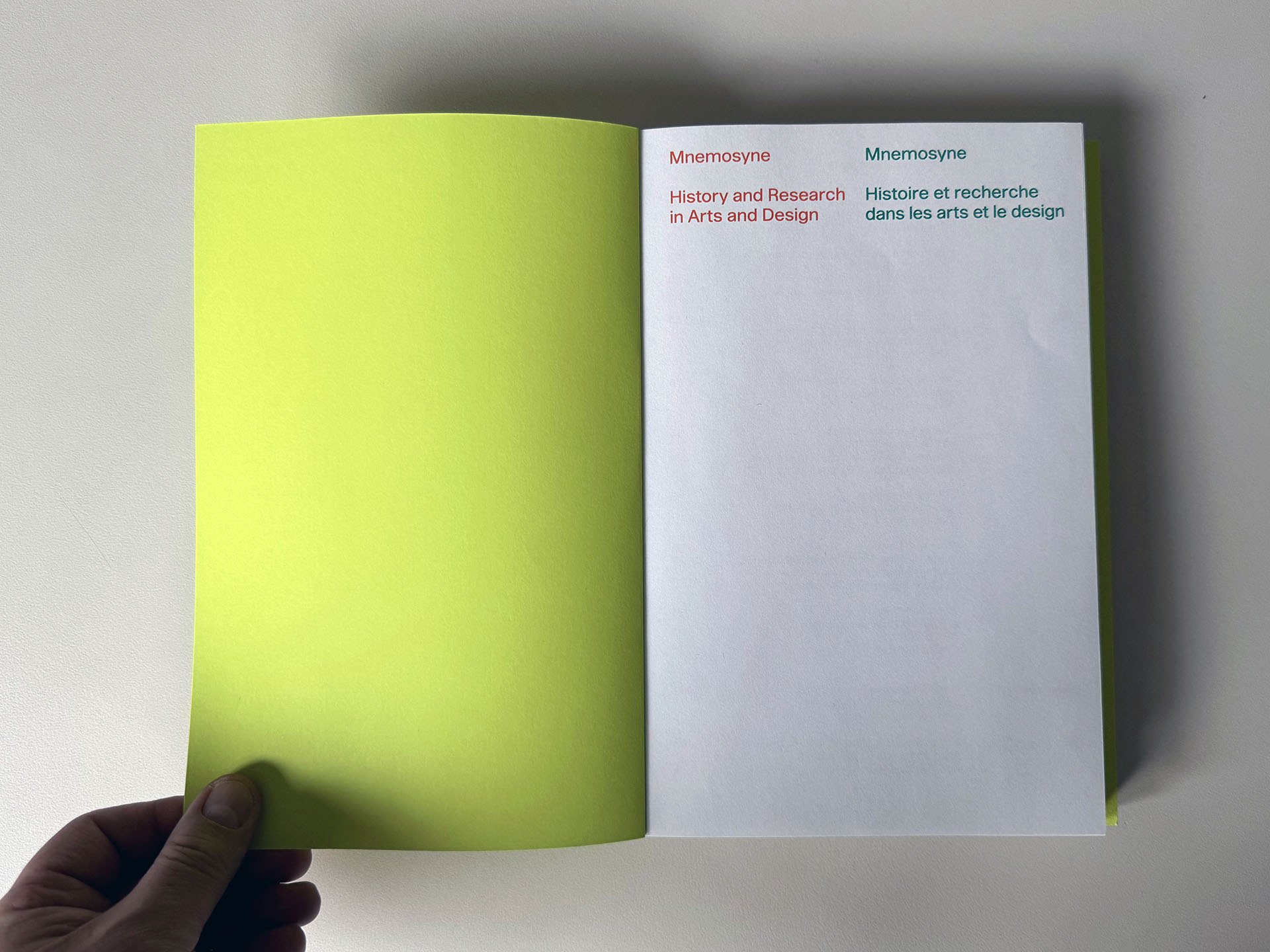


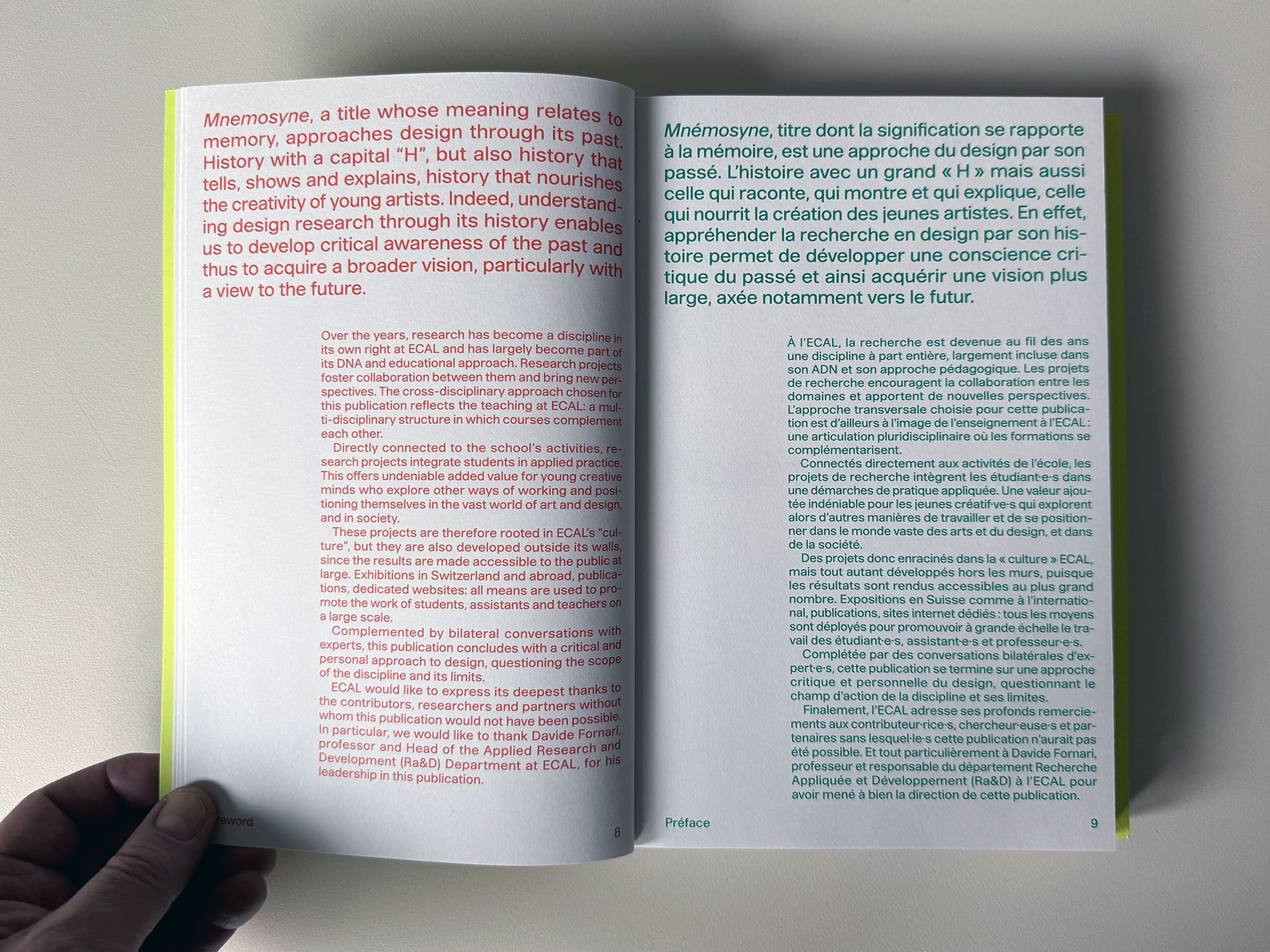
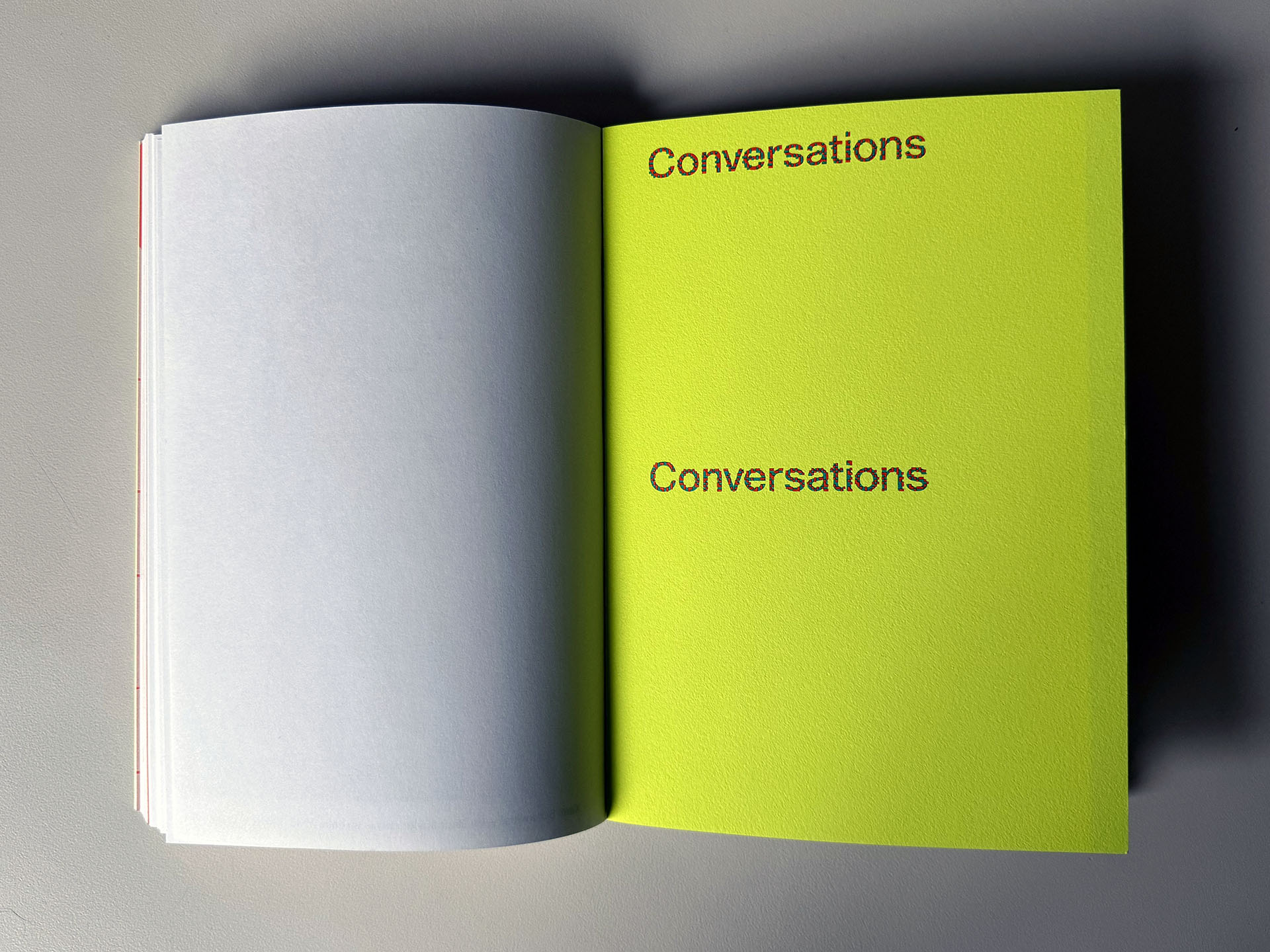
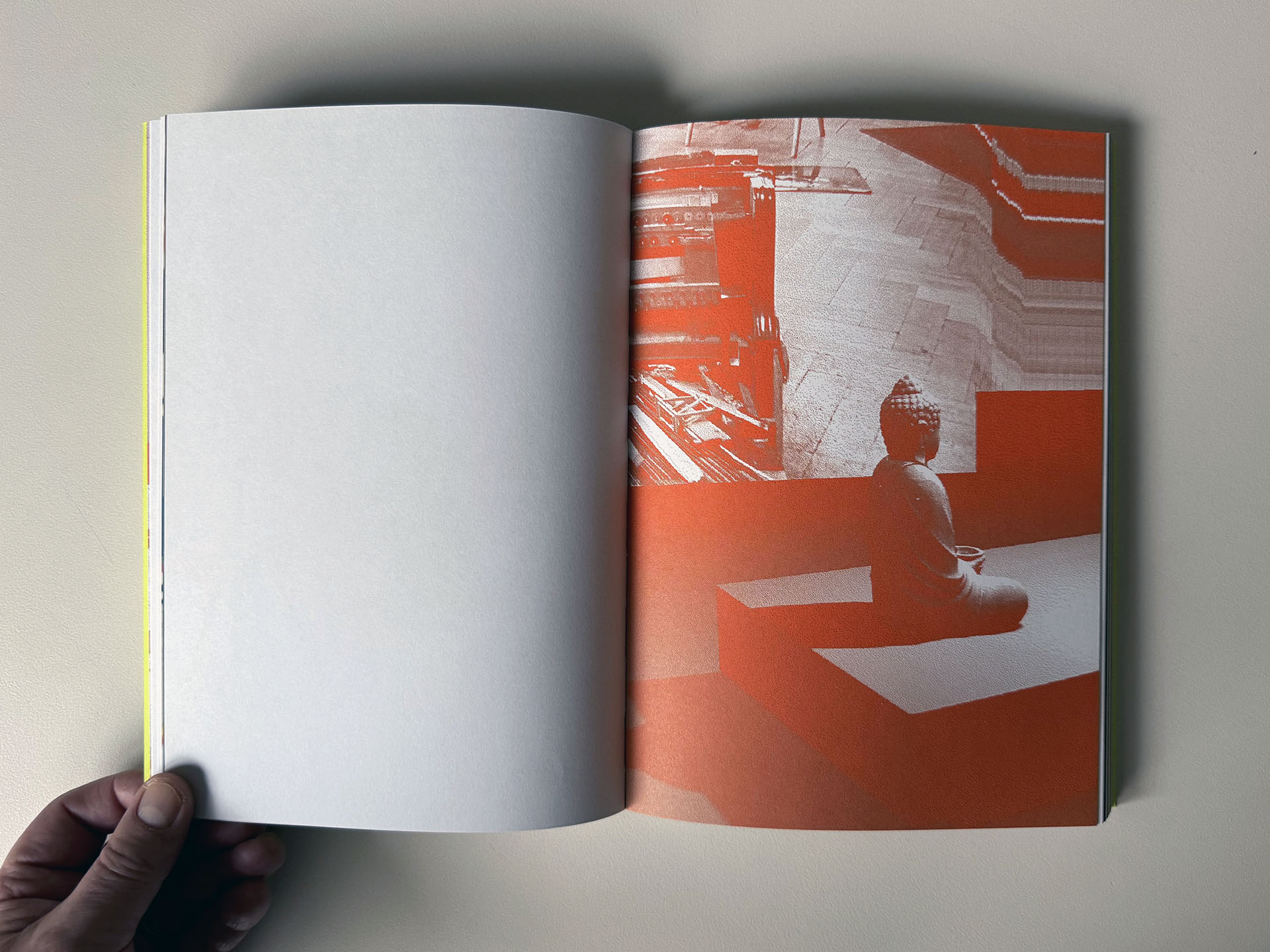

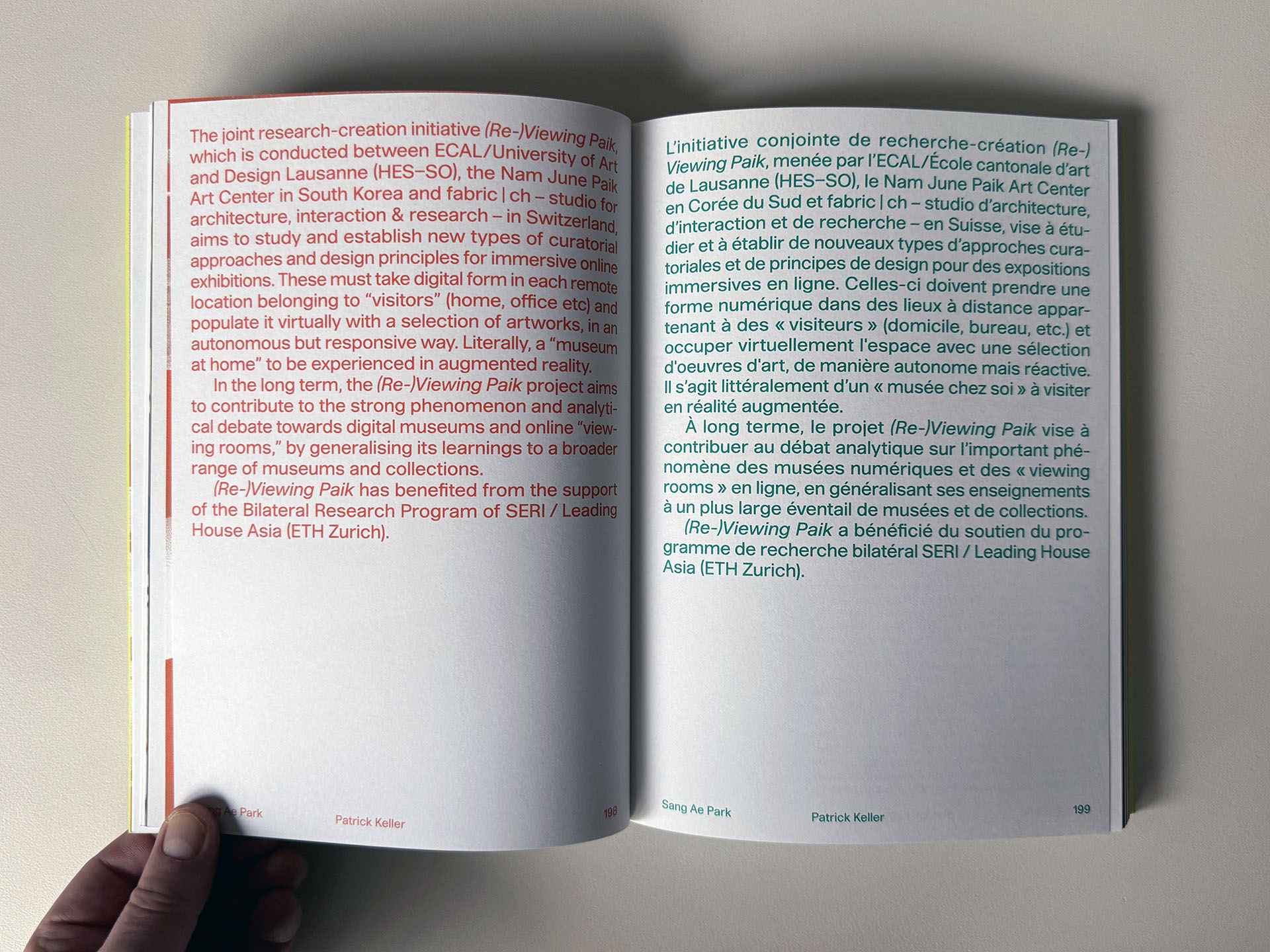
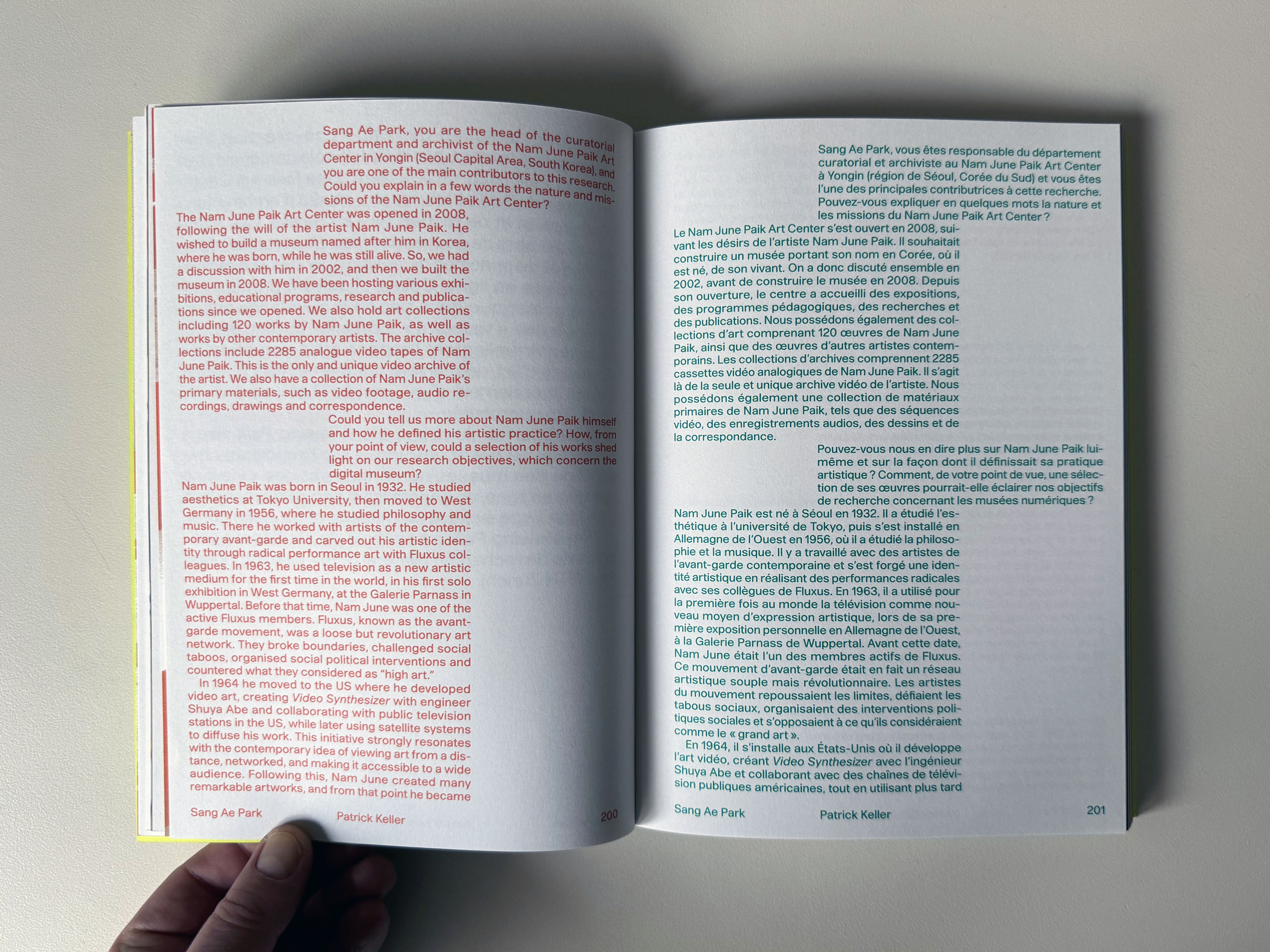
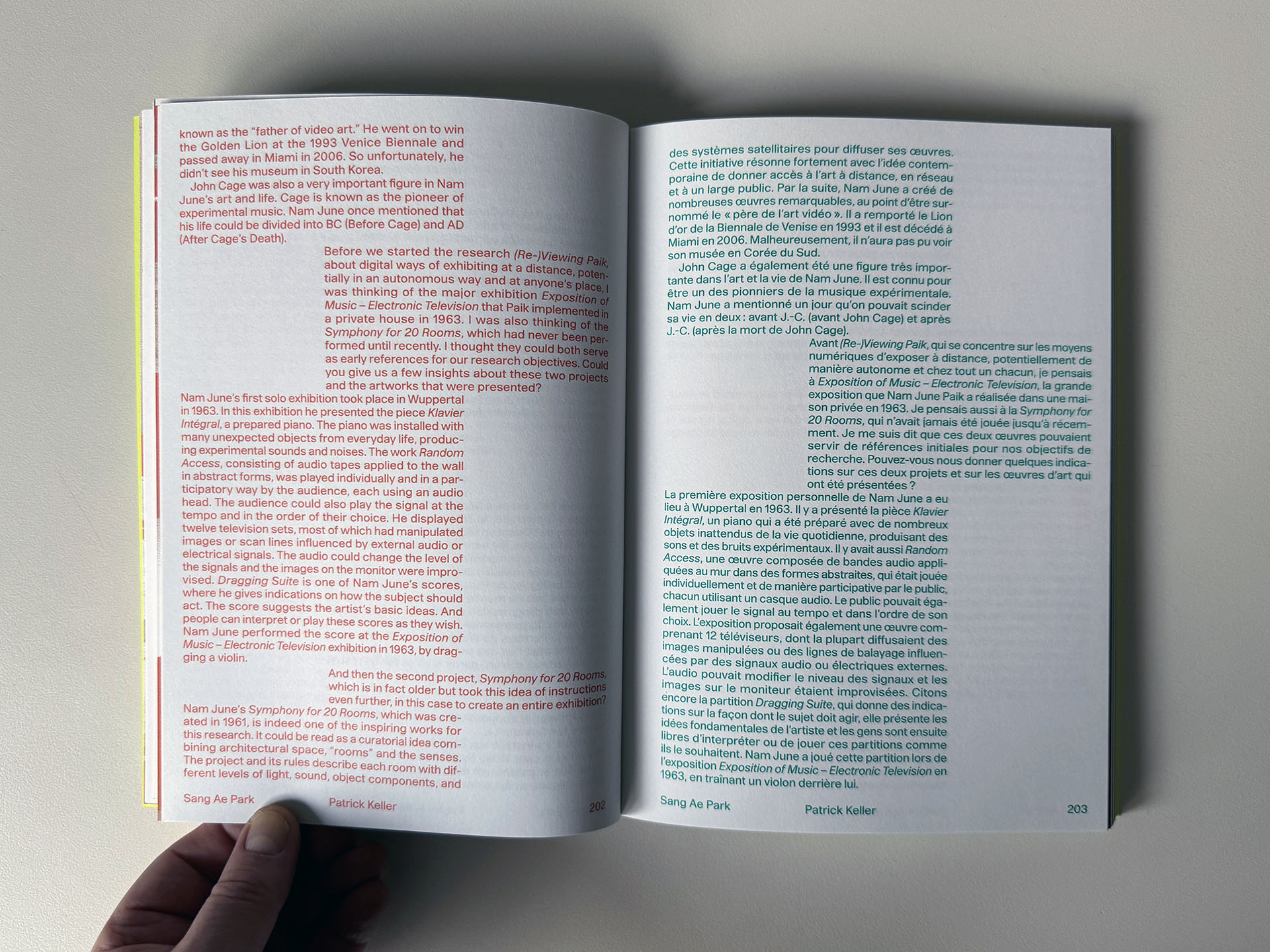
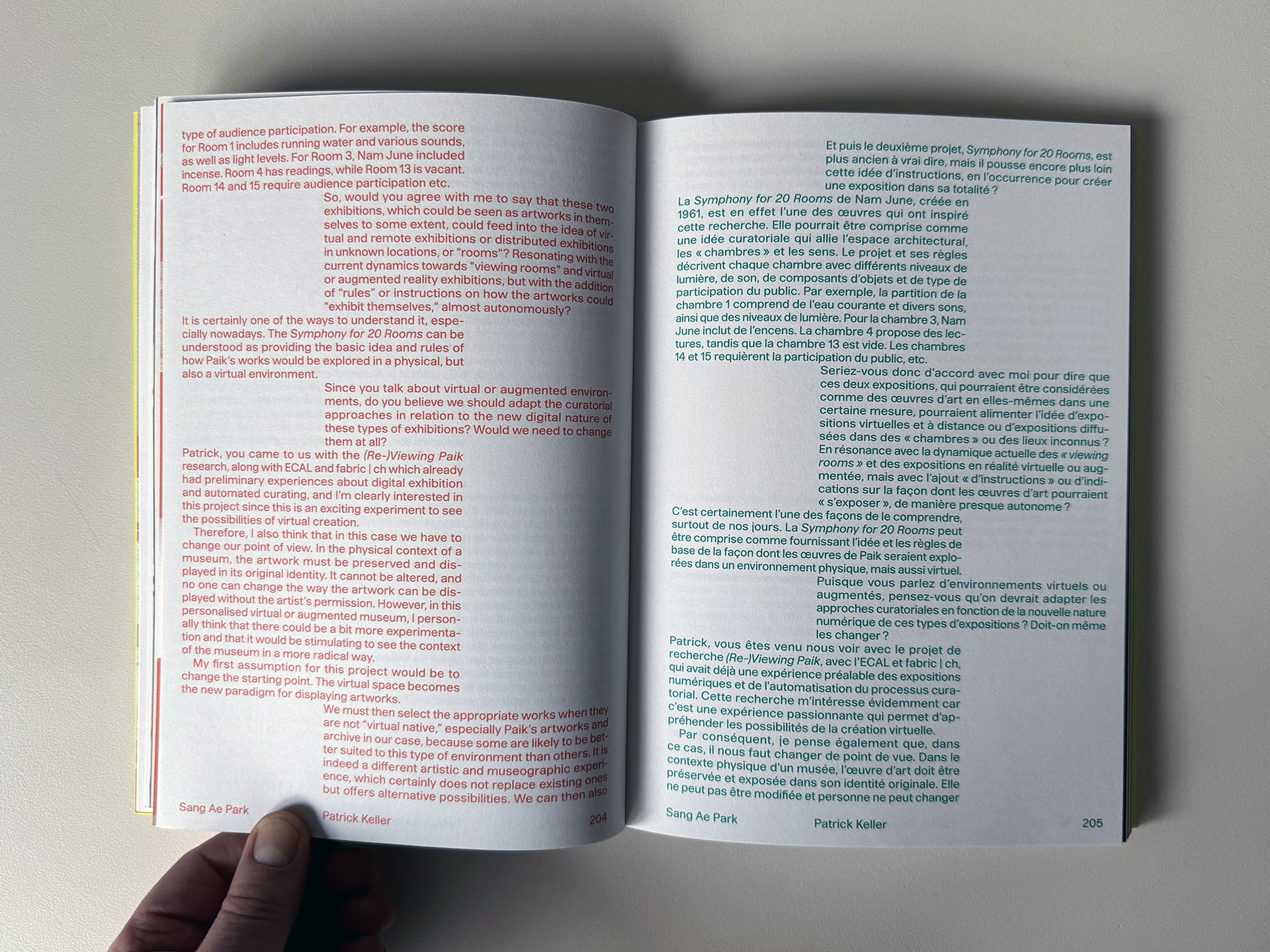
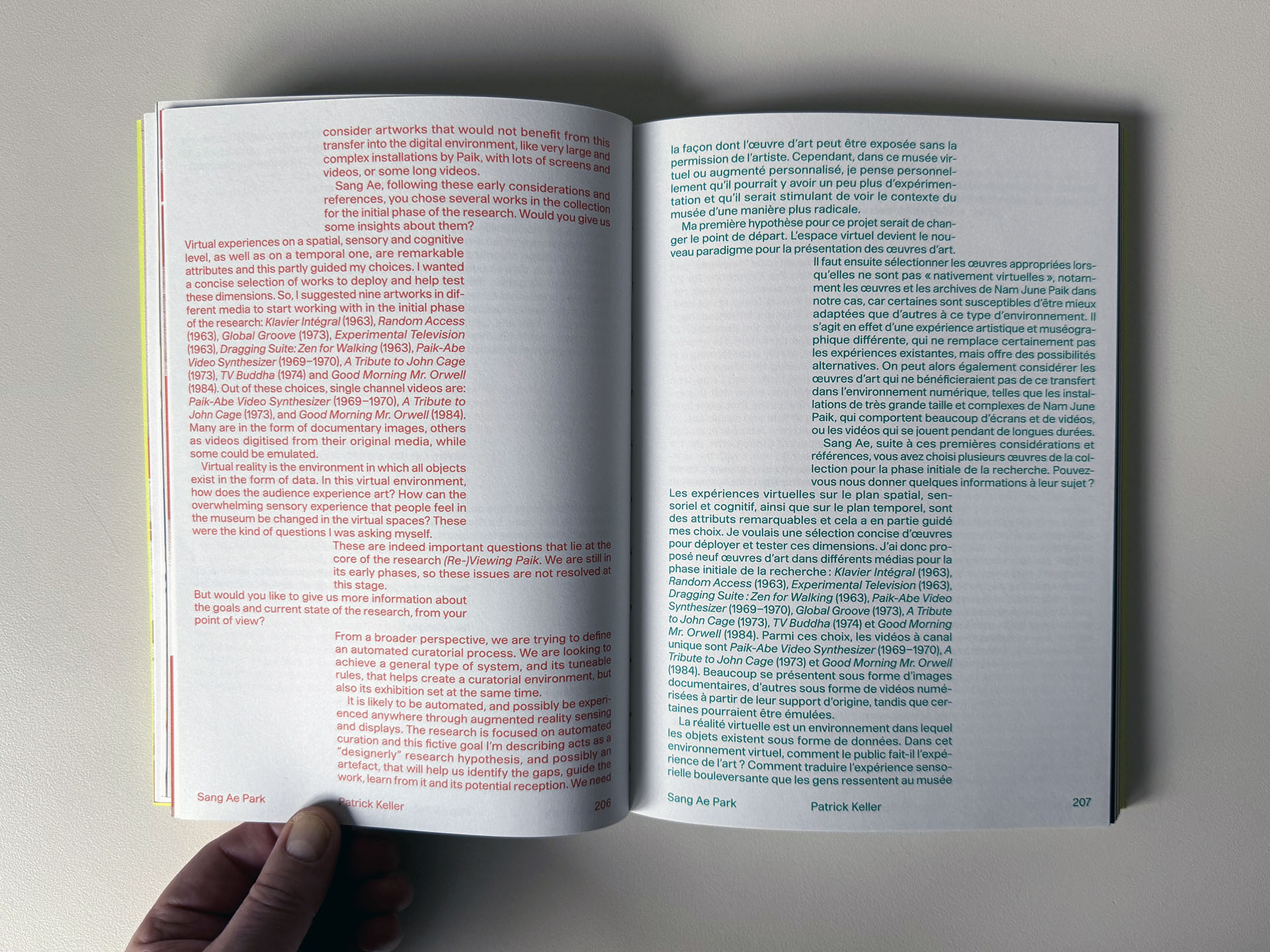
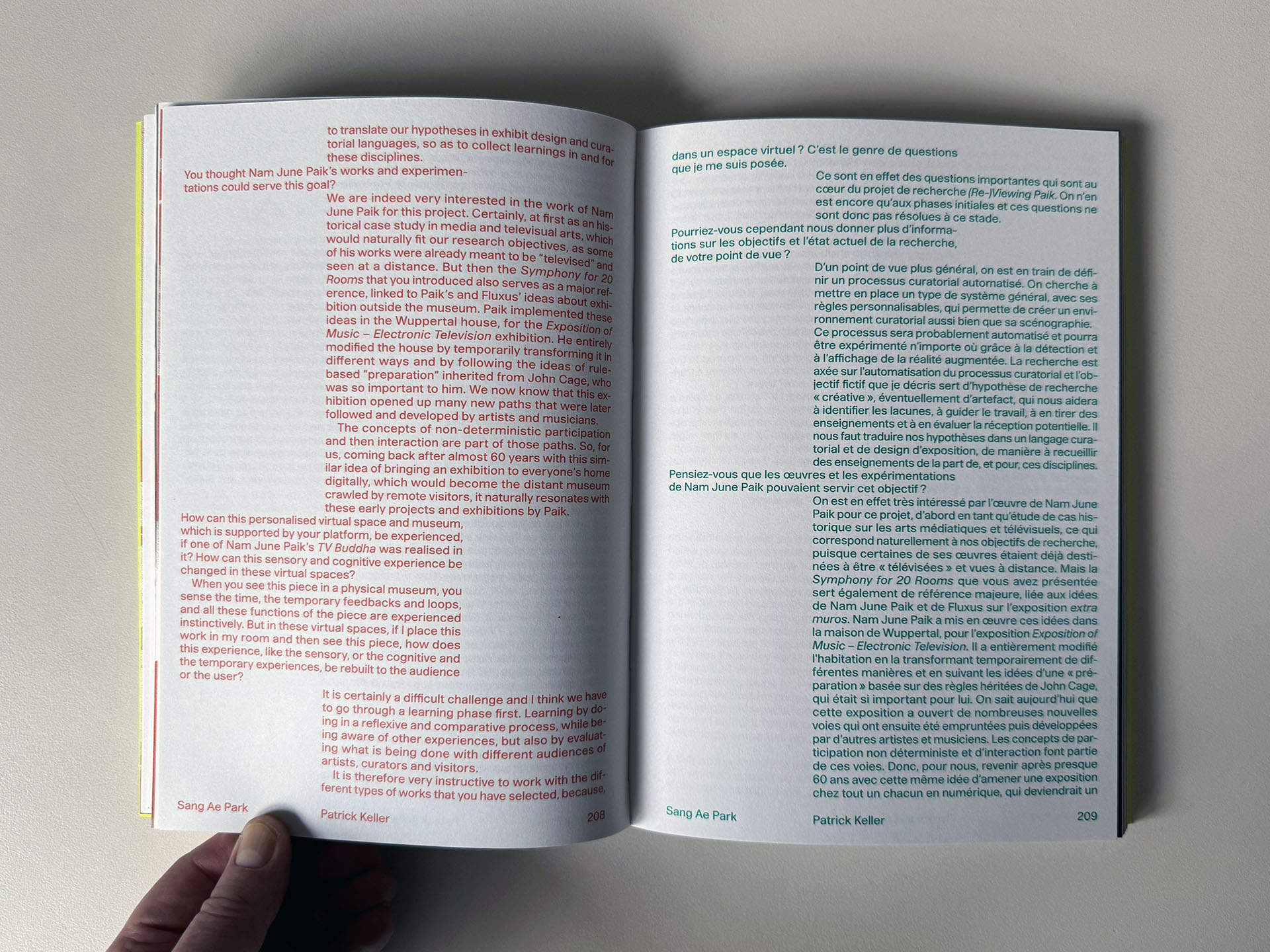
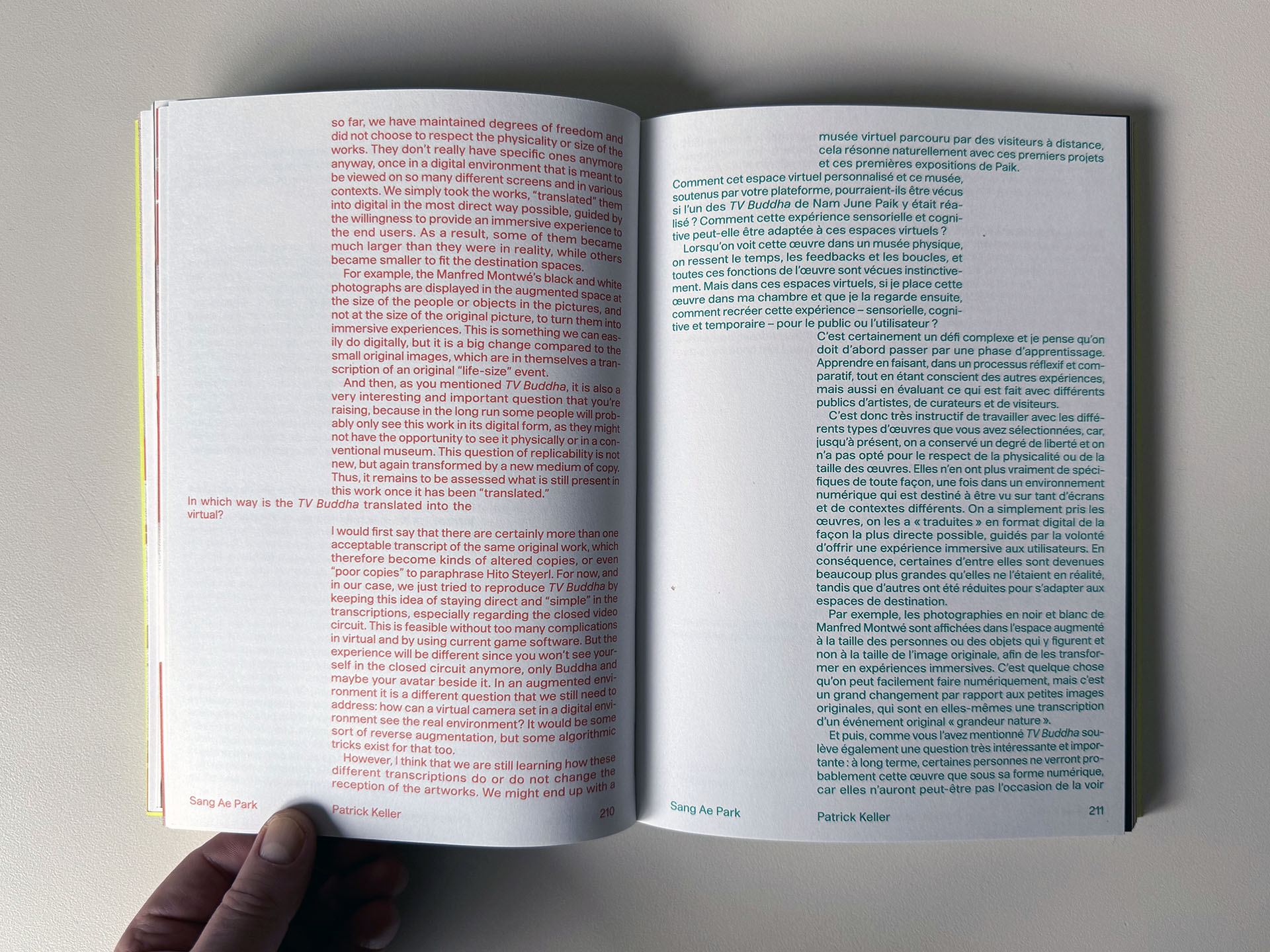
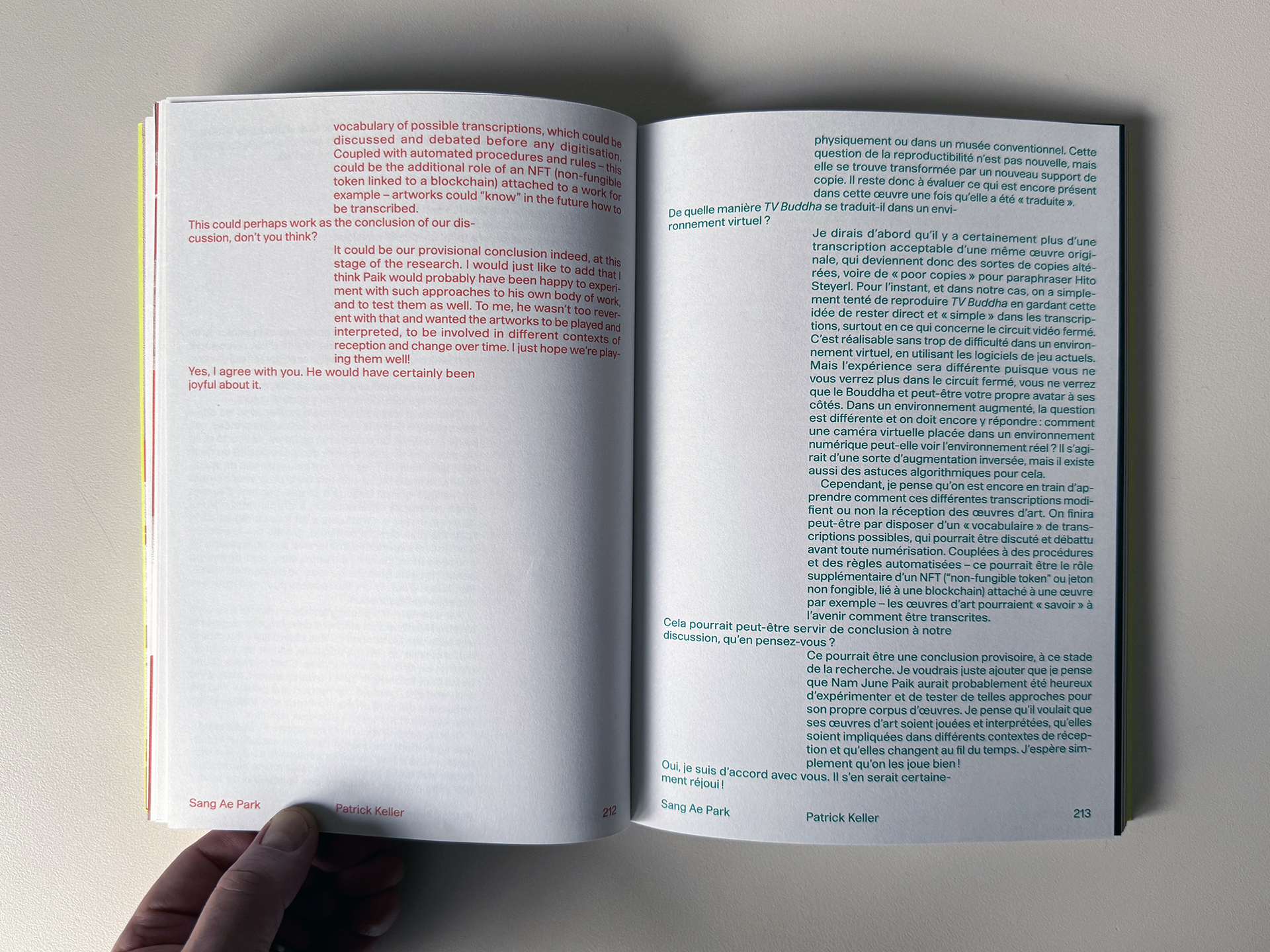
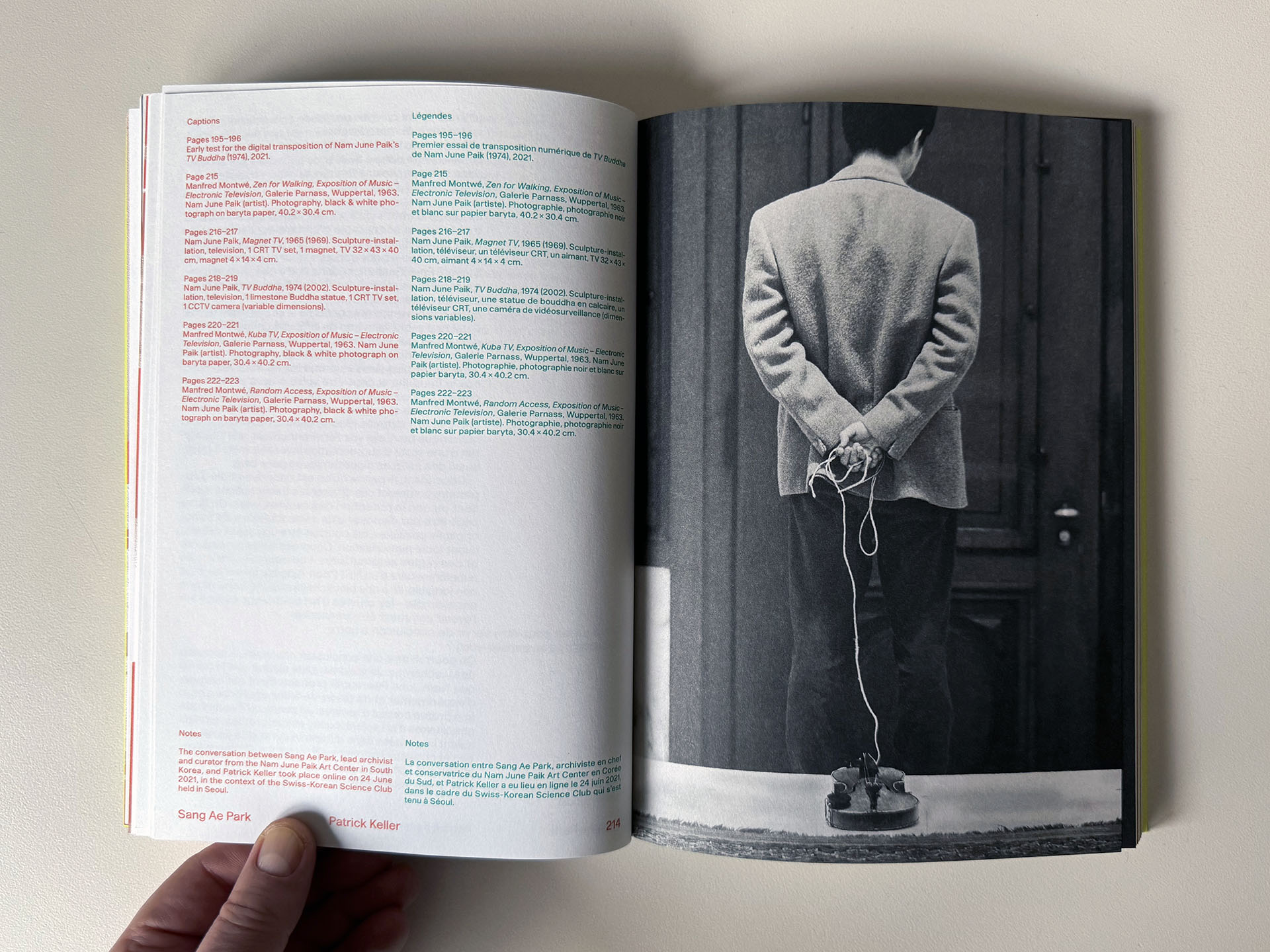
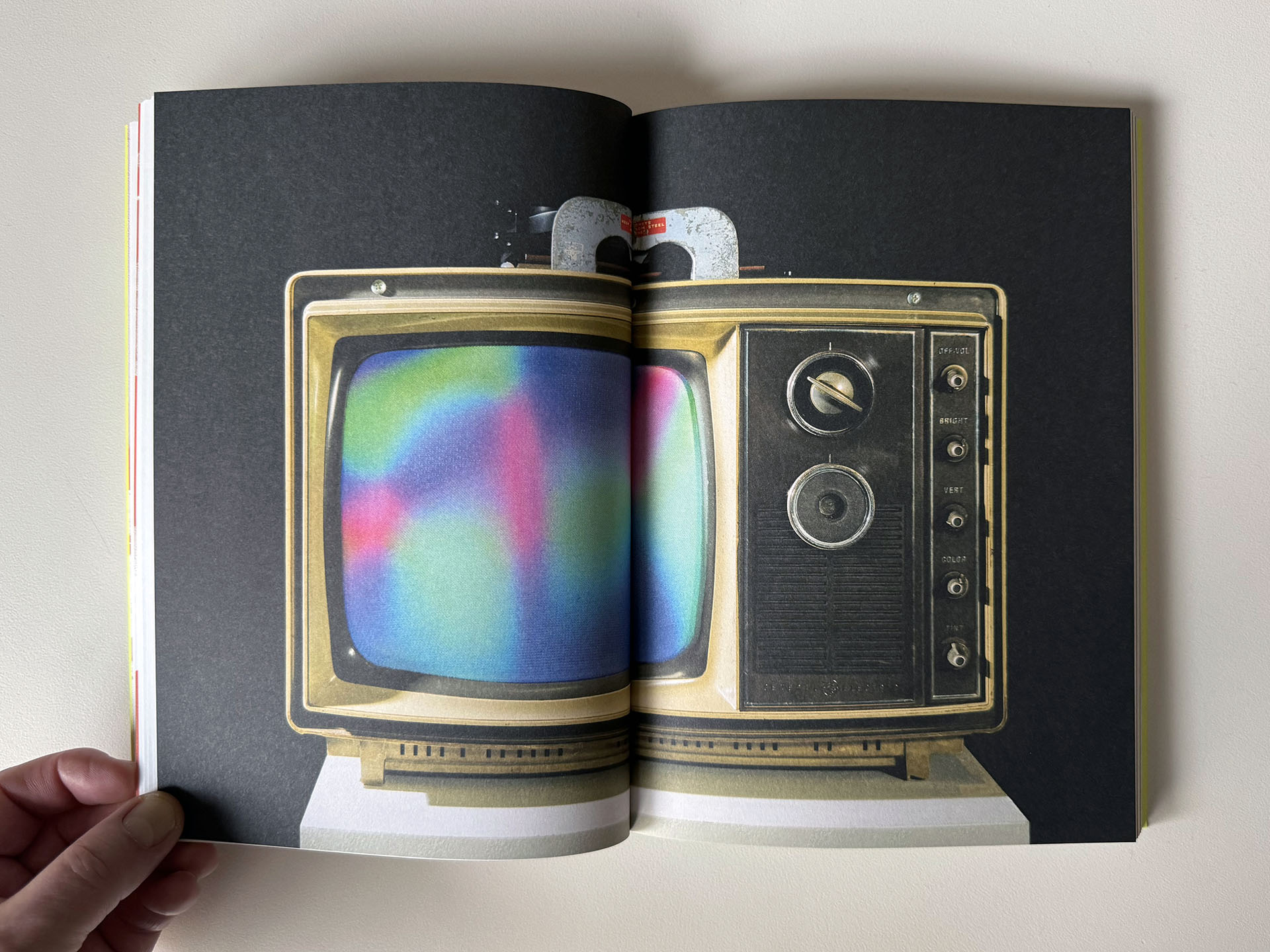
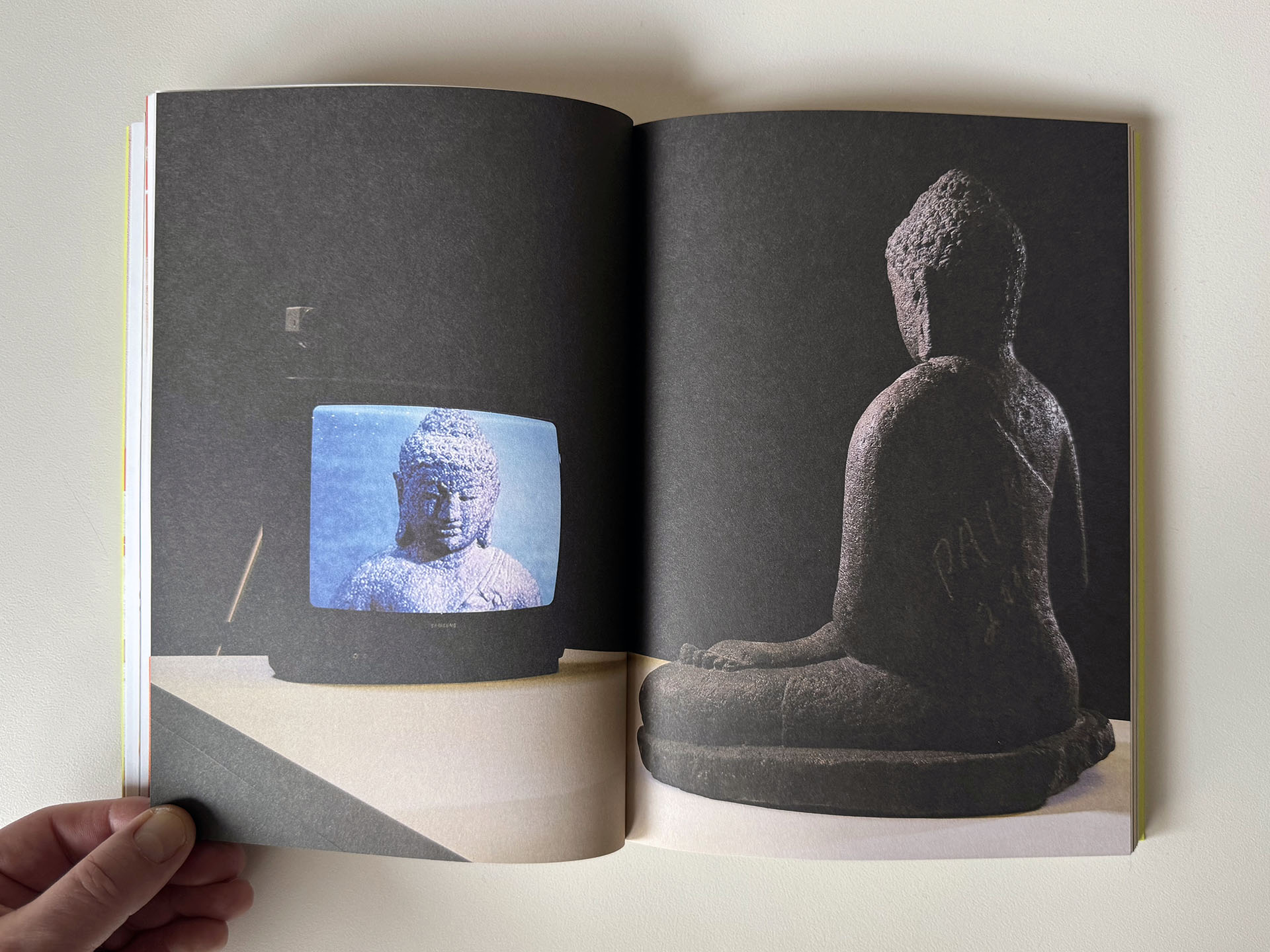
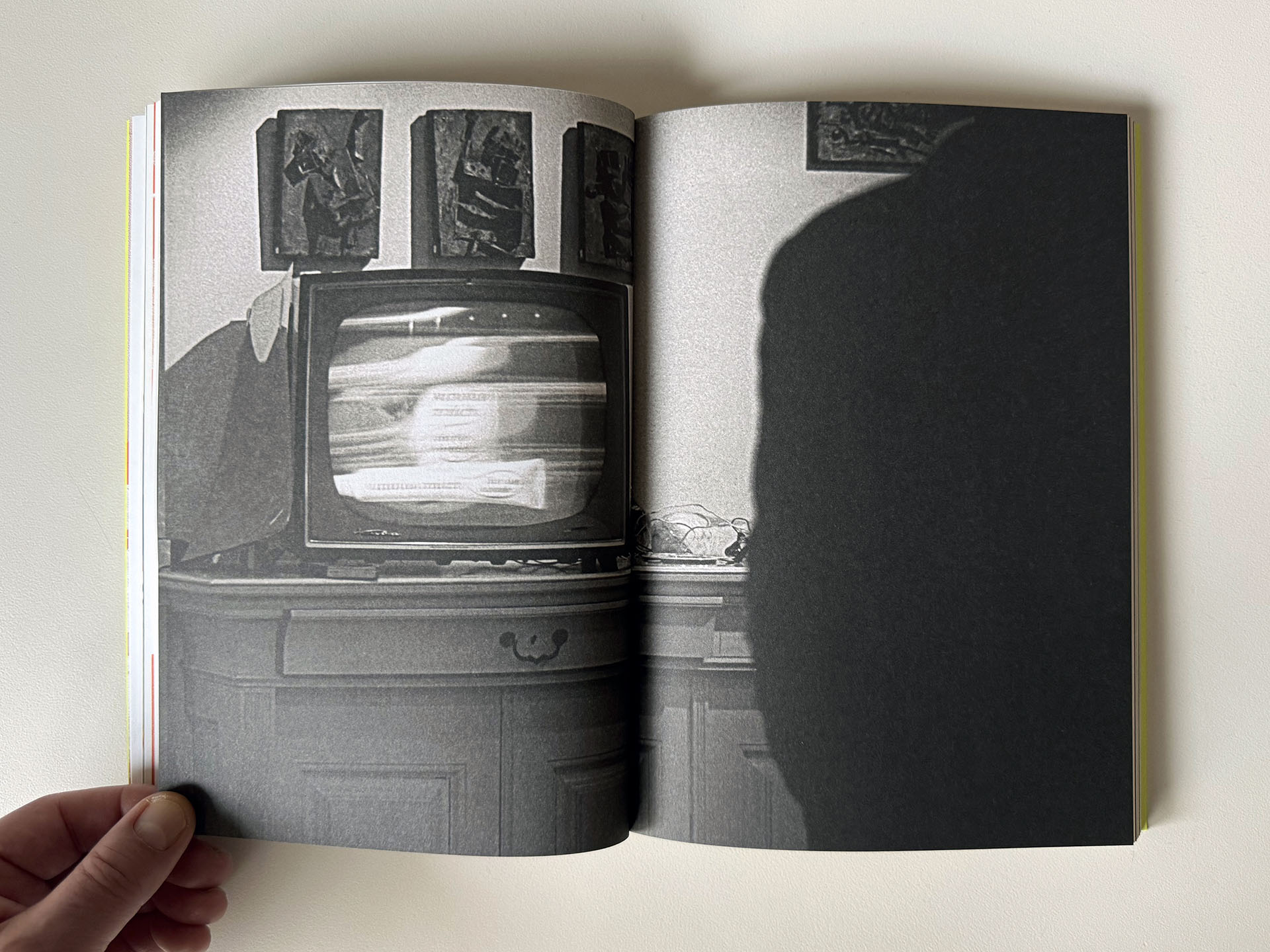
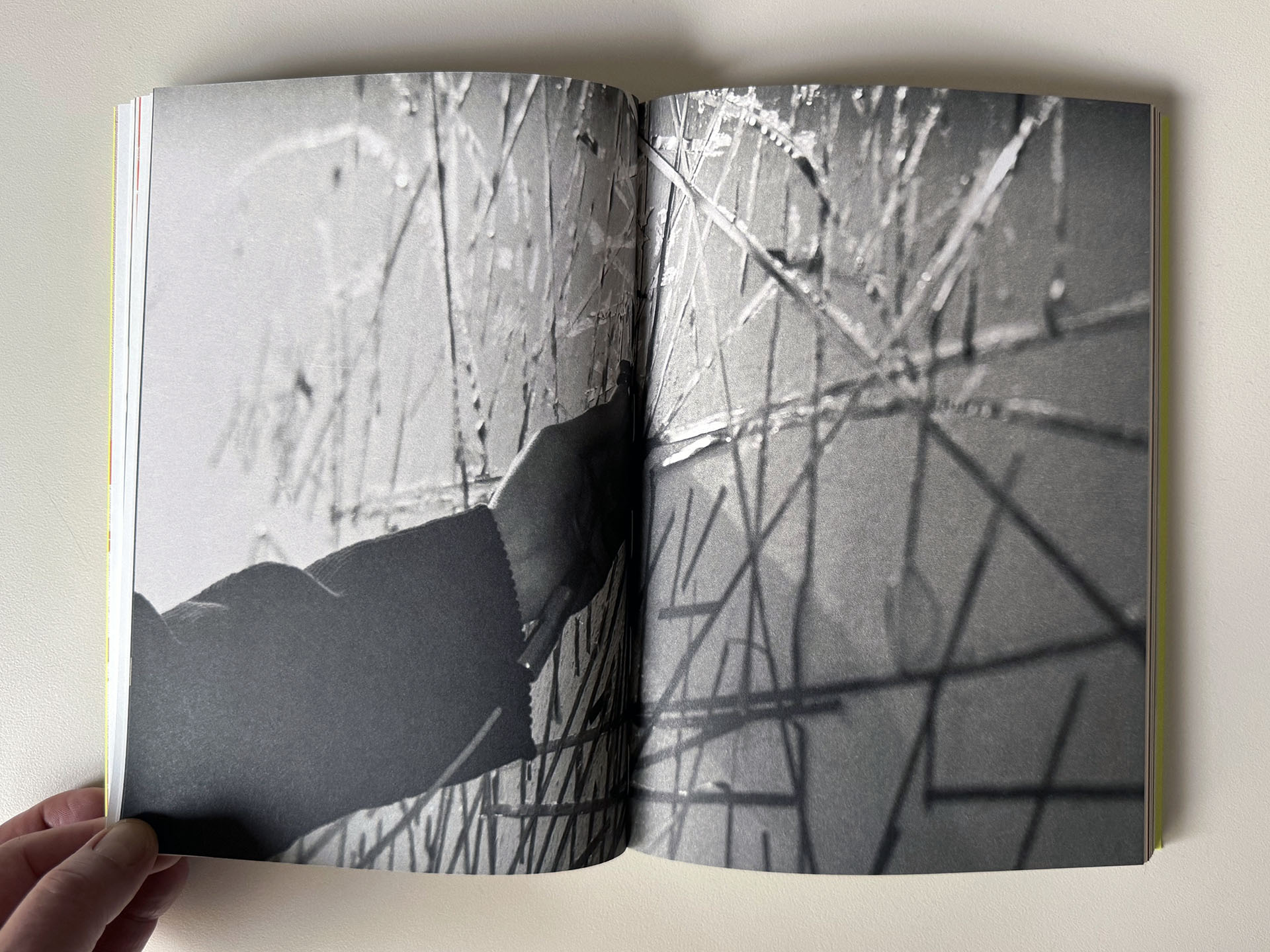
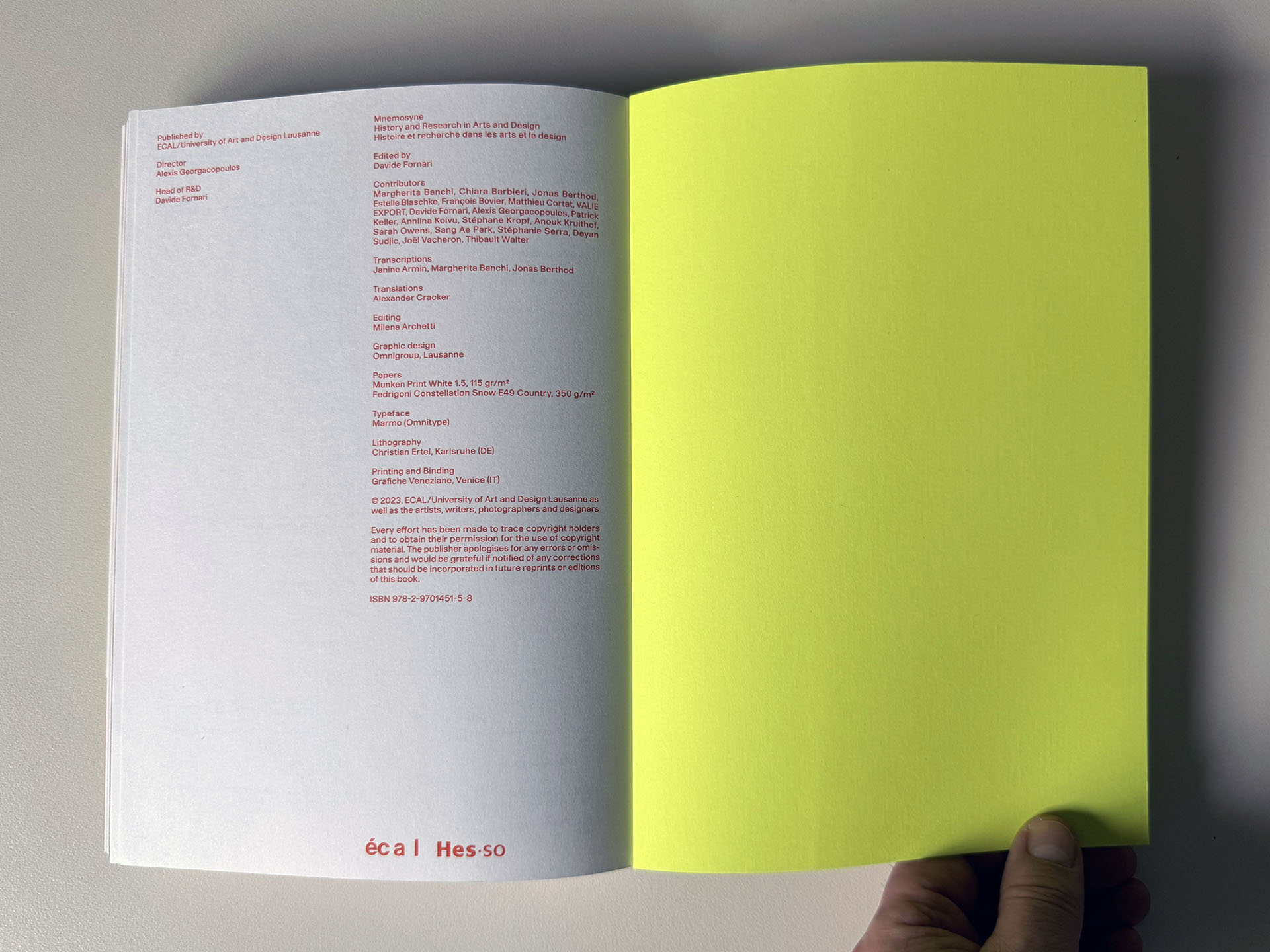

Wednesday, November 29. 2023
Architecture & Landscape Award 2023 from Fondation Vaudoise pour la Culture (FVPC) | #award #fabricch #architecture #interaction #research
Note: fabric | ch was honored to receive this year the Award for Architecture and Landscape Culture from the Fondation vaudoise pour la culture (FVPC).
The price distinguishes an actor who is "involved in the design or promotion of built environment and who, through this commitment, contributes to the quality of our natural, [digital] and built environment".
A brief video portait of fabric | ch was produced on this occasion by director Pierre-Yves Borgeaud, as well as a small publication by Art Director Emmanuel Crivelli and photographic portraits by Matthieu Croizier (see below).
We'd like to thank the foundation and its jury for awarding our studio in 2023!
-----
By fabric | ch
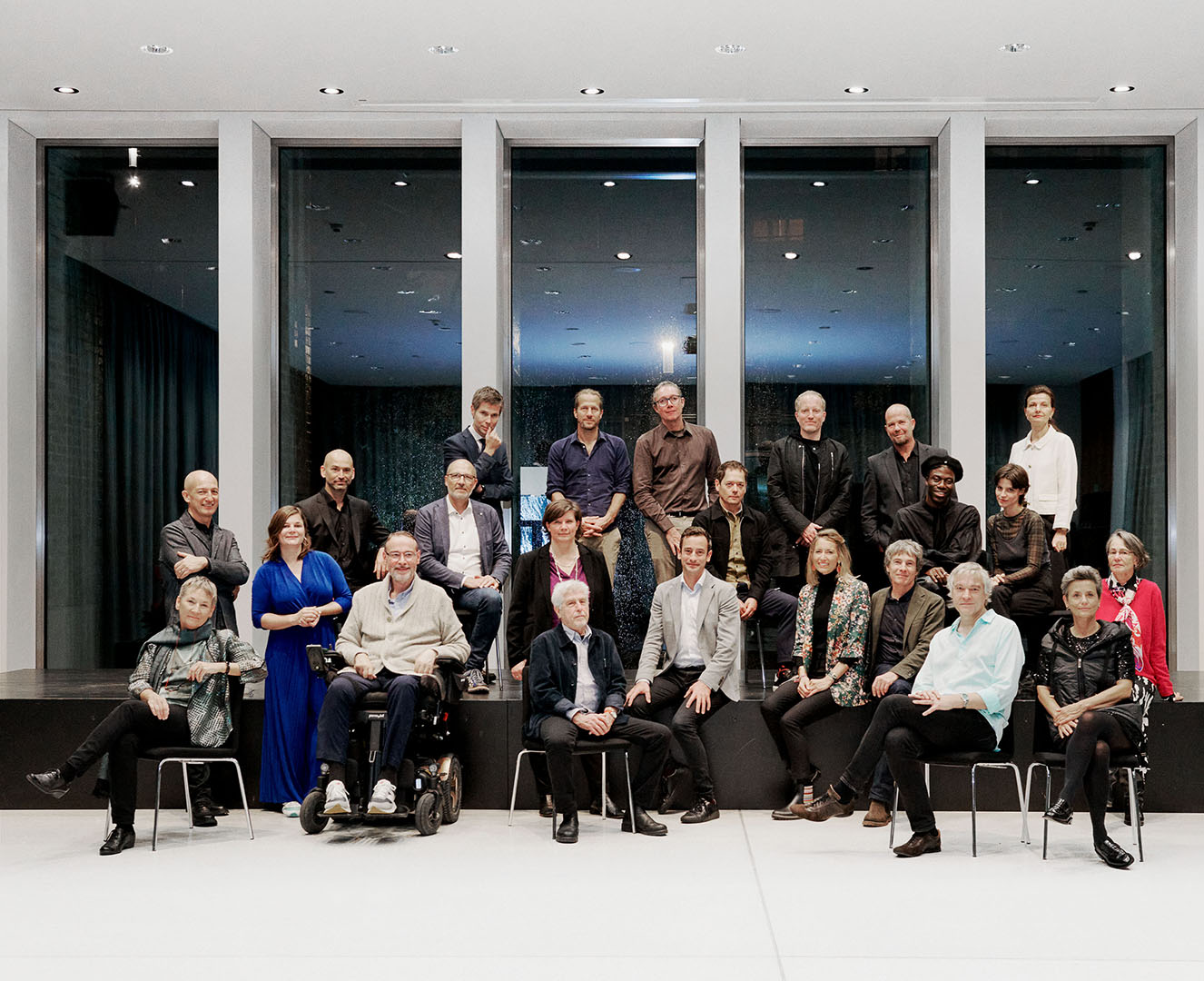
---
---
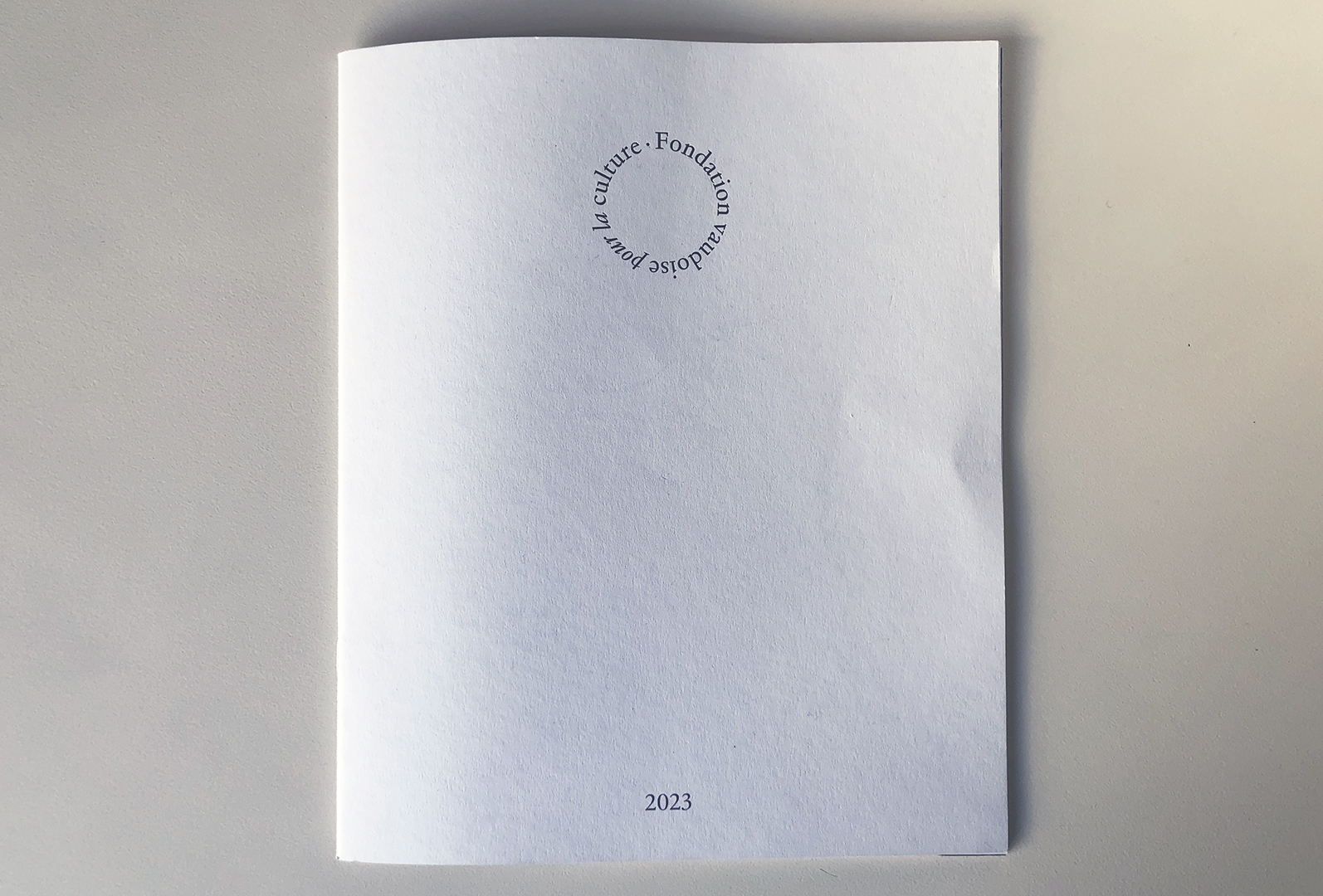
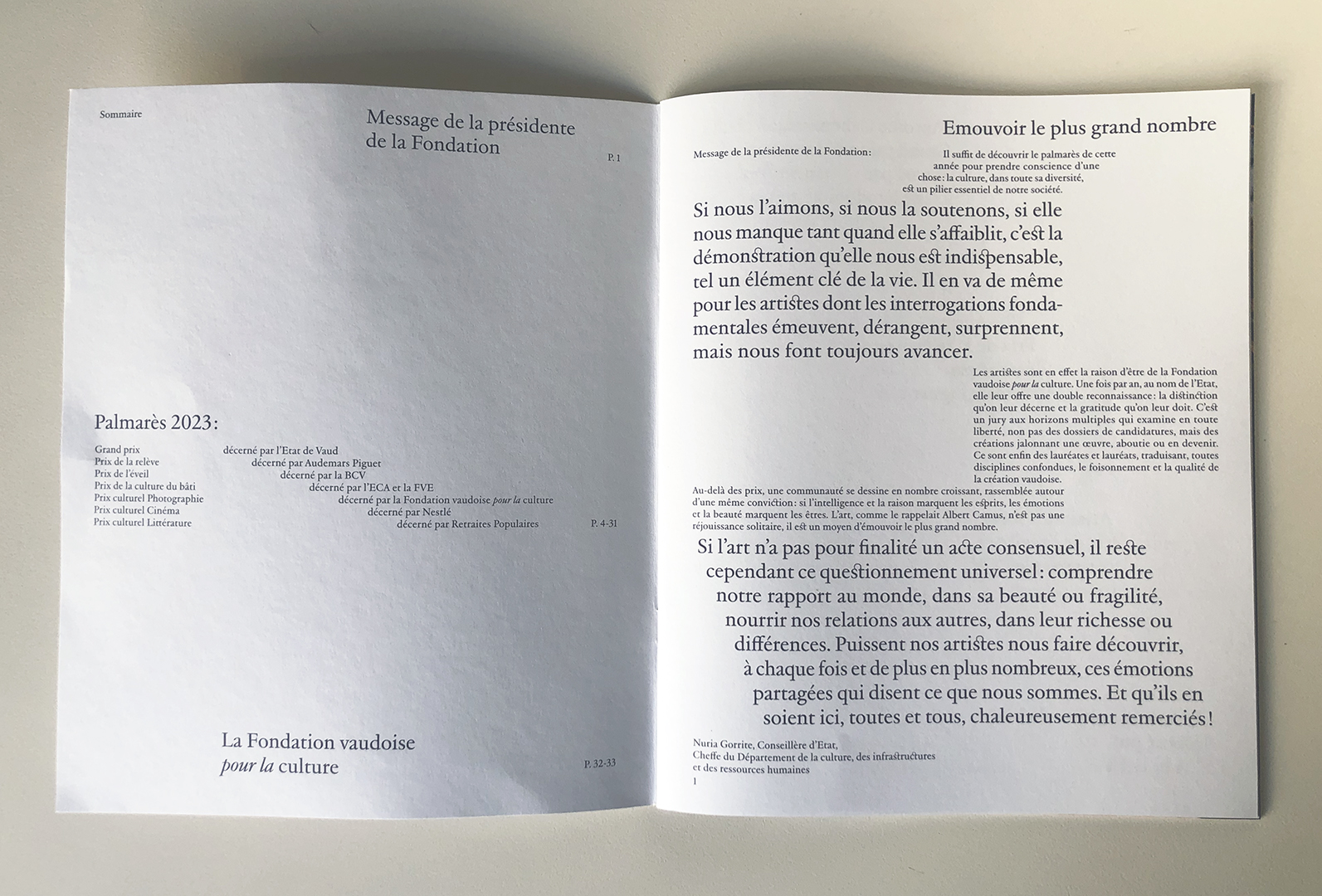
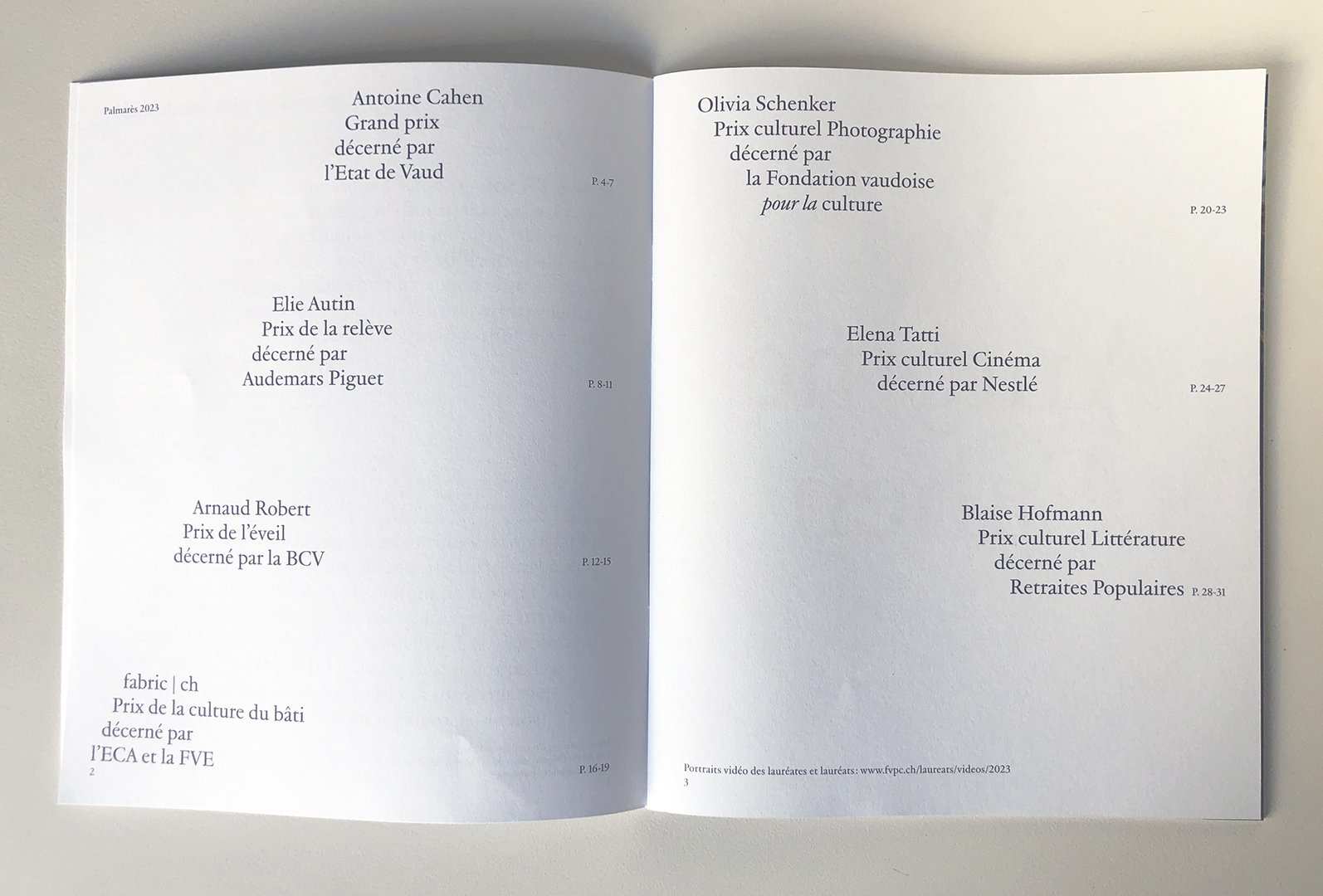
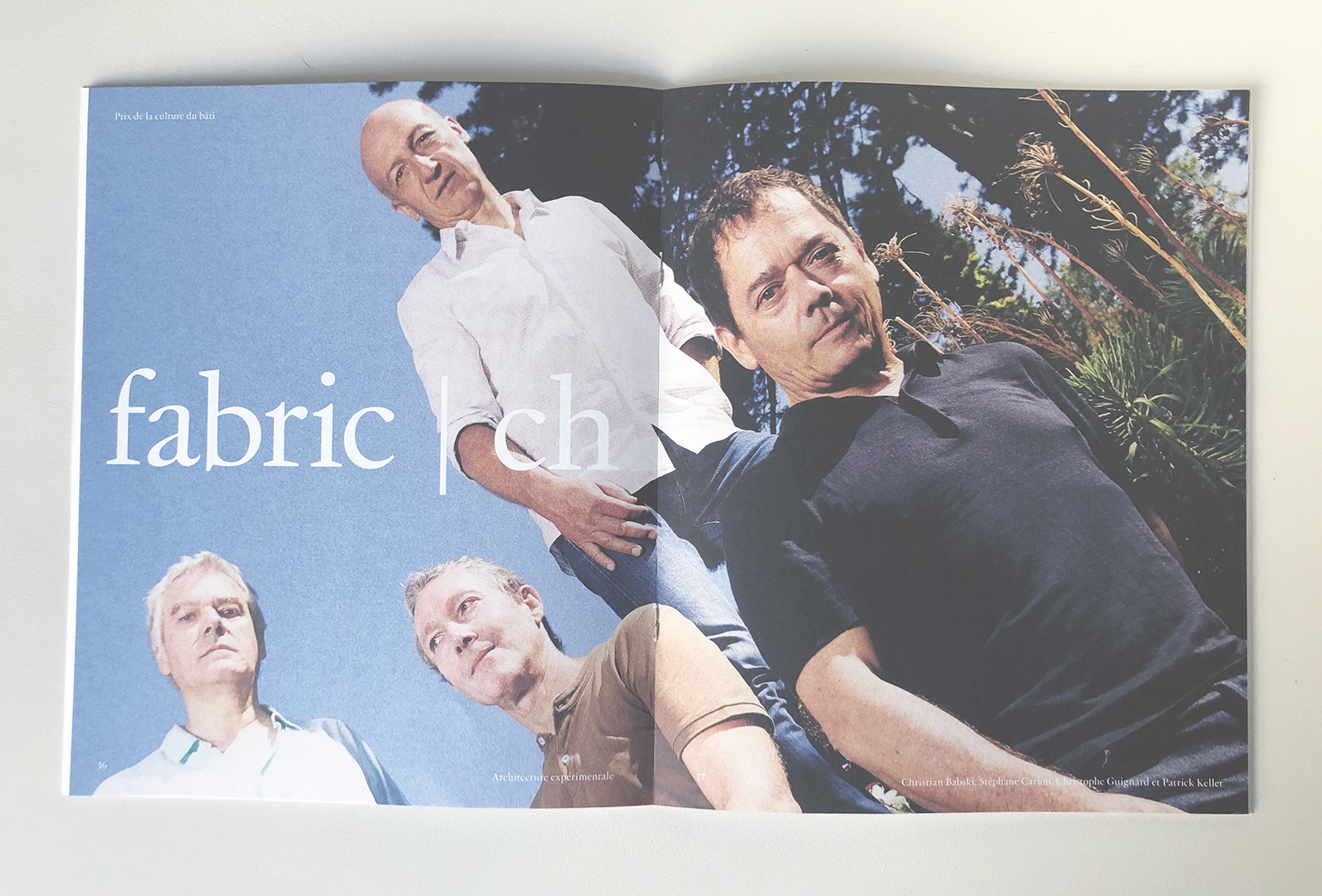
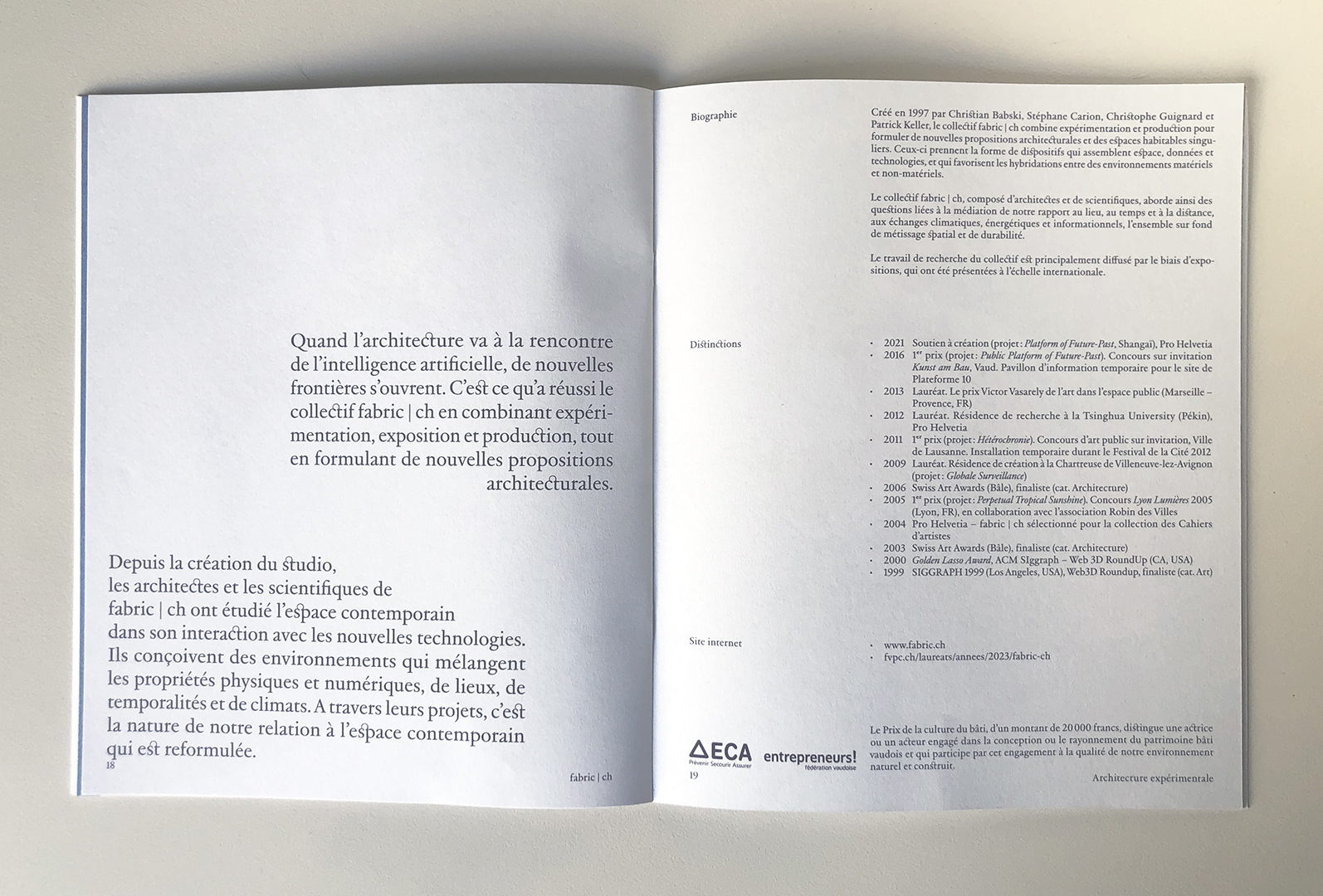
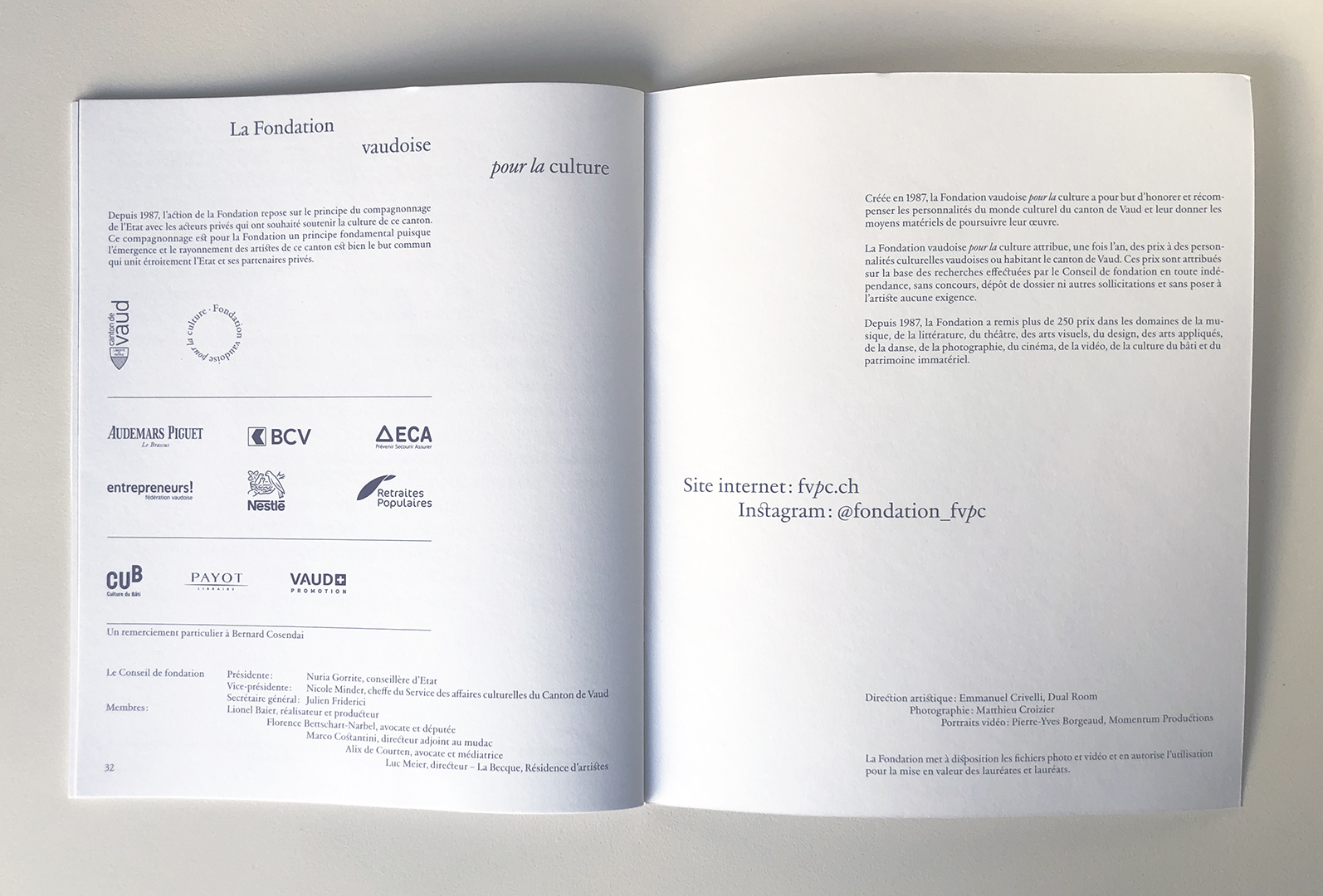

---
... and for the record,
our bit of the award ceremony!
Monday, October 30. 2023
fabric | ch receives the award "Architecture & Landscape" from the Fondation vaudoise pour la culture | #architecture #experimental #digital #award
Note: this Saturday (04.11) fabric | ch will receive the "Architecture & Landscape" price from the Art Council of Canton de Vaud (CH).
It is a rare but much-apreciated recognition of our work by the region where we've been working all those years (and, at the same occasion, also one to show our faces)! We're still waiting for an invitation to exhibit fabric | ch's work somewhere in our hometown though 😉
So rejoice, and let's celebrate together during the following drinks reception!
Via @fvpc
-----
Monday, October 02. 2023
Beyond Matter – Within Space, ZKM exhibition catalogue (eds. L. Nolasco-Rószás & M. Schädler), Hatje Cantz (Berlin, 2023) | #AI #AR #VR #XR #art #digital #exhibition #curation
Note: this well-documented publication, complete with essays and which also serves as a comprehensive exhibition catalogue, was released to coincide with the end of a European research project Beyond Matter. The research was led by the ZKM (Zentrum für Kunst une Medien, Karlsruhe) and Centre George Pompidou in Paris. The publication also came out as the exhibition catalogue in relation to two exhibitions held in 2023 – n ZKM and Centre Pompidou – about the research obectives.
Beyond Matter – Within Space is certainly destined to become a central work on the issue of digital art exhibition in our time.
In this context, fabric | ch – studio for architecture, interaction & research had the chance to be involved in the exhibition at the ZKM and work with around 200 digitized artworks (of historical signifiance) provided by the research team. The "experimental architecture" project fabric | ch created at this occasion, a new work, was entitled Atomized (re-)Staging.
-----
By Patrick Keller
Monday, August 07. 2023
Satellite Daylight Pavilion (2017) at AC Cube in Chengdu (Sichuan, CN), during Chengdu Biennale | #pavilion #environmental # device
Note: Satellite Daylight Pavilion (2017) – pdf file documentation HERE – by fabric | ch is presented during Chengdu Biennale at AC Cube in Chengdu (Sichuan, CN).
The piece is an architectural experimentation, displayed as 4 videos in loops, and articulated around two "environmental devices", namely two Satellight Daylight pieces, which tend to reorganize and entertwine the natural rythms of day and night within the pavilion.
This creates a form of luminous phasing between two spatio-temporal referents (the localized one of London's Hyde Park and those of two fictitious satellites circling the Earth), hybridizing their time and space... in a quest for a new liveable relationship with the now mediated space.
The work is part of the exhibition Community of the Future: The Same Frequency and Resonance (images below) and is curated by Guo Jinman.
Via @fabricch_asfound (fabric | ch's default Instragram account)
Thursday, August 03. 2023
Moviment exhibition at the Centre Pompidou – fabric | ch during Chapter "Par-delà la matière" | #matter #non-matter #automated #exhibition #fabricch
Note: Early last July, fabric | ch took part in the Moviment exhibition-festival at Centre Pompidou, in Paris.
Organized in 10 chapters (Red thread; The bedroom, the house, the city; In the spotlight; Aloud, Here and elsewhere, Other-worldly; Of gesture and time; To the max; Beyond matter; The grand finale!), this was the occasion – following the words of the curators – to "reactivate the essence of the Centre Pompidou ideals: to assemble all the different ways of encountering creativity, understanding it, participating in it; to be a monument in motion, a "moviment."
It was truly a success, with outstanding guests and a very interesting hybrid museum format, somewhere in-between exhibition and performance, talks and workshops.
In this context and during "Chapitre 9: Par-delà la matière" curated by Marcella Lista & Philippe Bettinelli, fabric | ch presented recent works about digital exhibitions.
-----
By fabric | ch
![]()
A few pictures from Moviment / Chapter 9:
(with fabric | ch, M. Lista & Les Immatériaux, M. Klonaris & K. Thomadaki, H.U. Obrist – "Résistances" project with LUMA Foundation and P. Parreno, J.-L. Boissier - Electra / Pictures by C. Babski & H. Veronese)
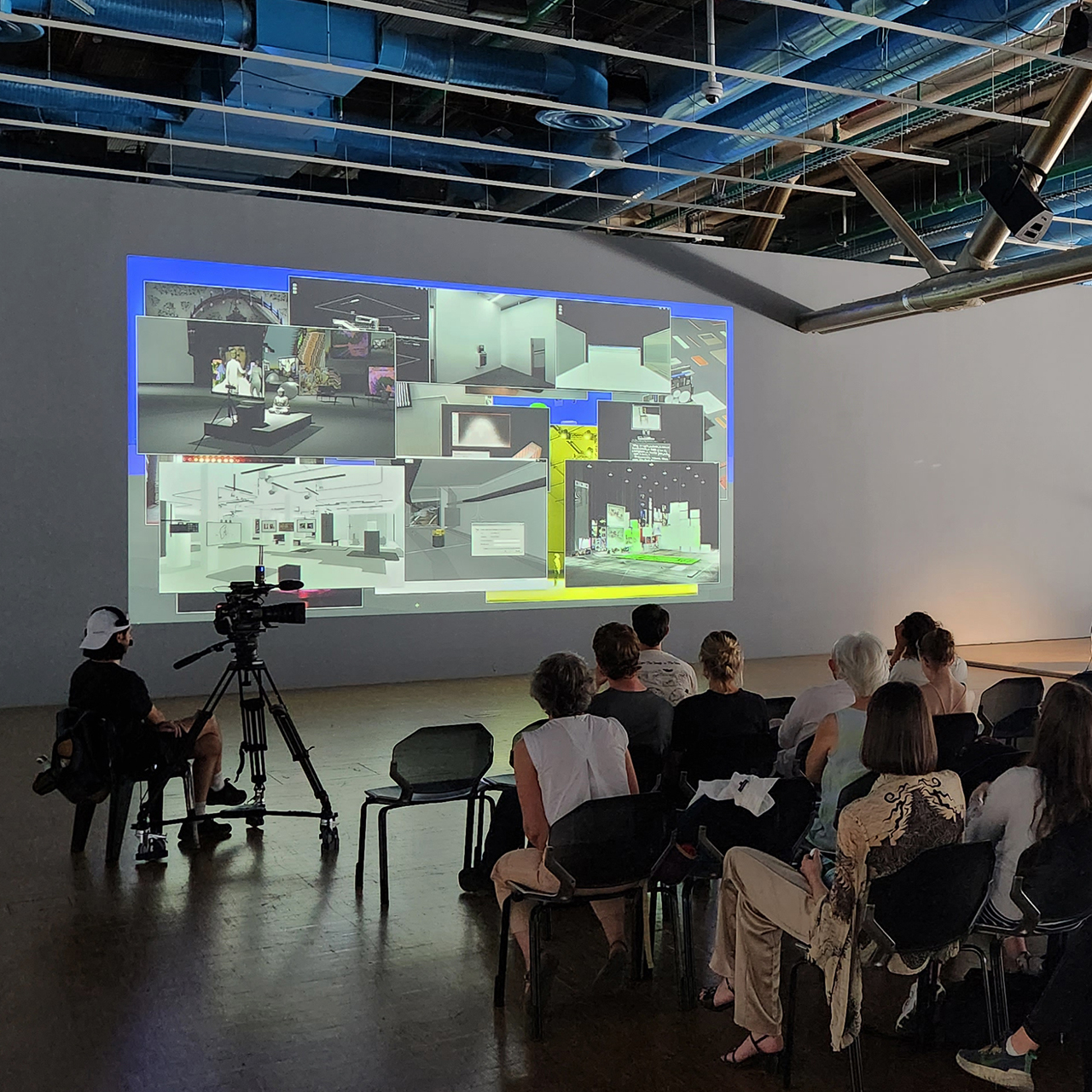
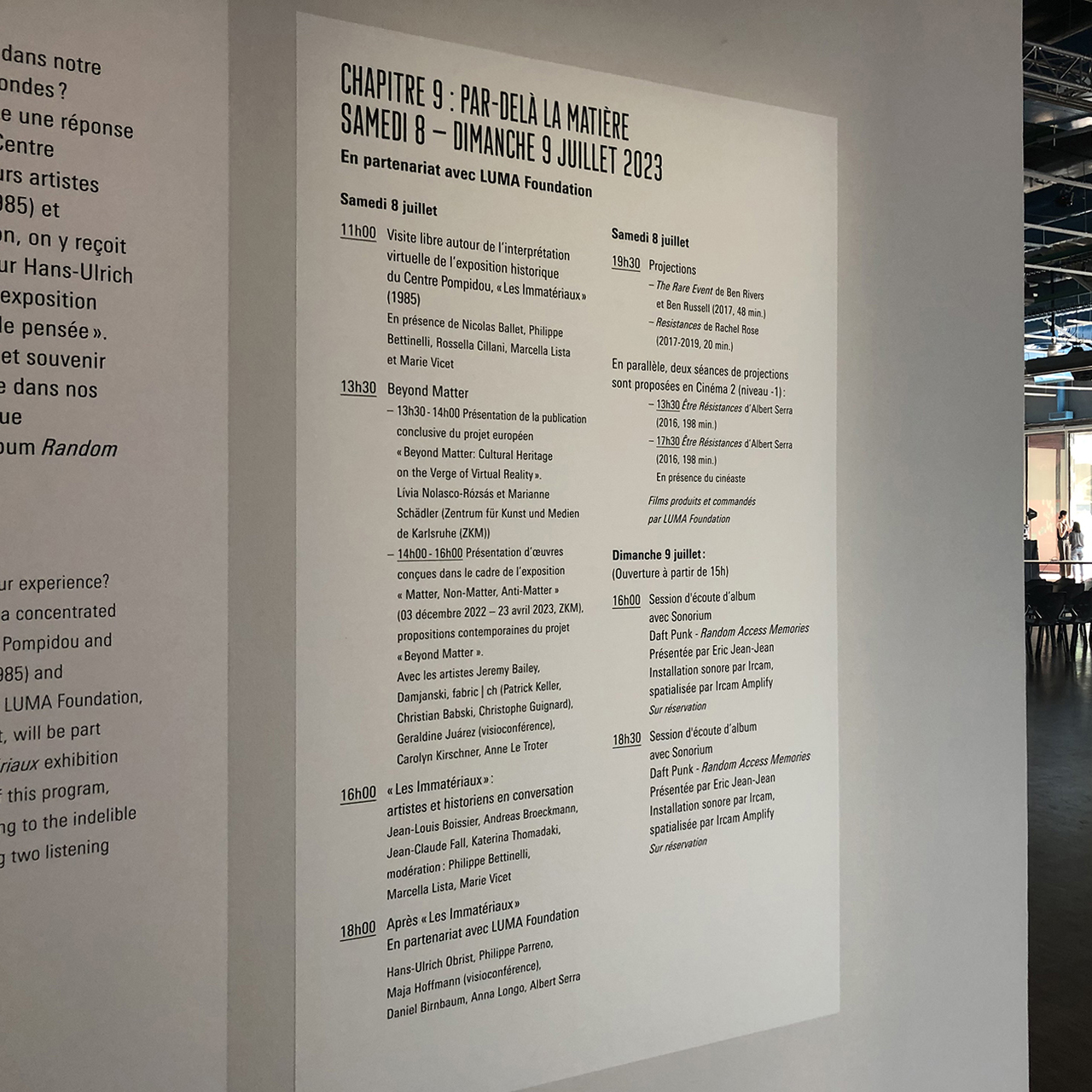
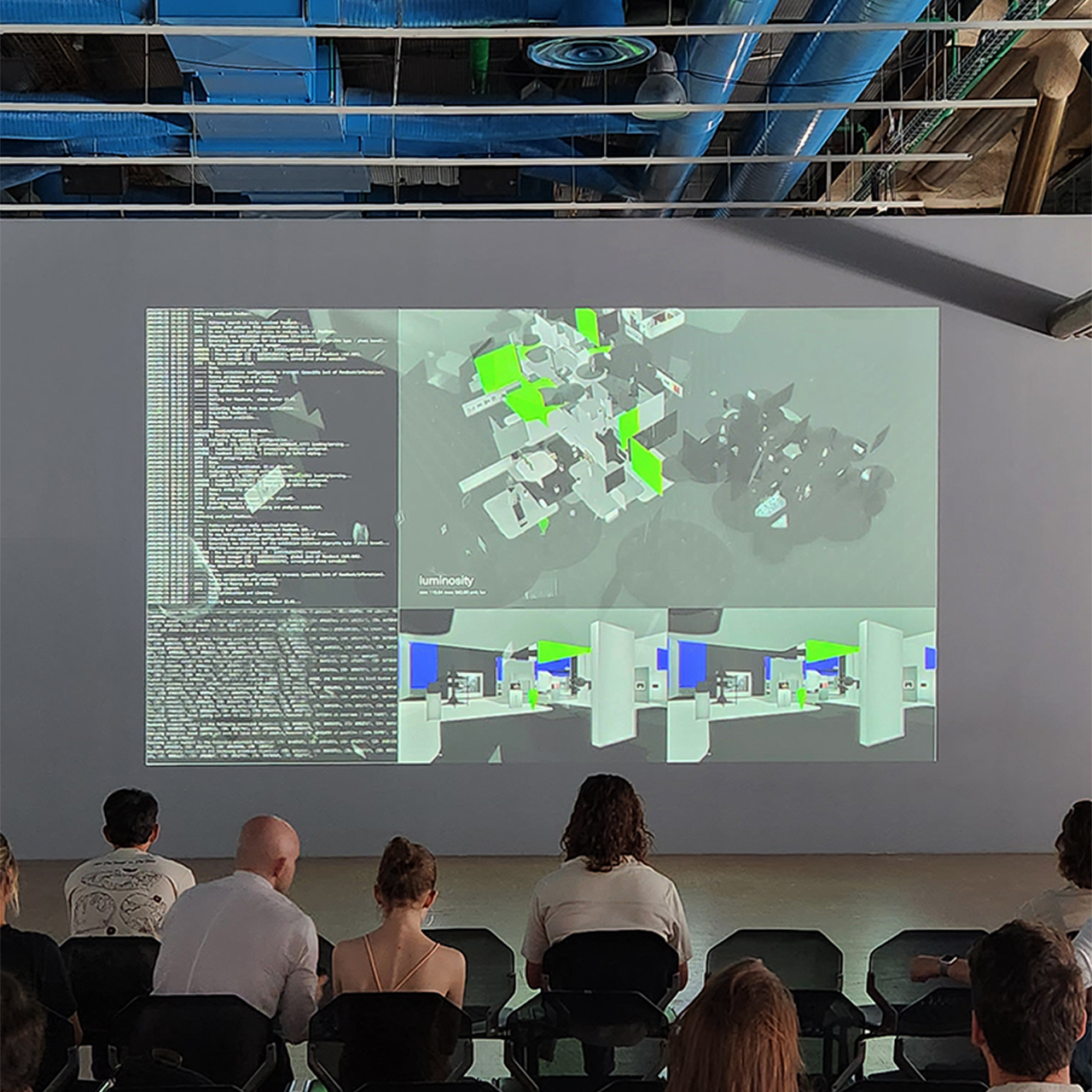
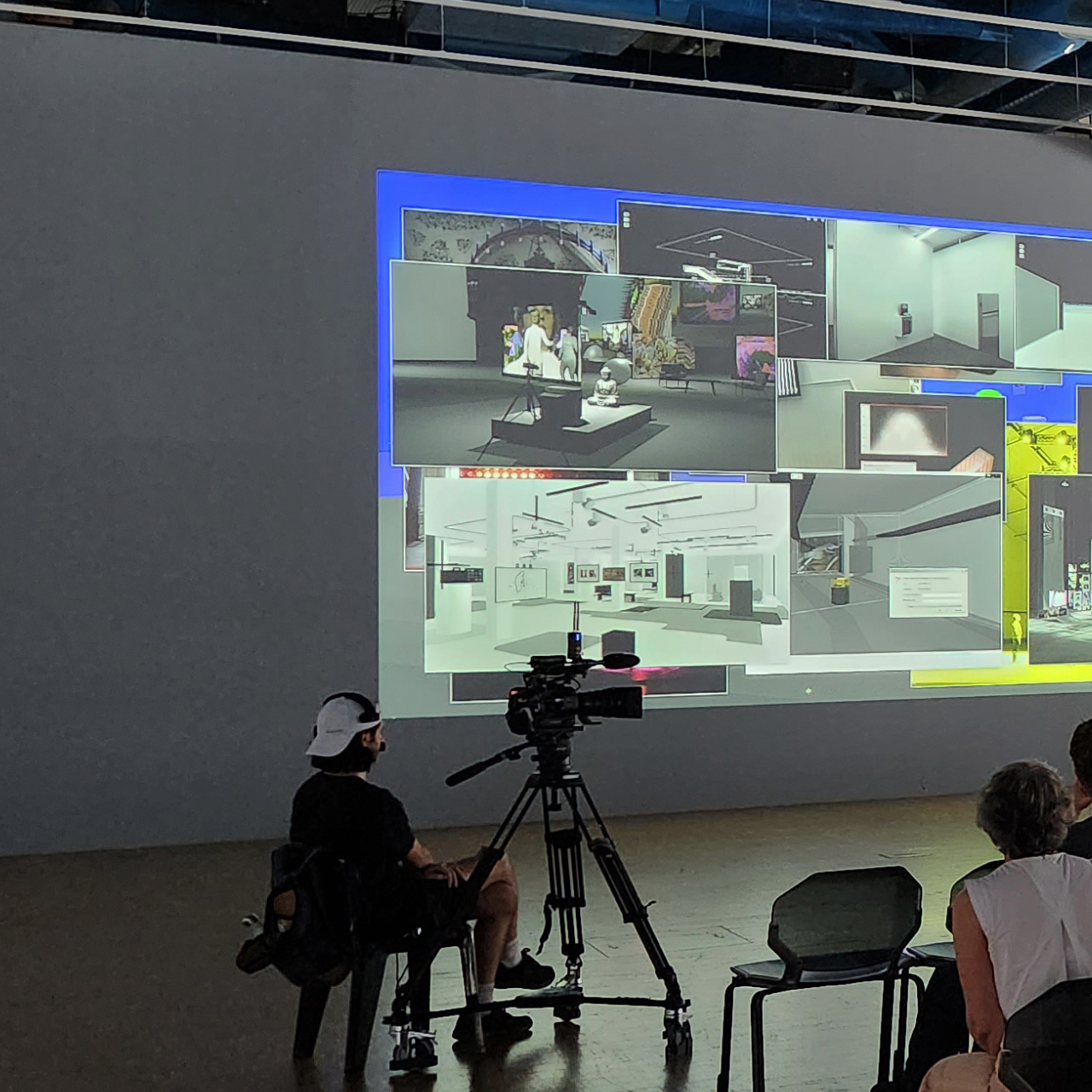
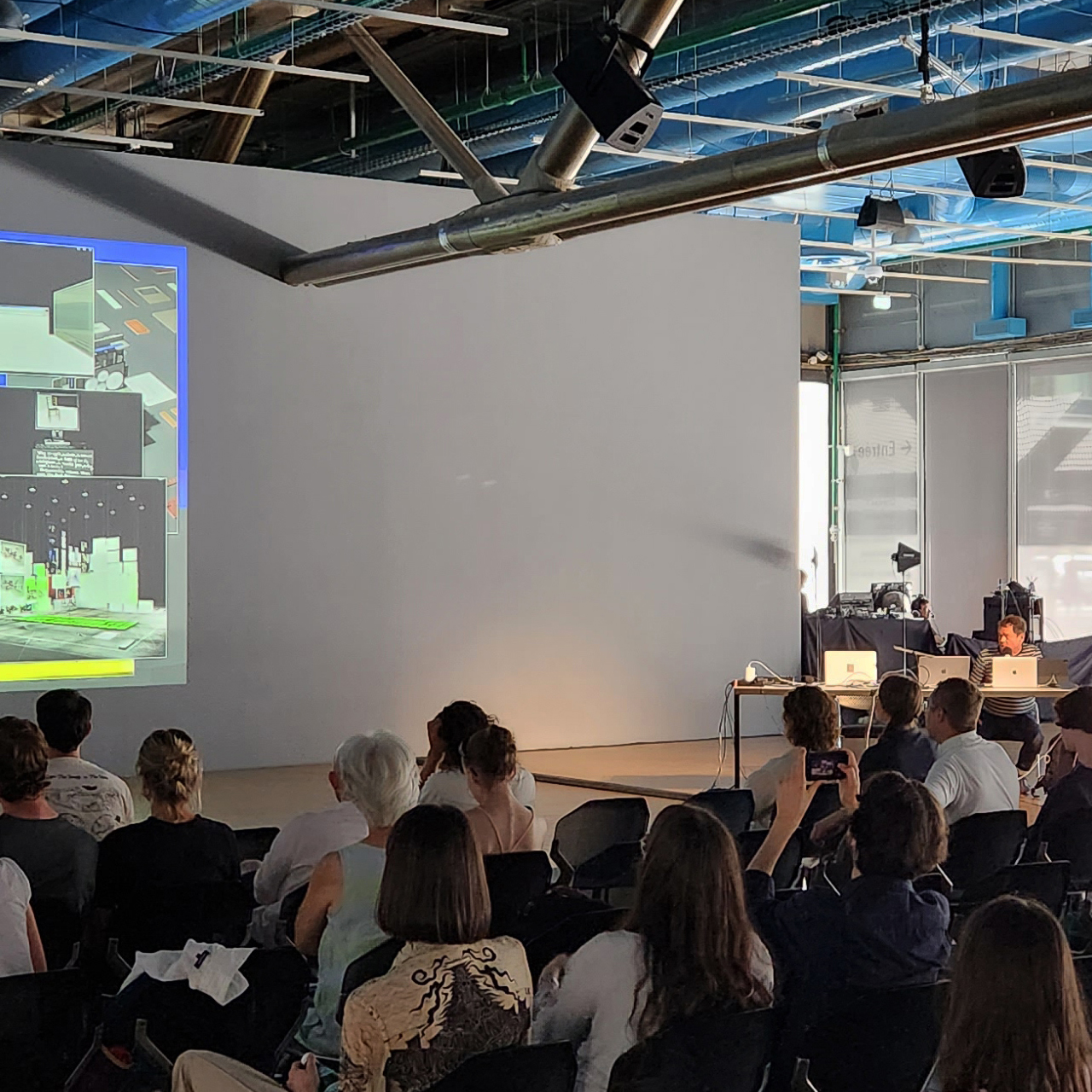
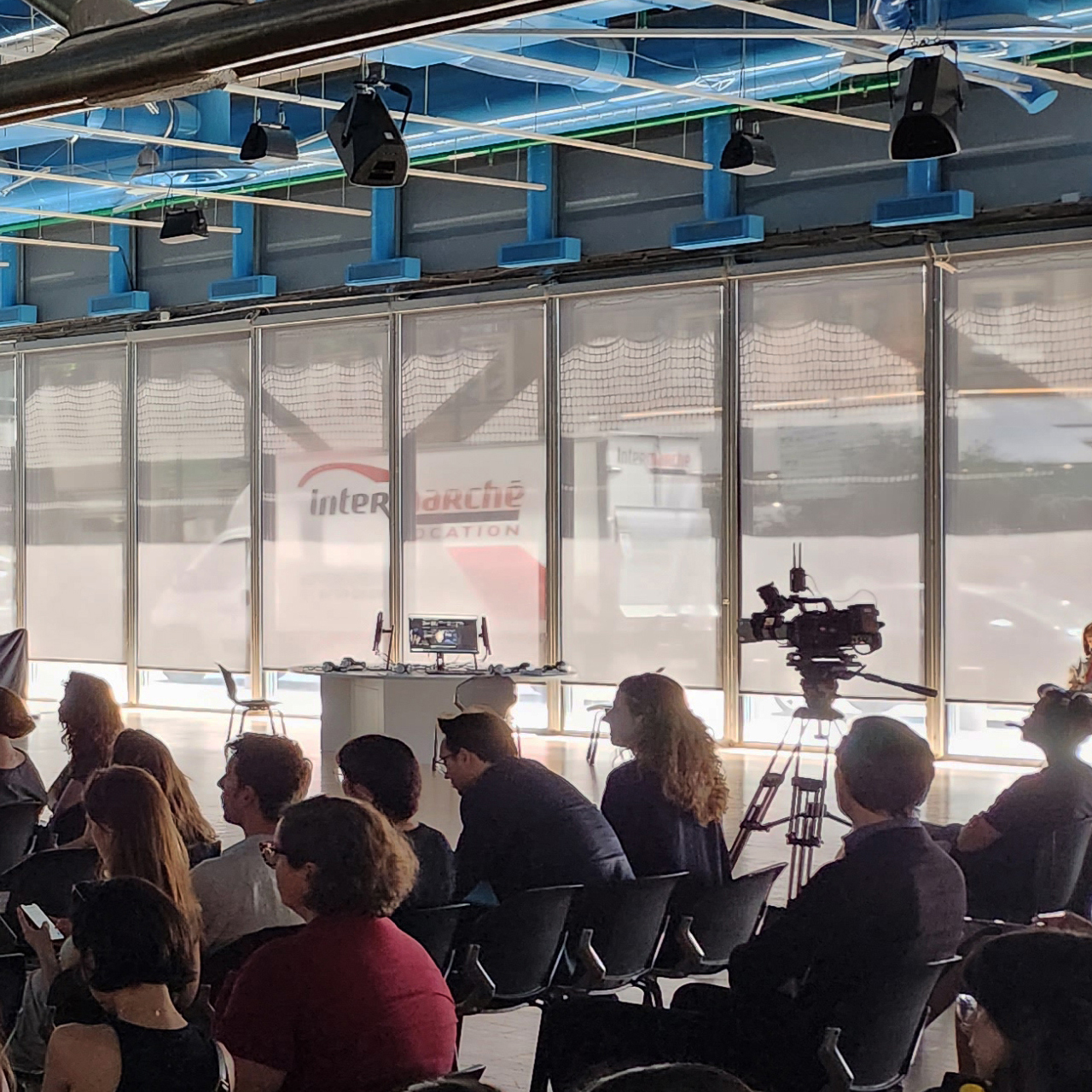
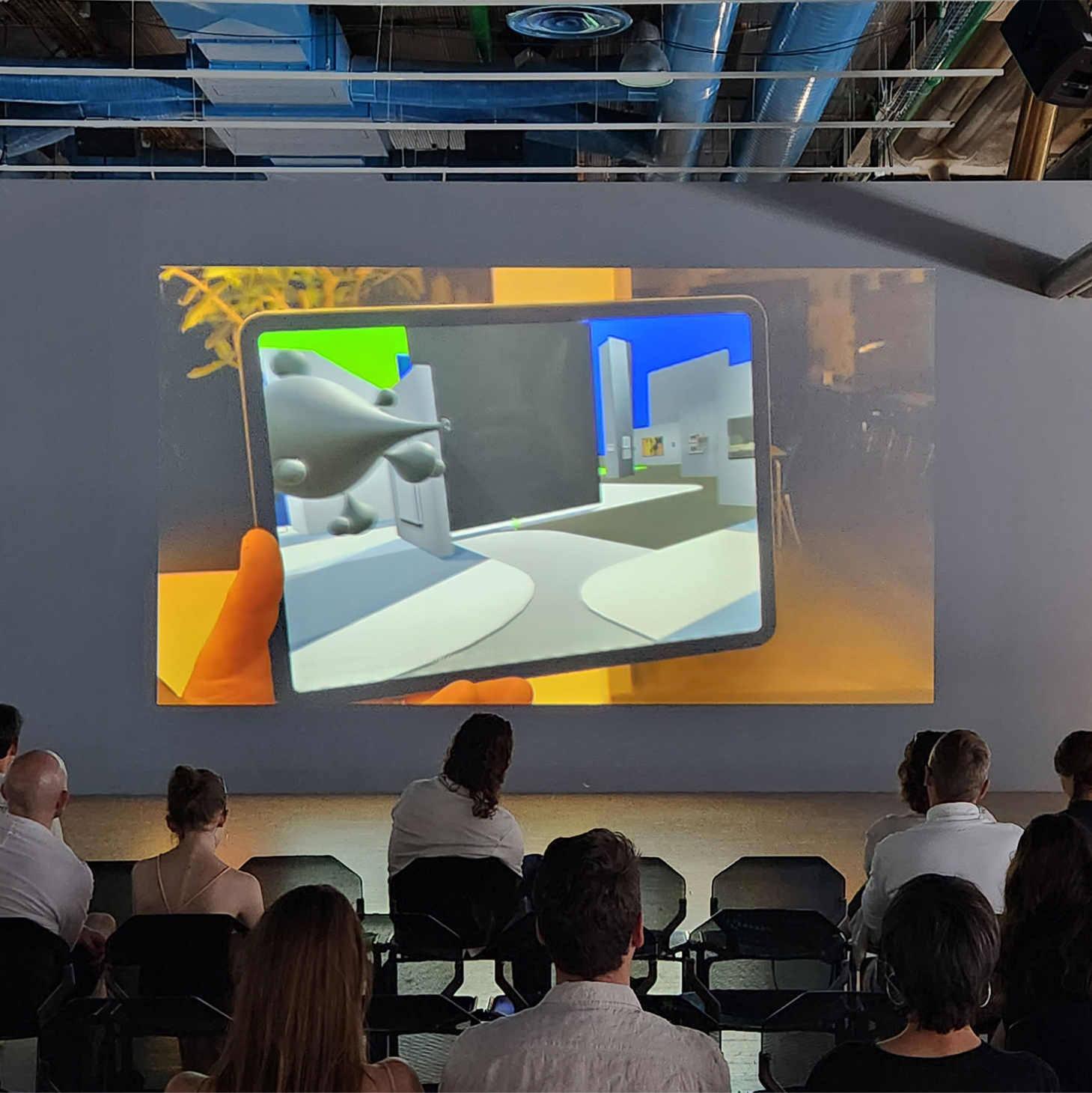
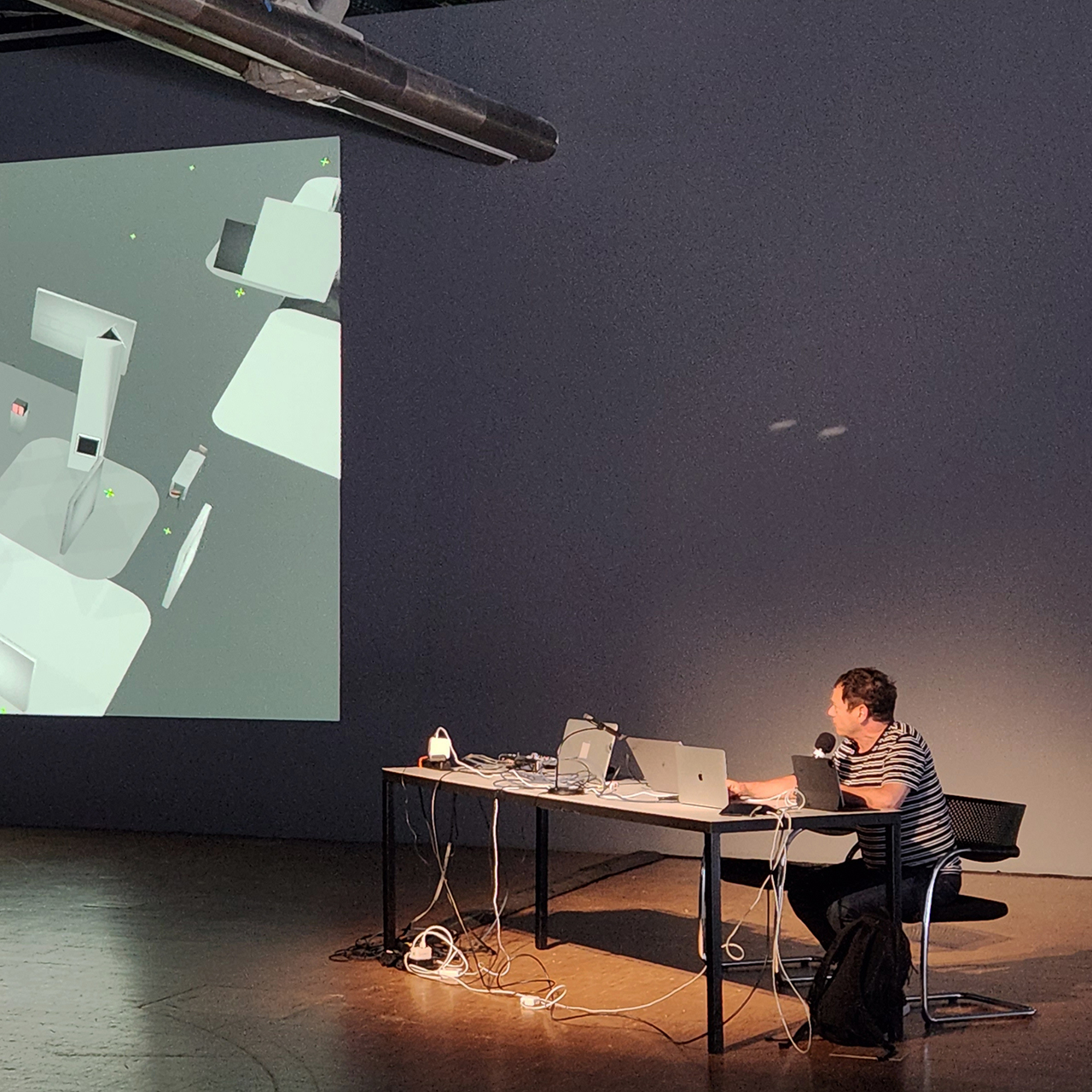
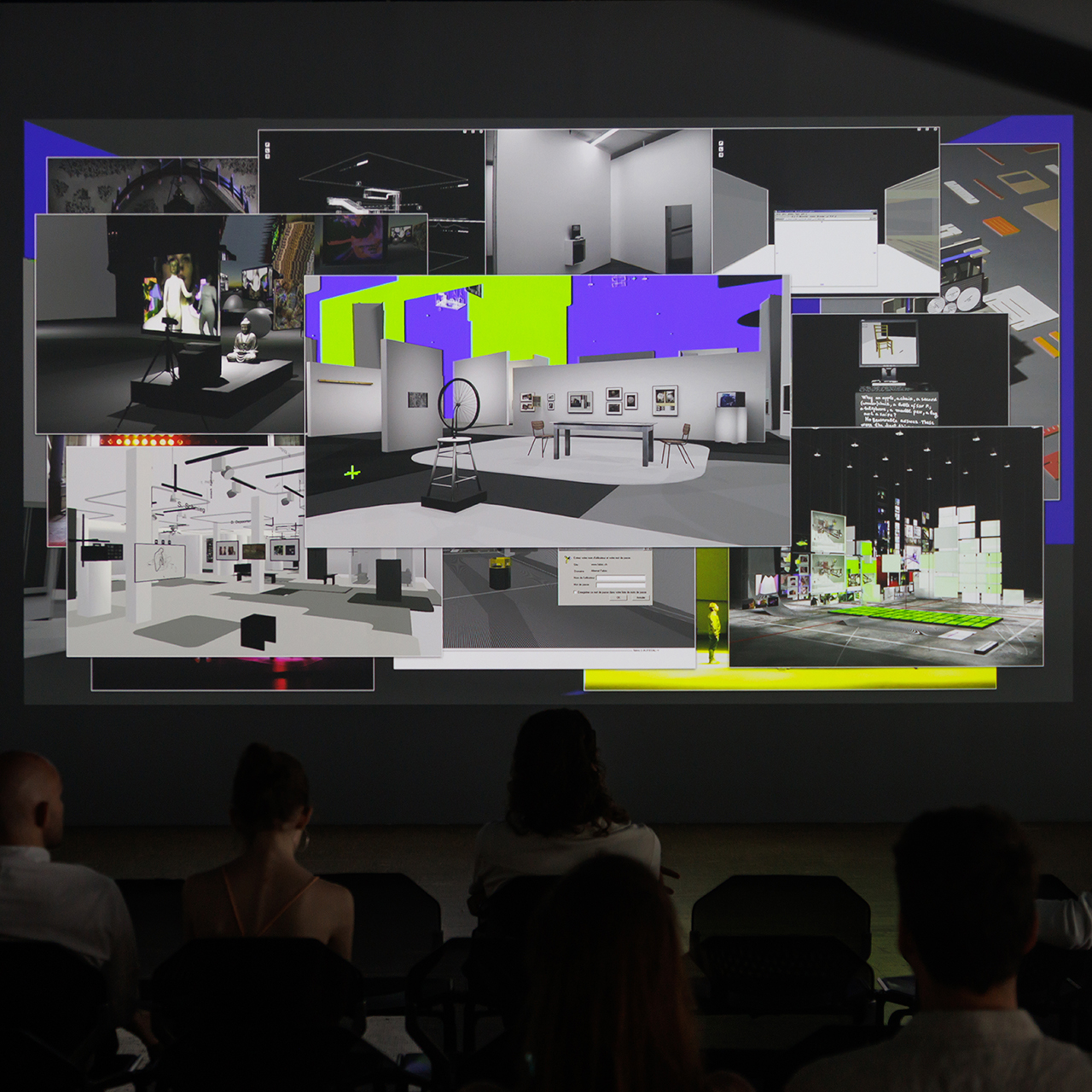
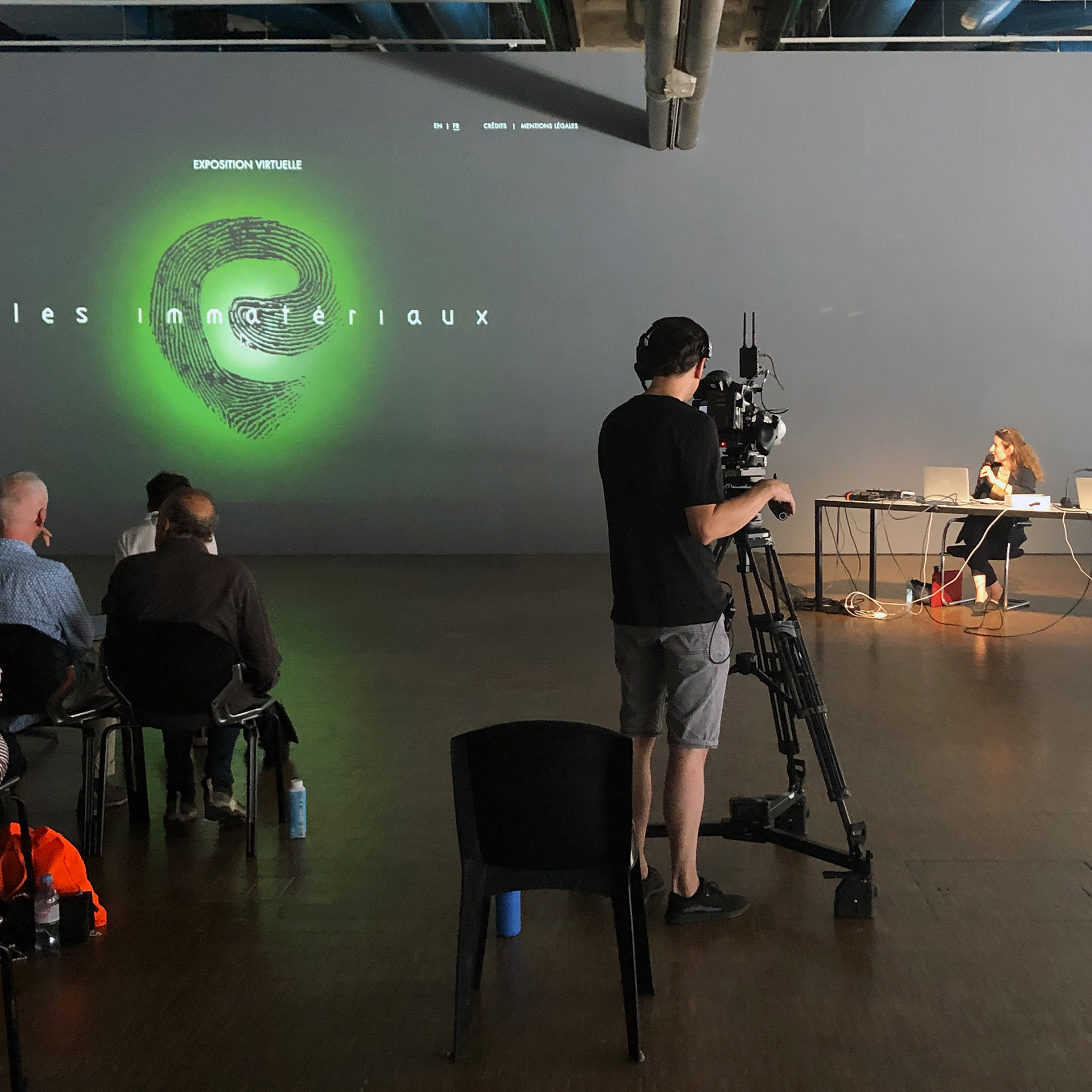
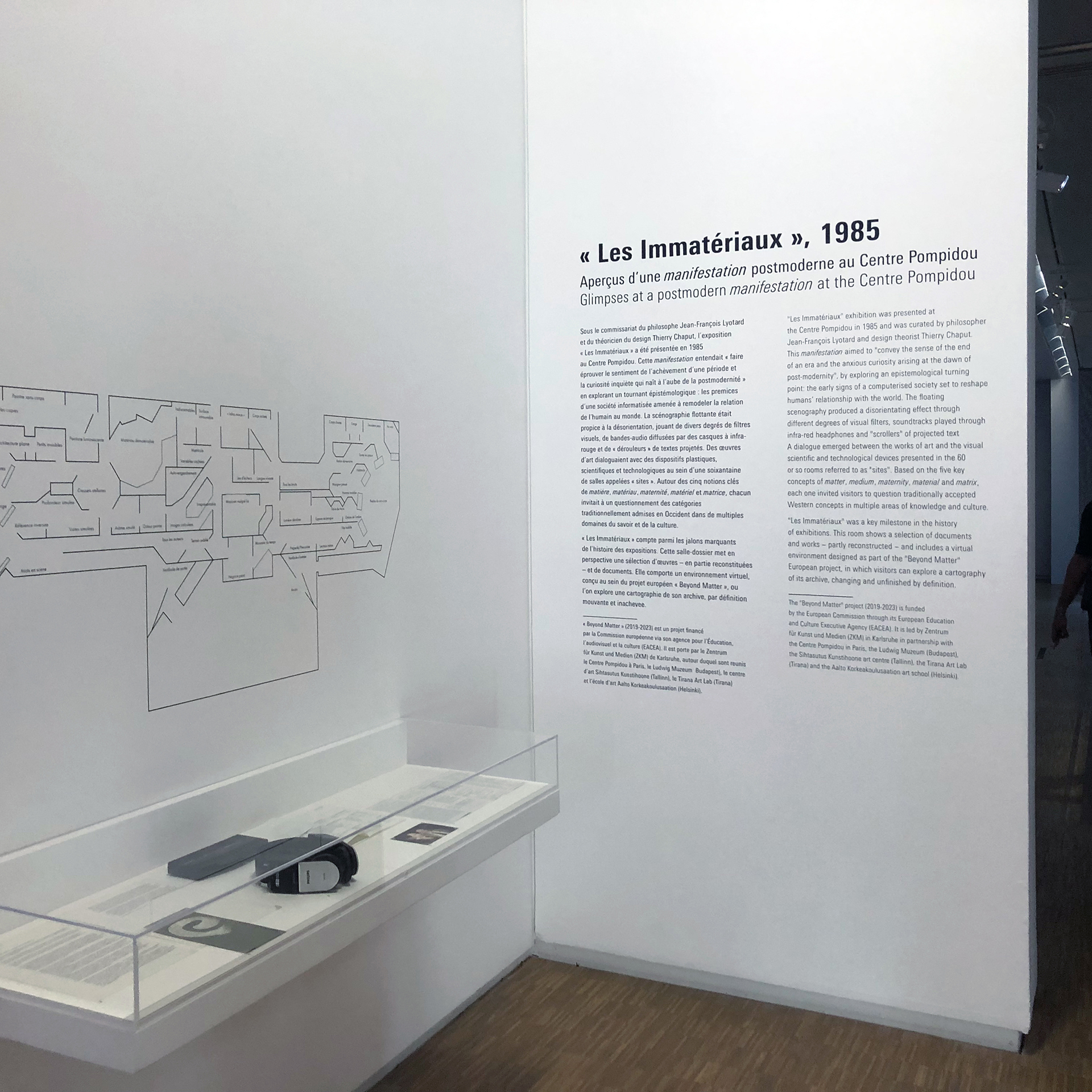
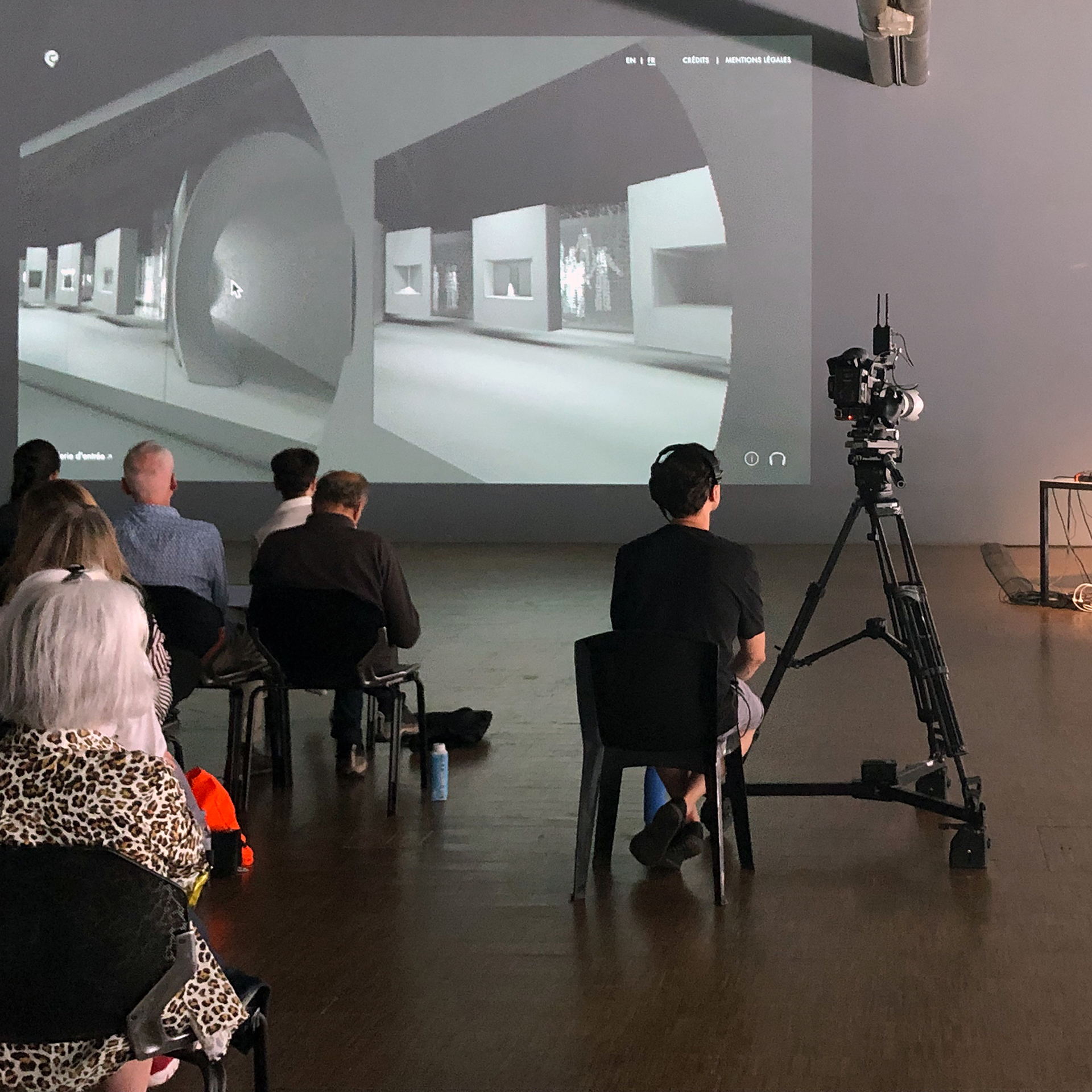
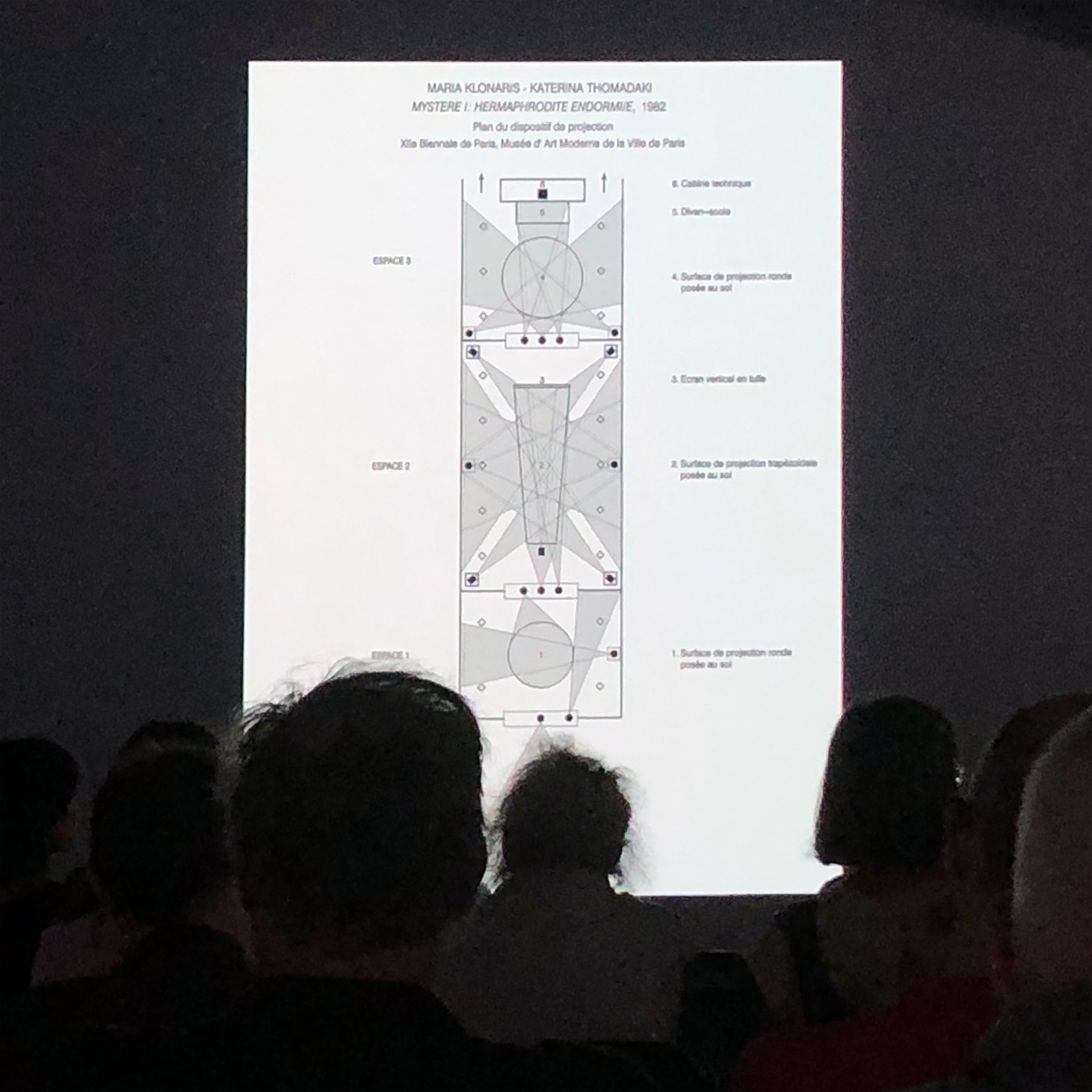
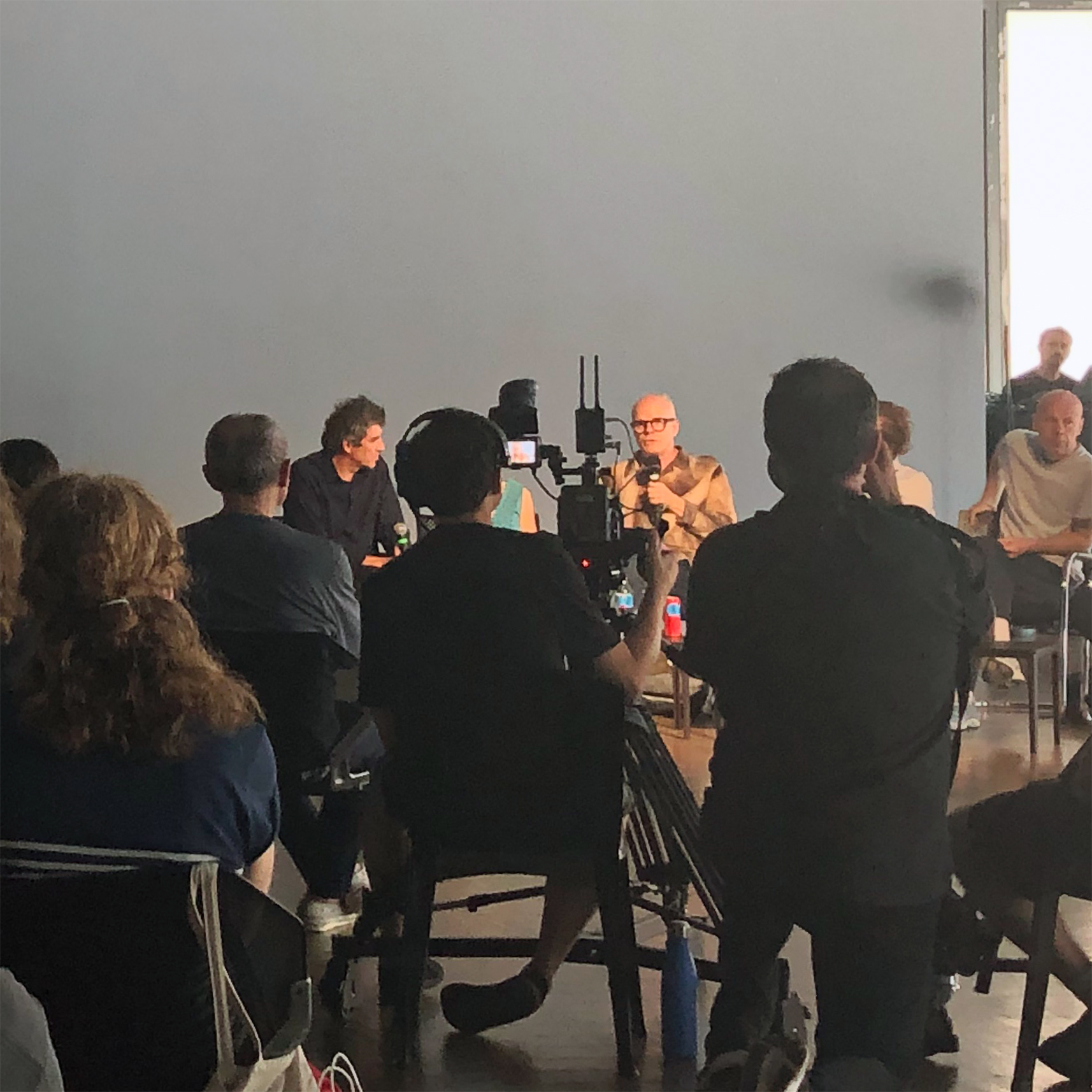
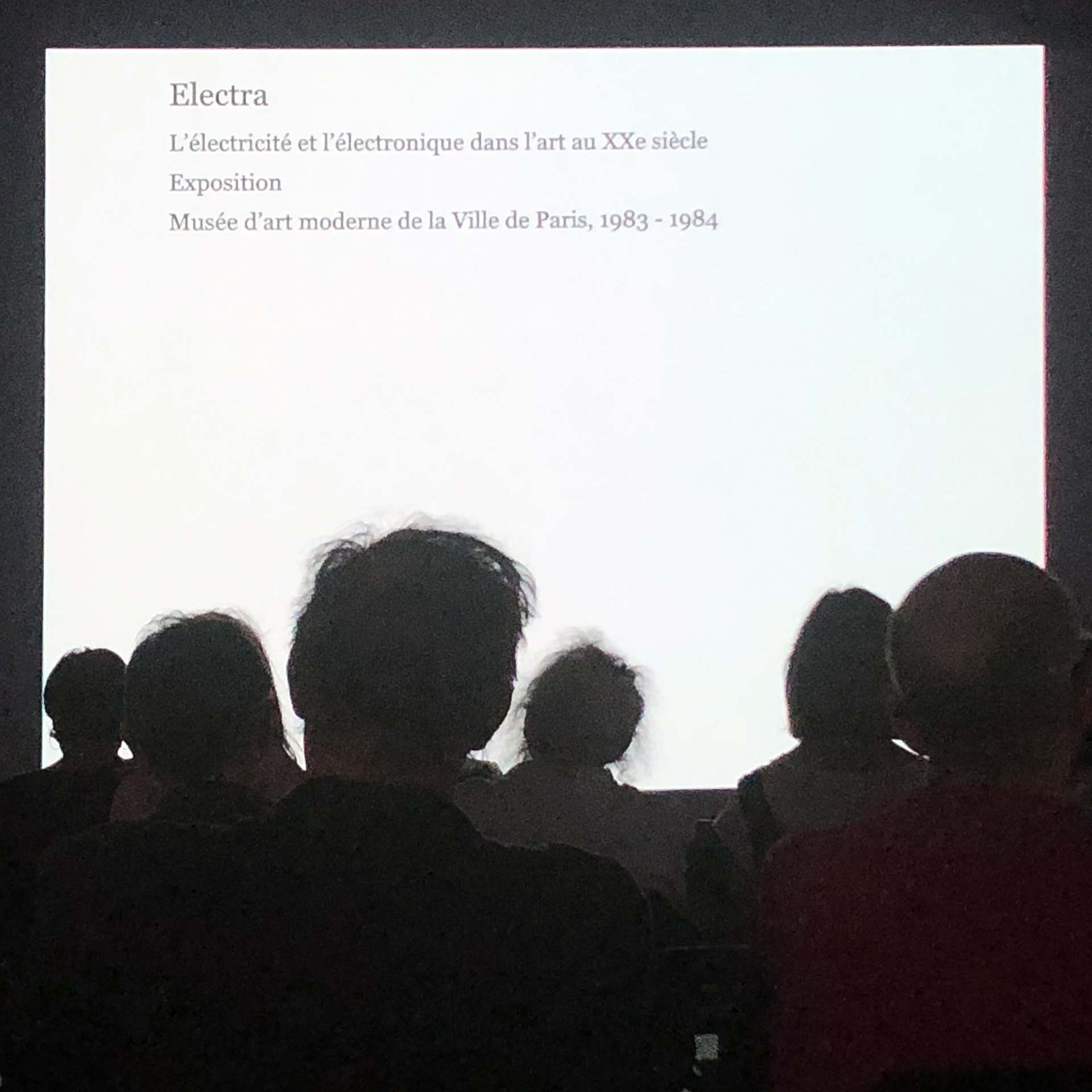
Via Centre Pompidou
-----
Beyond Matter / Par-delà la matière
Moviment, chapter 9
Sat 8 – Sun 9 July 2023

Combining technology and memory, the penultimate chapter of Moviment looks back at two major cultural events in the world of art and music, and the ways in which they can be perpetuated, revived or experienced beyond their materiality and topicality.
In partnership with LUMA Foundation
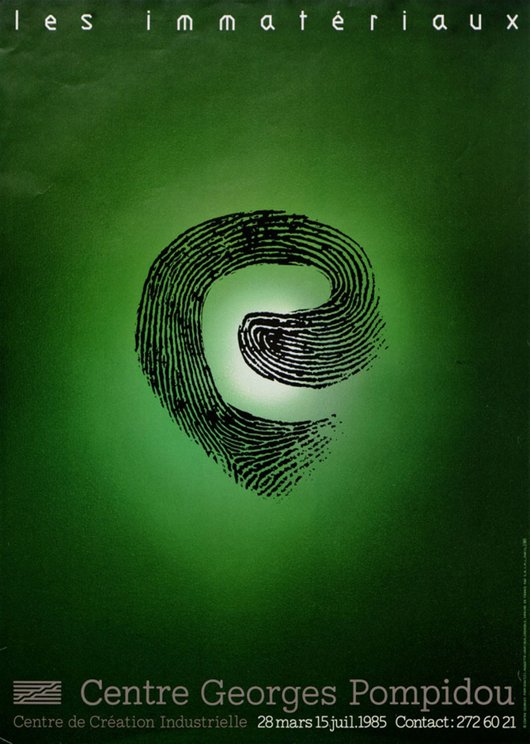
Affiche de l’exposition "Les Immatériaux", 1985 – © Centre Pompidou. Conception graphique : Grafibus.
Retour sur « Les Immatériaux »
Arts plastiques, Nouveaux médias Exposition, rencontres
Organisé par les commissaires Jean-François Lyotard et Thierry Chaput en 1985, « Les Immatériaux » était un essai aux fondements philosophiques adoptant l’exposition comme média ou interface. En faisant dialoguer œuvres d’art, technologies et documents scientifiques, les commissaires interrogeaient la condition humaine à l’ère des nouvelles technologies, dans différents domaines de la vie physique et psychique. La scénographie, particulièrement novatrice, privilégiait la désorientation, la stimulation de tous les sens et l’interactivité. Les visiteurs, dont le parcours n’était pas contraint mais « induit » par des écrans suspendus à l’opacité variable, étaient munis d’un casque diffusant une bande sonore variant au gré de leur déambulation dans la soixantaine de sites et les vingt-six zones audio de l’exposition.
Cette exposition historique a récemment fait l’objet d’une reconstitution virtuelle dans le cadre du projet de recherche « Beyond Matter ».
Exposition en continu, samedi 8 juillet 2023
« Beyond Matter »
Financé par la Commission européenne, le projet de recherche « Beyond Matter: Cultural Heritage on the Verge of Virtual Reality » vise à développer des outils technologiques et théoriques pour la reconstitution virtuelle d’expositions historiques et la documentation d’expositions en cours. Les recherches menées dans le cadre de ce projet ont notamment porté sur deux expositions pionnières : « Iconoclash » (4 mai–1er septembre 2002, ZKM) et « Les Immatériaux » (28 mars–15 juillet 1985, Centre Pompidou).
Lívia Nolasco-Rózsás et Marianne Schädler du Zentrum für Kunst und Medien de Karlsruhe (ZKM) présenteront la publication conclusive du projet européen.
Les artistes Jeremy Bailey, Damjanski, fabric | ch (Patrick Keller, Christian Babski, Christophe Guignard), Geraldine Juárez (en visioconférence), Carolyn Kirschner et Anne Le Troter présenteront ensuite les œuvres qu’ils et elles ont pu concevoir dans le cadre de l’exposition « Matter, Non-Matter, Anti-Matter » (3 décembre 2022–23 avril 2023, ZKM), restituant une partie des résultats du projet « Beyond Matter ».
Samedi 8 juillet 2023, 13h30–16h
« Les Immatériaux » : Artistes et historiens en conversation
Le chercheur Andreas Broeckmann, ainsi que les artistes Katerina Thomadaki, Jean-Louis Boissier et Jean-Claude Fall reviennent sur « Les Immatériaux », exposition pionnière à laquelle ils ont participé.
Séance modérée par Marcella Lista, Philippe Bettinelli et Marie Vicet.
Samedi 8 juillet 2023, 16h-18h

Maria Klonaris, Katerina Thomadaki, "Orlando-Hermaphrodite II", 1985, photographies noir et blanc sur panneau.
Courtesy Katerina Thomadaki.
Après « Les Immatériaux »
Projet porté par le curateur Hans Ulrich Obrist et l’artiste Philippe Parreno avec le soutien de LUMA Foundation, « Résistances » fait écho à l’exposition « Les Immatériaux » imaginée par Jean-François Lyotard. Resté inachevé, ce projet se trouve tout à la fois continué et réimaginé à travers des rencontres et la production de « films de pensée ».
Samedi 8 juillet 2023, 18h–19h30
La conversation se déroulera en français et en anglais, suivie d’une projection des « films de pensée ».
Films de pensée :
Produits et commandés par LUMA Foundation
Courtesy Maja Hoffmann / Luma Foundation Collection
- Être Résistances d’Albert Serra (2016, 198 min.)
« Être Résistances est un film qui résiste à en être un, c'est-à-dire qu'il résiste à la conscience et au langage cinématographique. C'est un film qui traite de théorie, de corps, de bruits, de discours, d'images, de jeu et d'ironie. C'est un film inspiré par son propre sujet invisible : l'exposition inexistante de Lyotard qui devrait résister à la communication. Le film est finalement cette exposition devenue réalité, mais comme un mirage et comme une illusion. » Albert Serra.
Séances, samedi 8 juillet 2023, à 13h30 et 17h30
Introduction par Albert Serra à 17h30
Cinéma 2, niveau –1
- The Rare Event de Ben Rivers et Ben Russell (2017, 48 min.) sous-titrage en français
Tourné dans un studio d'enregistrement parisien au plancher de bois grinçant, lors d'un « forum des idées » inaugural de trois jours consacré aux multiples possibilités de la Résistance – titre de l'exposition de Jean-François Lyotard qui devait faire suite à son exposition « Les Immatériaux » de 1985 –, les collaborateurs occasionnels Ben Rivers et Ben Russell (avec la contribution de l'artiste américain Peter Burr) ont produit ce qui apparaît d'abord comme un document structuraliste d'une discussion philosophique performée qui se transforme lentement en The Rare Event, un portail qui réunit toutes les dimensions en une seule.
- Resistances de Rachel Rose (2017-2019, 20 min.) VO en anglais
Ce court-métrage documente la deuxième rencontre sur les « Résistances » qui a eu lieu en février 2017 à New York, offrant ainsi un aperçu des conversations et des réflexions qui se sont déployées au cours de ce « forum des idées » organisé par Maja Hoffmann. Parmi les intervenants figurent Tyrone Hayes, Isabelle Thomas Fogiel, Reza Negarestani, Ariana Reines, Fred Moten, et de nombreux autres invités.
Projection, samedi 8 juillet 2023, à 19h30
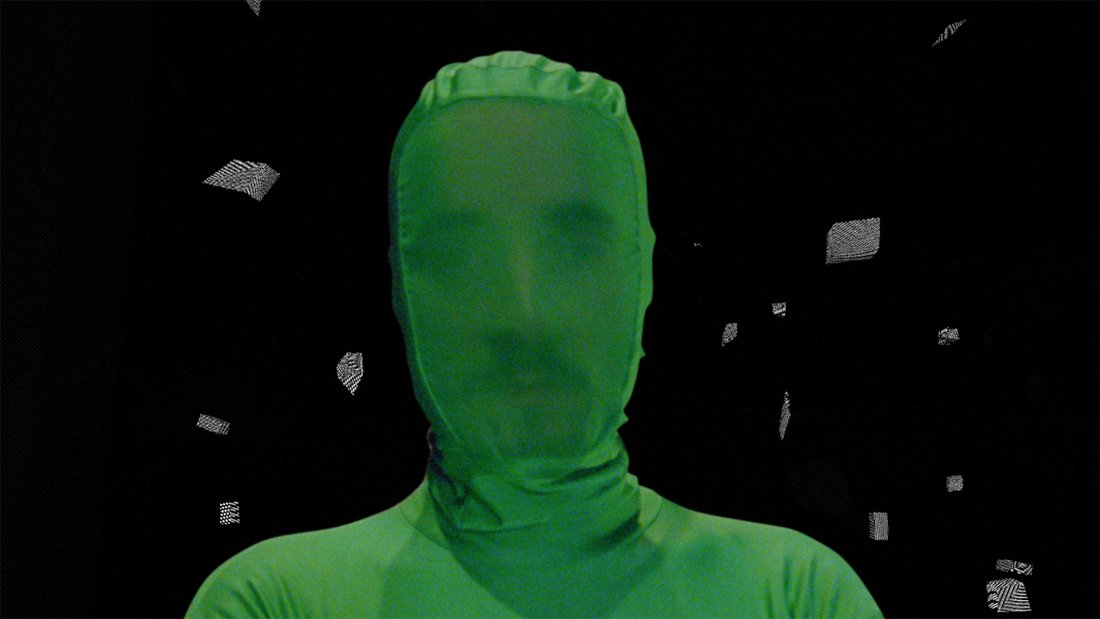
Plan fixe du film "THE RARE EVENT" de Ben Rivers et Ben Russell.
Courtesy Maja Hoffmann / Luma Foundation Collection.
En lien avec la présentation temporaire au Musée, niveau 4, Espace de consultation des collections vidéos, films, sons et œuvres numériques :
« Les Immatériaux » (1985). Aperçus d'une manifestation postmoderne au Centre Pompidou. Du 5 juillet au 30 octobre 2023
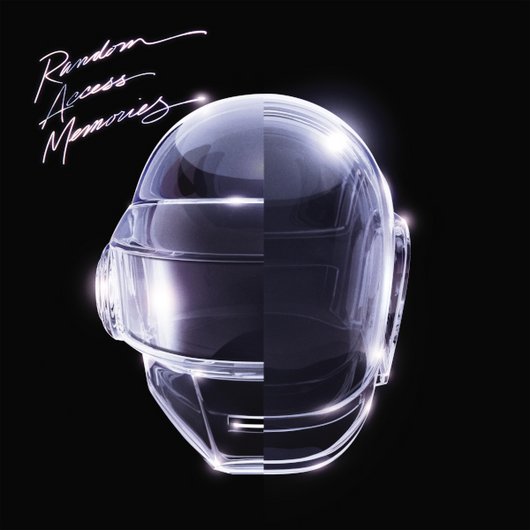
Couverture de l'album Daft Punk, "Random Access Memories" © Zaina
Daft Punk, Random Access Memories
Session d’écoute avec Sonorium
Musique Session d'écoute, rencontre
5 Grammy Awards et un triomphe instantané, un tube planétaire ("Get Lucky"), une production incroyable de précision et des collaborations prestigieuses (Pharrell Williams, Julian Casablancas, Panda Bear, Giorgio Moroder…), Random Access Memories, le dernier album de Daft Punk, a marqué les esprits et installé le duo comme une figure majeure de la pop contemporaine.
À l'occasion de l'édition 10e anniversaire de l'album culte le 12 mai dernier, le Centre Pompidou et Sonorium vous invitent à une session d'écoute de l'album en intégralité, dans des conditions exceptionnelles grâce à une installation sonore immersive réalisée par l’Ircam et une nouvelle technologie immersive développée par sa filiale Ircam Amplify.
Dimanche 9 juillet 2023 – gratuit sur réservation
Sessions précédées d'une introduction par Éric Jean-Jean et suivies d'une discussion avec le public
Day-by-day program
Saturday, 8 July 2023
|
Continuous 11am-1pm |
Performance Christian Falsnaes, First (2016) |
|
Exhibition Reconstitution virtuelle de l'exposition « Les Immatériaux » |
|
| 1:30pm-2pm |
Meeting « Beyond Matter » Présentation de la publication conclusive du projet européen « Beyond Matter: Cultural Heritage on the Verge of Virtual Reality » |
| 1:30pm-5pm |
Screening Après « Les Immatériaux » : Films de pensée Être Résistances d’Albert Serra (2016, 198 min.) |
| 2pm-4pm |
Meeting « Beyond Matter » Présentation d'œuvres conçues dans le cadre de l'exposition « Matter, Non-matter, Anti-Matter » Avec les artistes Jeremy Bailey, Damjanski, fabric | ch (Patrick Keller, Christian Babski, Christophe Guignard), Geraldine Juárez (en visioconférence), Carolyn Kirschner et Anne Le Troter |
| 4pm-6pm |
Meeting « Les Immatériaux » : Artistes et historiens en conversation Avec Andreas Broeckmann, Katerina Thomadaki, Jean-Louis Boissier et Jean-Claude Fall Modérée par Marcella Lista, Philippe Bettinelli et Marie Vicet (Centre Pompidou) |
| 5:30pm-9pm |
Screening Après « Les Immatériaux » : Films de pensée Être Résistances d’Albert Serra (2016, 198 min.) En présence du cinéaste |
| 6pm-7:30pm |
Meeting Après « Les Immatériaux » : Rencontre en partenariat avec LUMA Foundation Avec Hans Ulrich Obrist, Philippe Parreno, Daniel Birnbaum, Anna Longo, Maja Hoffmann (en visioconférence) et Albert Serra |
| 7:30pm-9pm |
>Screening Après « Les Immatériaux » : Films de pensée
|
Sunday, 9 July 2023
|
Reconstitution virtuelle de l'exposition « Les Immatériaux »
|
Closing of the gallery 3 at the beginning of the day |
|
Continuous 3pm-9pm |
Performance Christian Falsnaes, First (2016) |
|
4pm-6pm 6:30pm-8:30pm |
Listening session, meeting Daft Punk, Random Access memories Introduction par Éric Jean-Jean Session d'écoute Discussion avec le public |
Guests
|
Hans Ulrich ObristVisual arts
|
Philippe ParrenoVisual arts
|
|
Jean-Louis BoissierNew media
|
Katerina ThomadakiNew media
|
Also in the presence of:
Jeremy Bailey, Daniel Birnbaum, Andreas Broeckmann, Damjanski, fabric | ch (Patrick Keller, Christian Babski, Christophe Guignard), Jean-Claude Fall, Maja Hoffmann, Éric Jean-Jean, Geraldine Juárez, Carolyn Kirschner, Anna Longo, Marianne Schädler, Albert Serra, Anne Le Troter.
Tuesday, July 18. 2023
fabric | ch at Centre Pompidou for Moviment (Ch. 9, "Par-delà la matière") | #hybrid #exhibition #centrepompidou #matter #non-matter #LesImmatériaux
Note: fabric | ch presented its recent works at the Centre Pompidou in early July, as part of the Moviment program of exhibitions/performances/conferences/projections. We took part in Chapter 9: Beyond Matter.
The focus of the weekend was a return to the historic exhibition "Les Immatériaux" (1985, cur. T. Chaput & J.F. Lyotard) and the contemporary questioning of the postmodern period.
Participants included artists who took part in Les Immatériaux (J.-L. Boissier, K. Thomadaki, J.-C. Fall), as well as contemporary curators such as H.-U. Obrist and D. Birnbaum, so as artists and filmmakers P. Parreno, A. Serra and philosopher A. Longo.
Via @ptrckkllr
-----
Thursday, June 29. 2023
Atomized (re-)Staging by fabric | ch at Centre Pompidou | #exhibitions #digital #revival #iconoclash #immatériaux
Note: At the invitation of Macella Lista and Livia Nolasco-Roszas (curators), fabric | ch presents Atomized (re-)Staging during the Moviment festival-exhibition at the Centre Pompidou in Paris, as part of a weekend devoted to a return to the landmark exhibition Les Immatériaux (which took place at Beaubourg in 1985).
Via @ptrckkllr and @beyondmatereu (research project & exhibition: Beyond Matter)
-----
fabric | rblg
This blog is the survey website of fabric | ch - studio for architecture, interaction and research.
We curate and reblog articles, researches, writings, exhibitions and projects that we notice and find interesting during our everyday practice and readings.
Most articles concern the intertwined fields of architecture, territory, art, interaction design, thinking and science. From time to time, we also publish documentation about our own work and research, immersed among these related resources and inspirations.
This website is used by fabric | ch as archive, references and resources. It is shared with all those interested in the same topics as we are, in the hope that they will also find valuable references and content in it.
Quicksearch
Categories
Calendar
|
|
April '24 | |||||
| Mon | Tue | Wed | Thu | Fri | Sat | Sun |
| 1 | 2 | 3 | 4 | 5 | 6 | 7 |
| 8 | 9 | 10 | 11 | 12 | 13 | 14 |
| 15 | 16 | 17 | 18 | 19 | 20 | 21 |
| 22 | 23 | 24 | 25 | 26 | 27 | 28 |
| 29 | 30 | |||||

